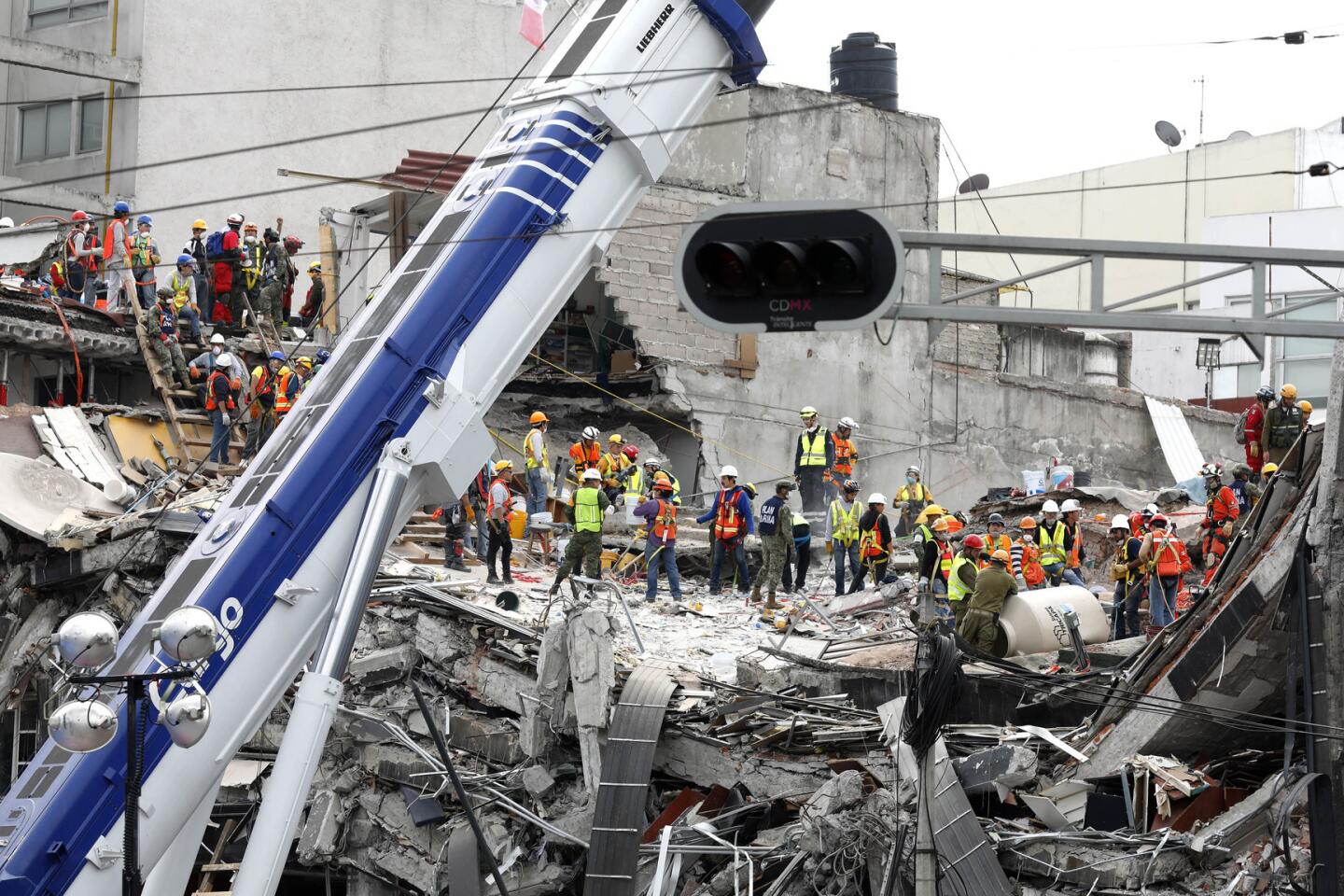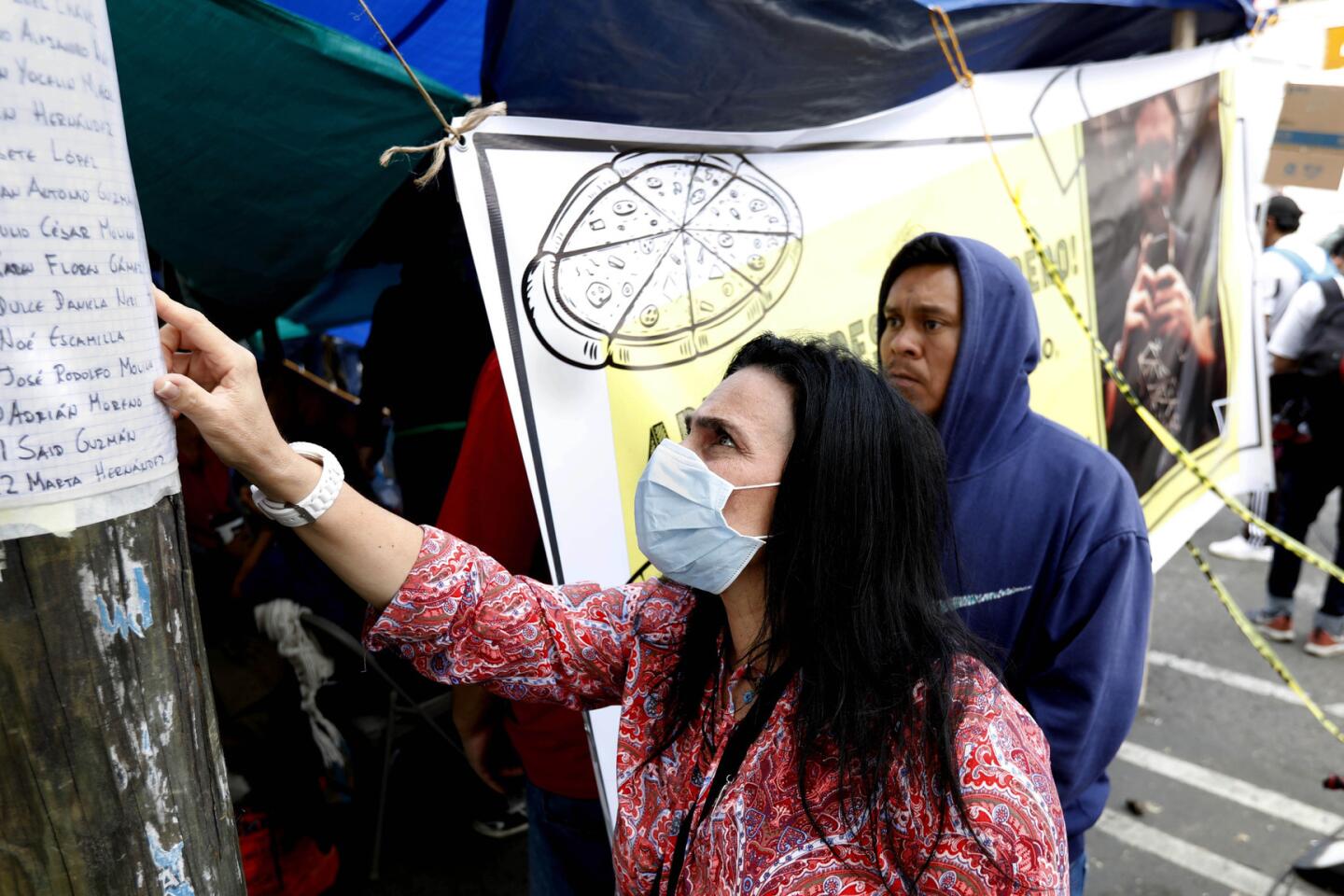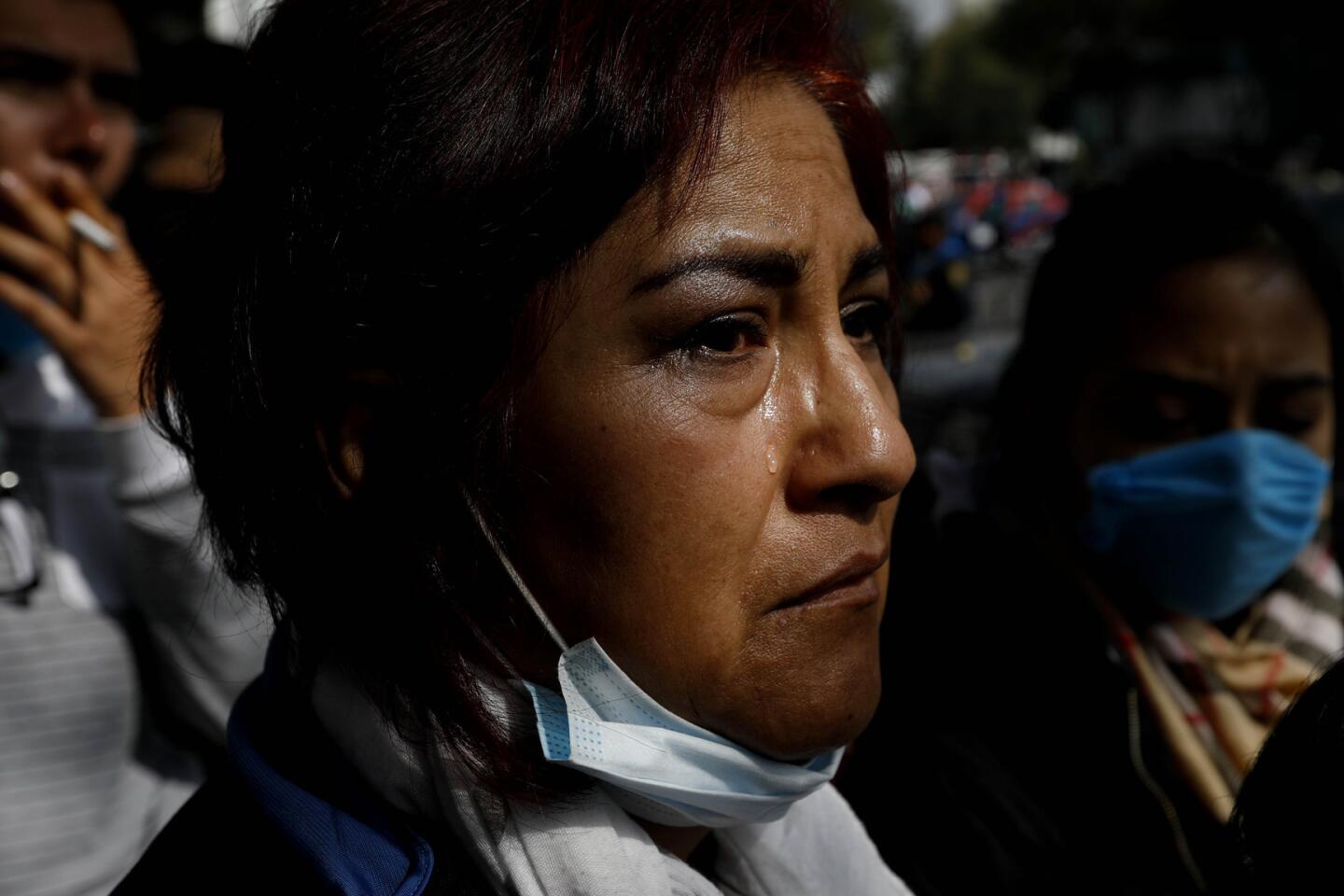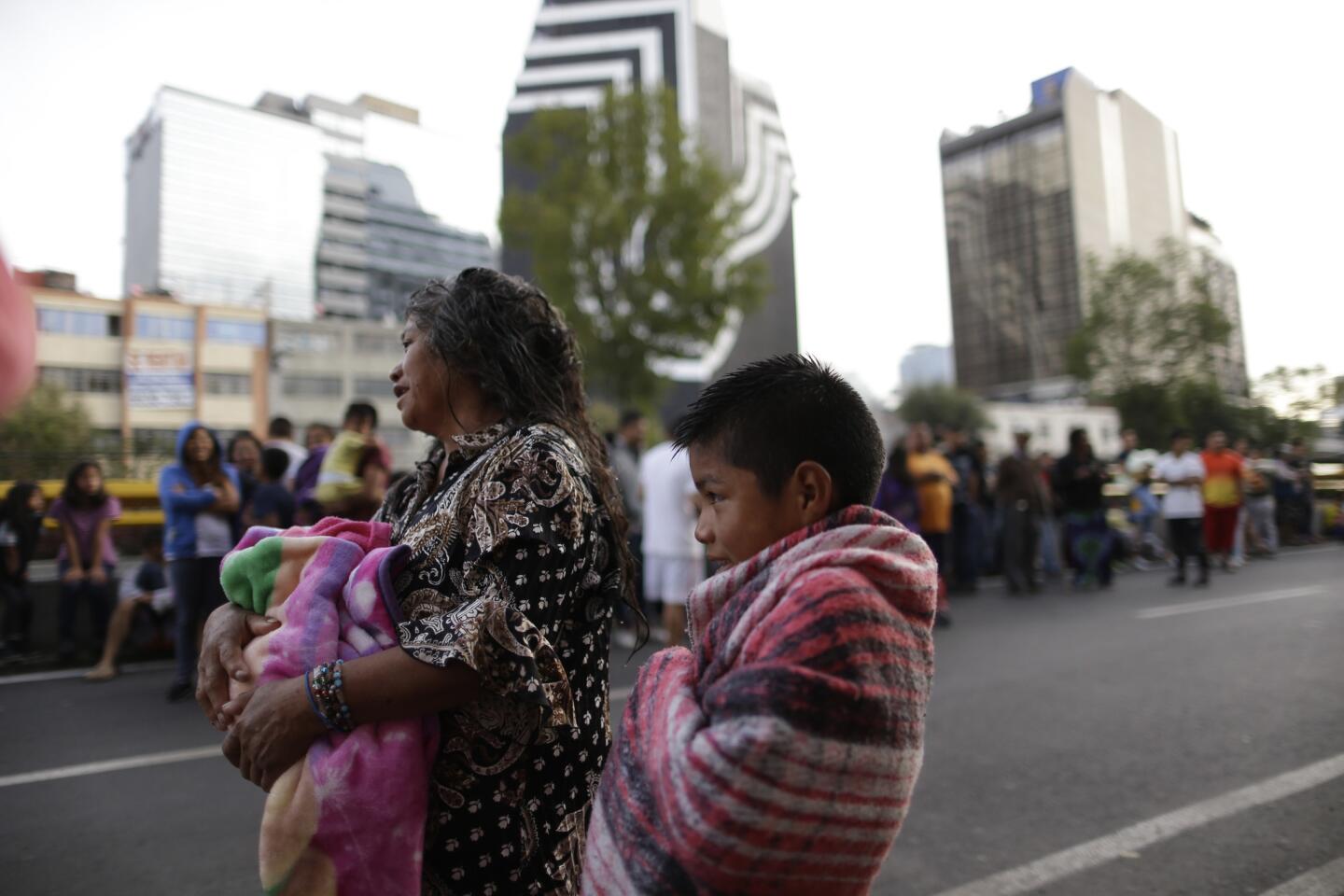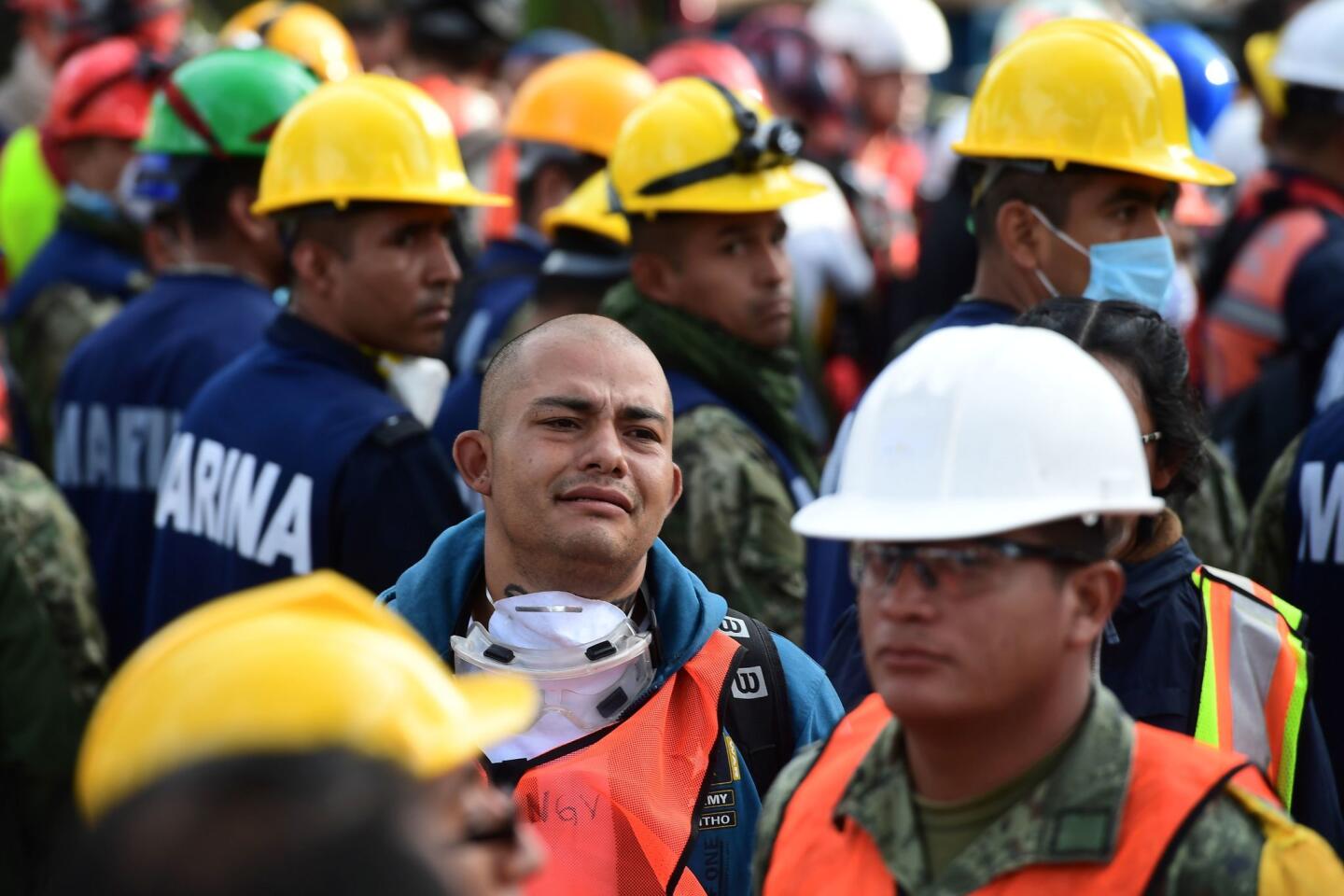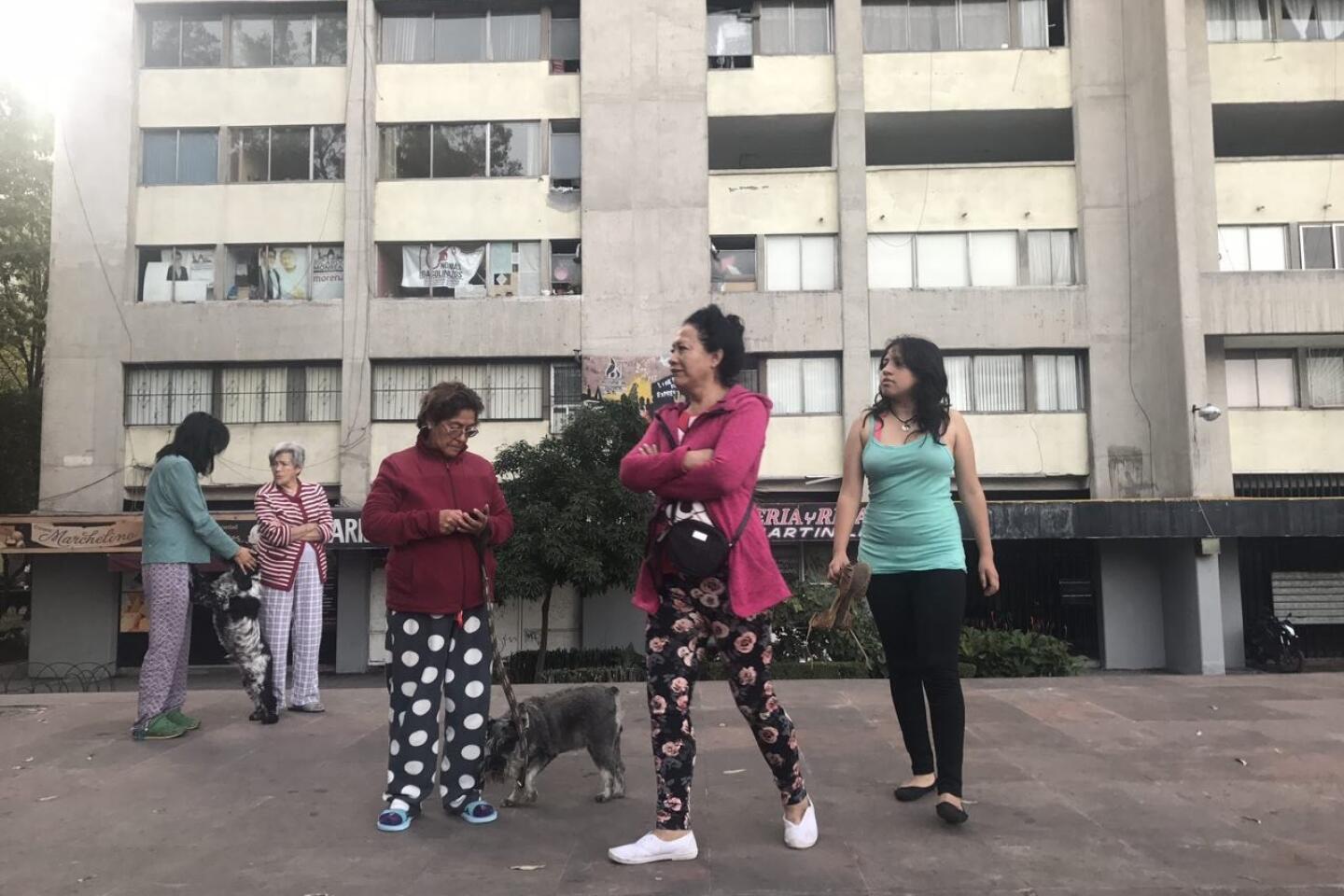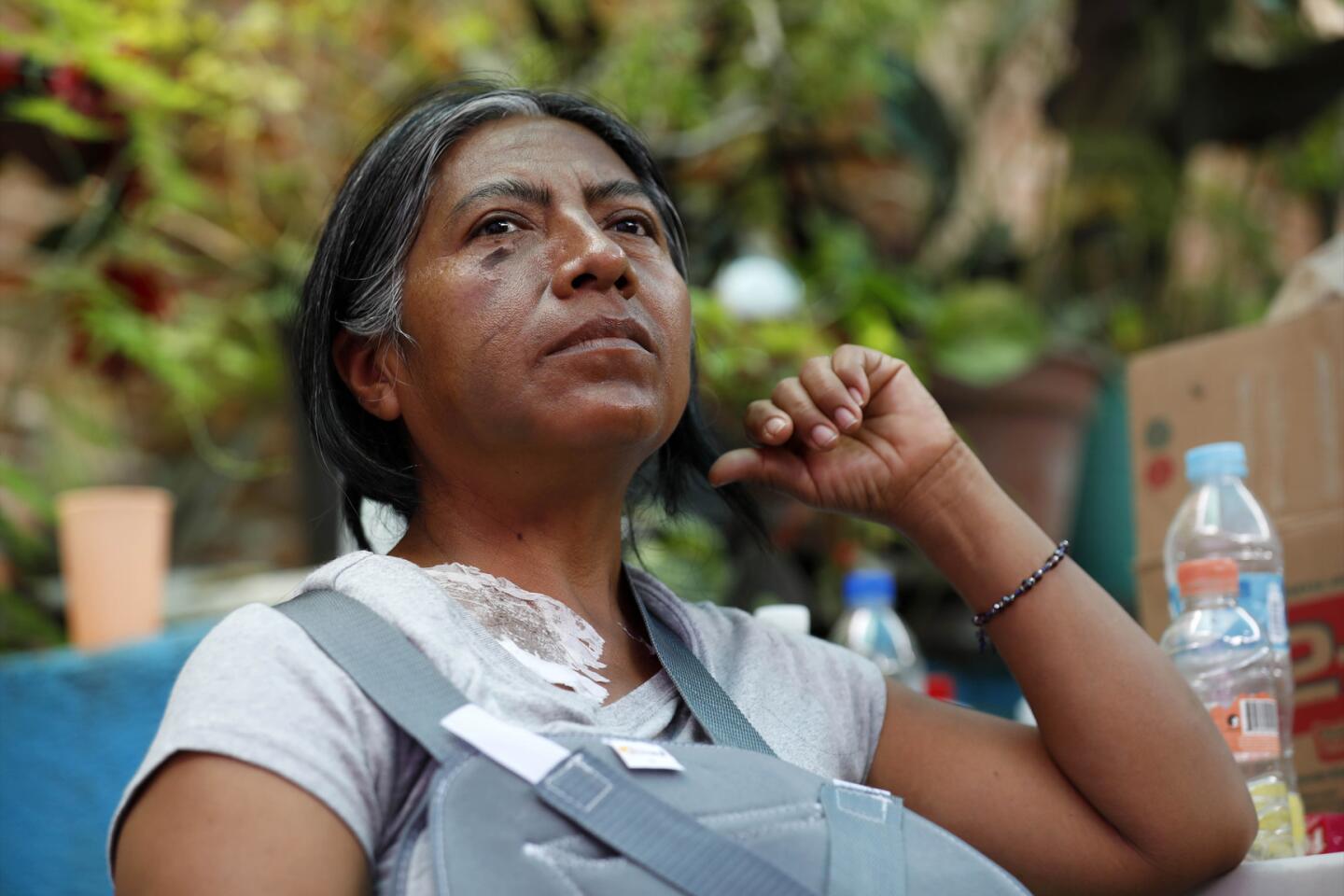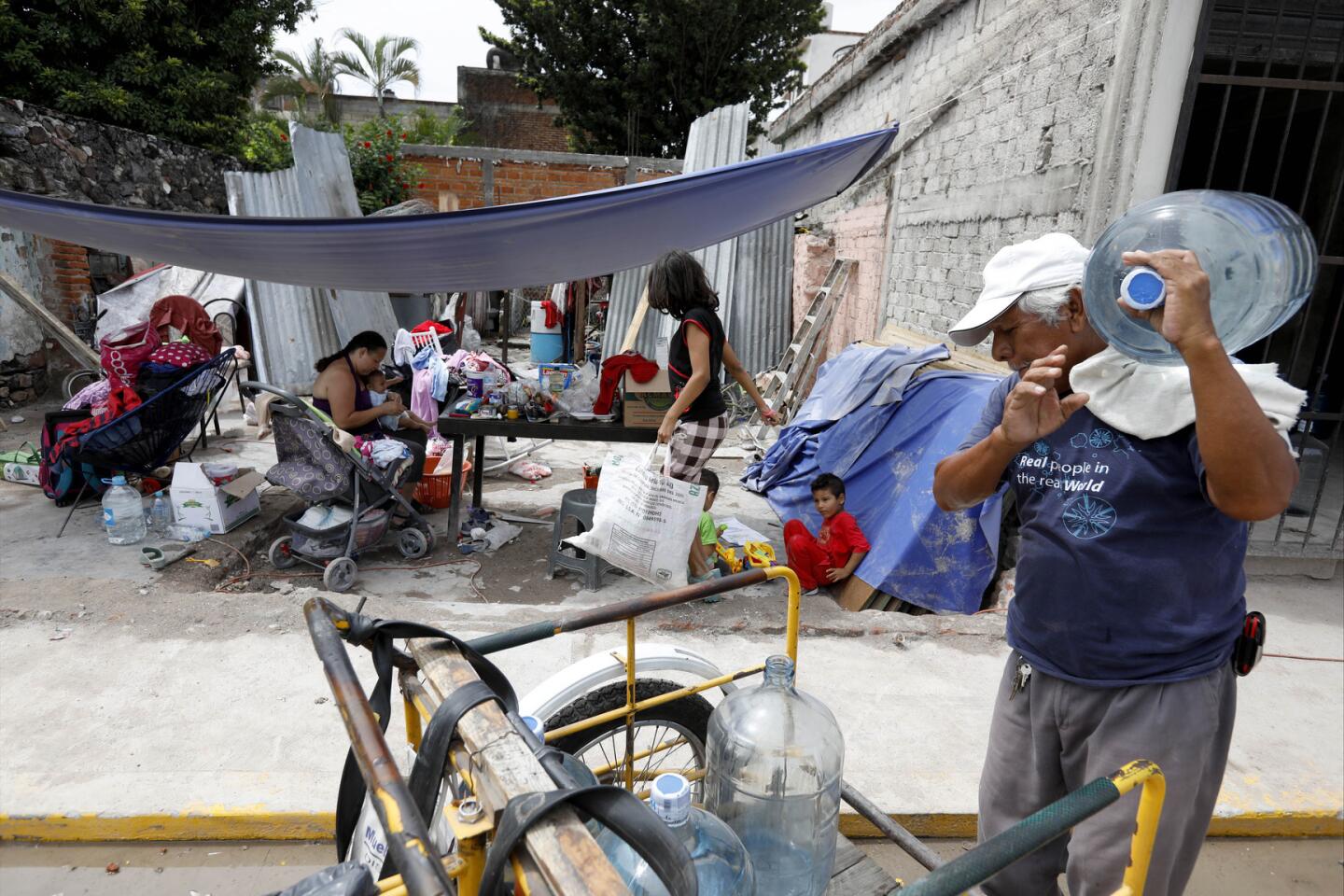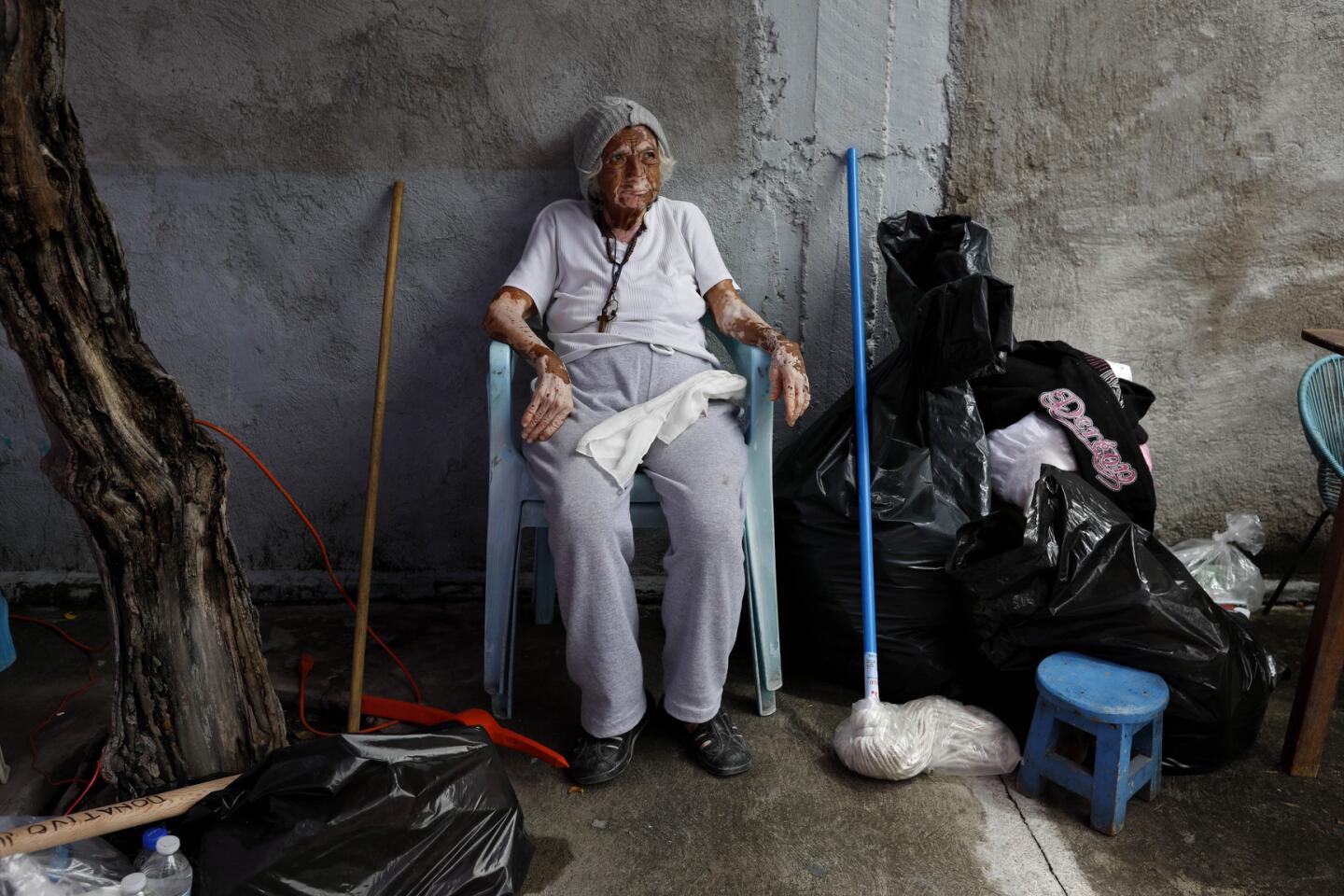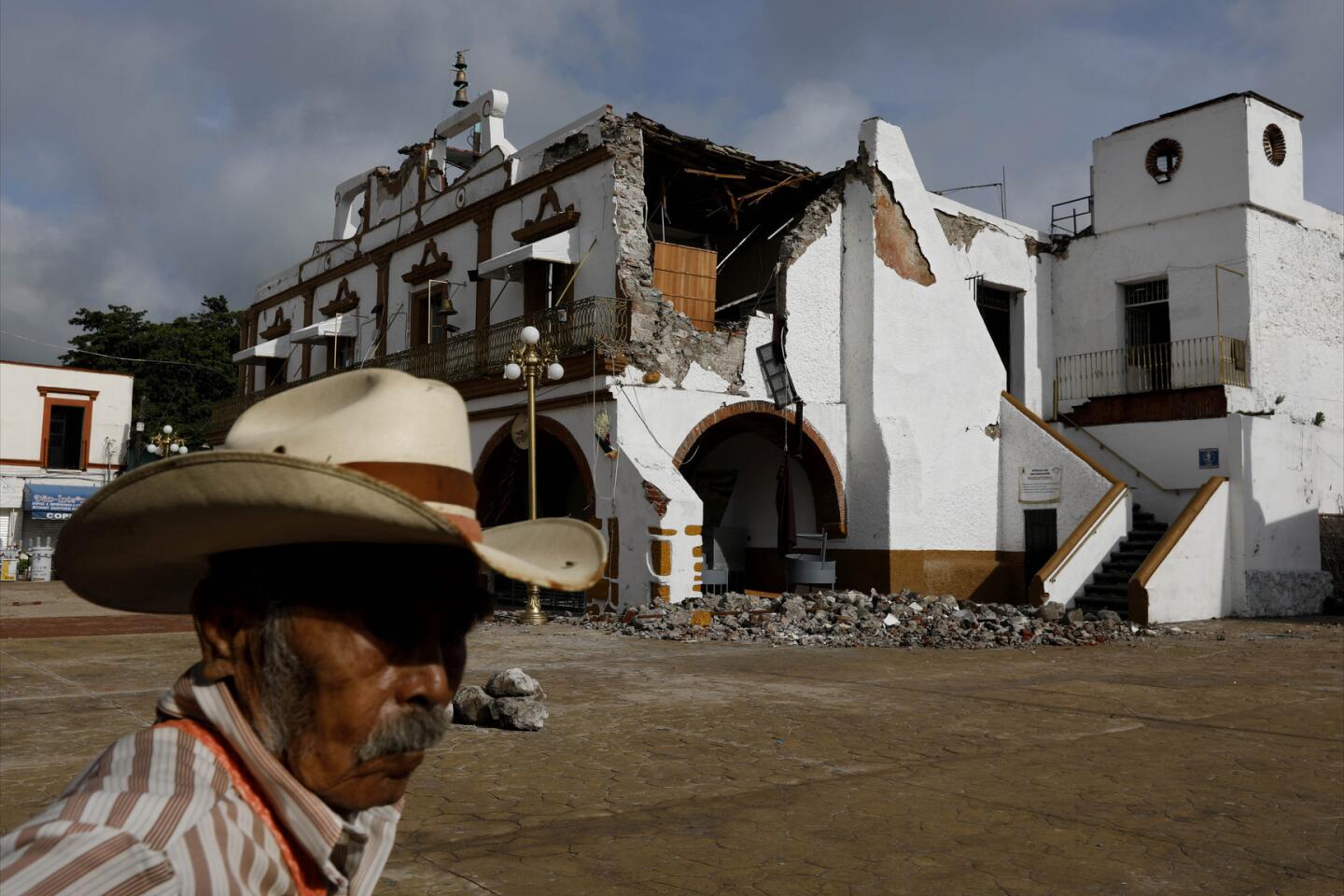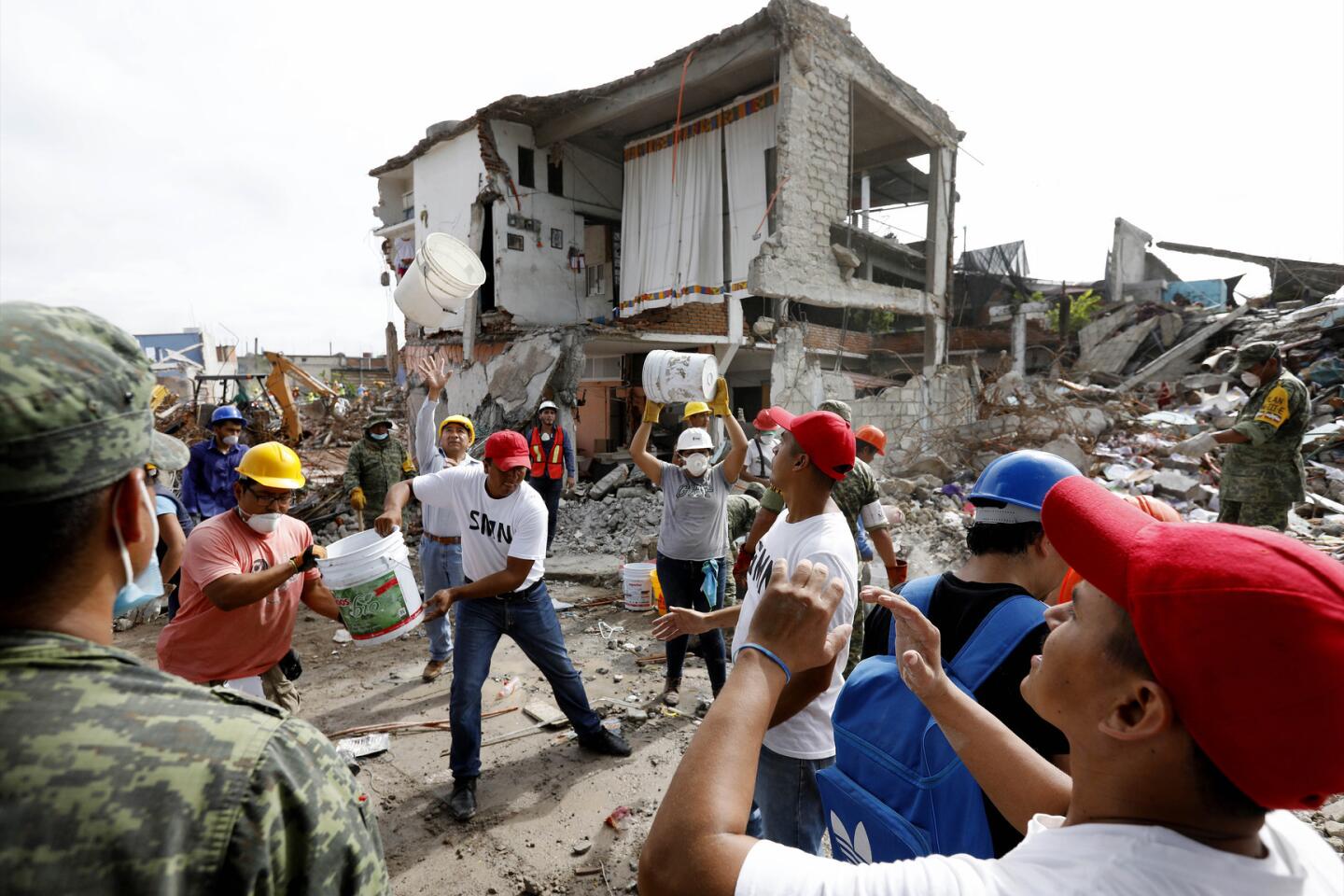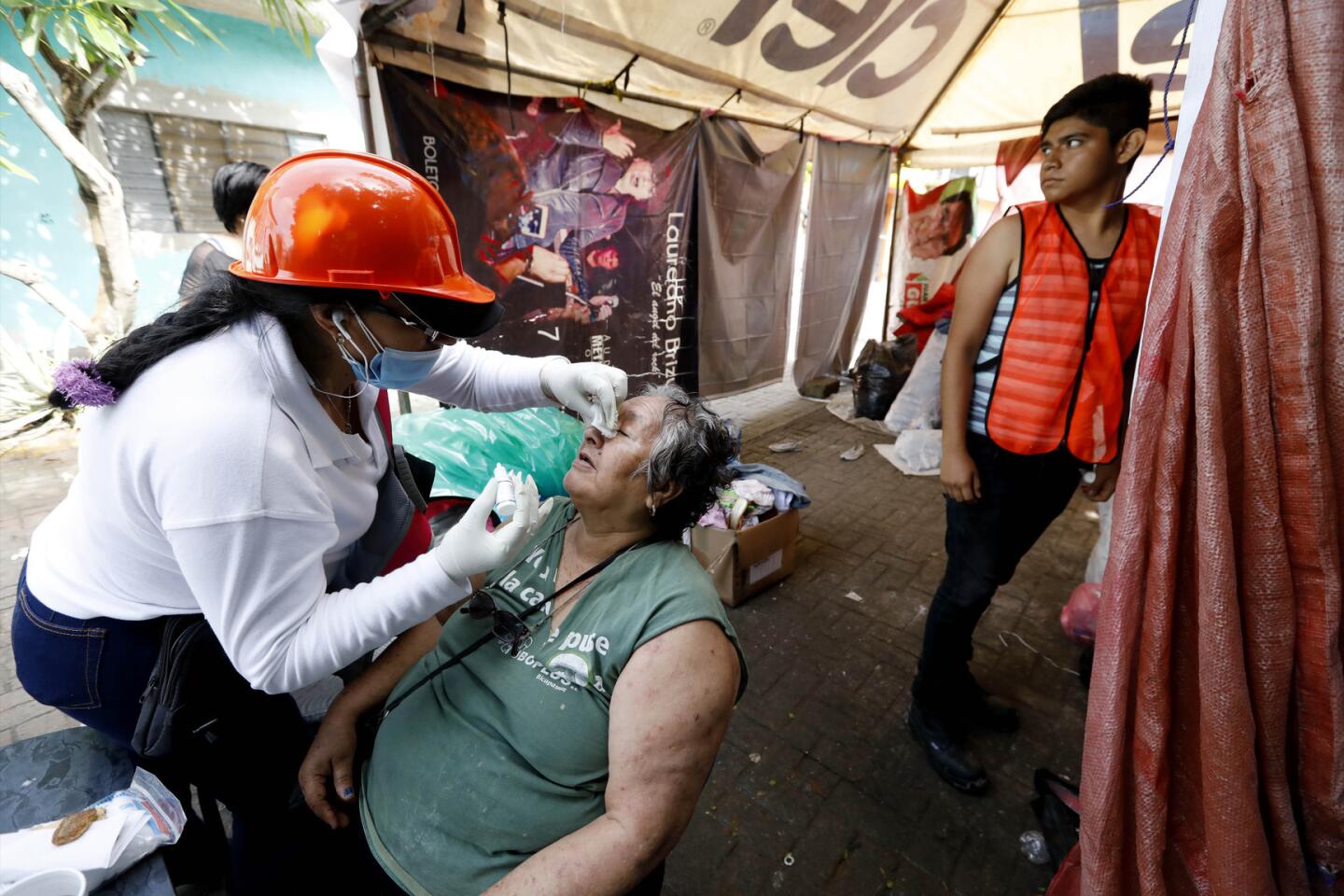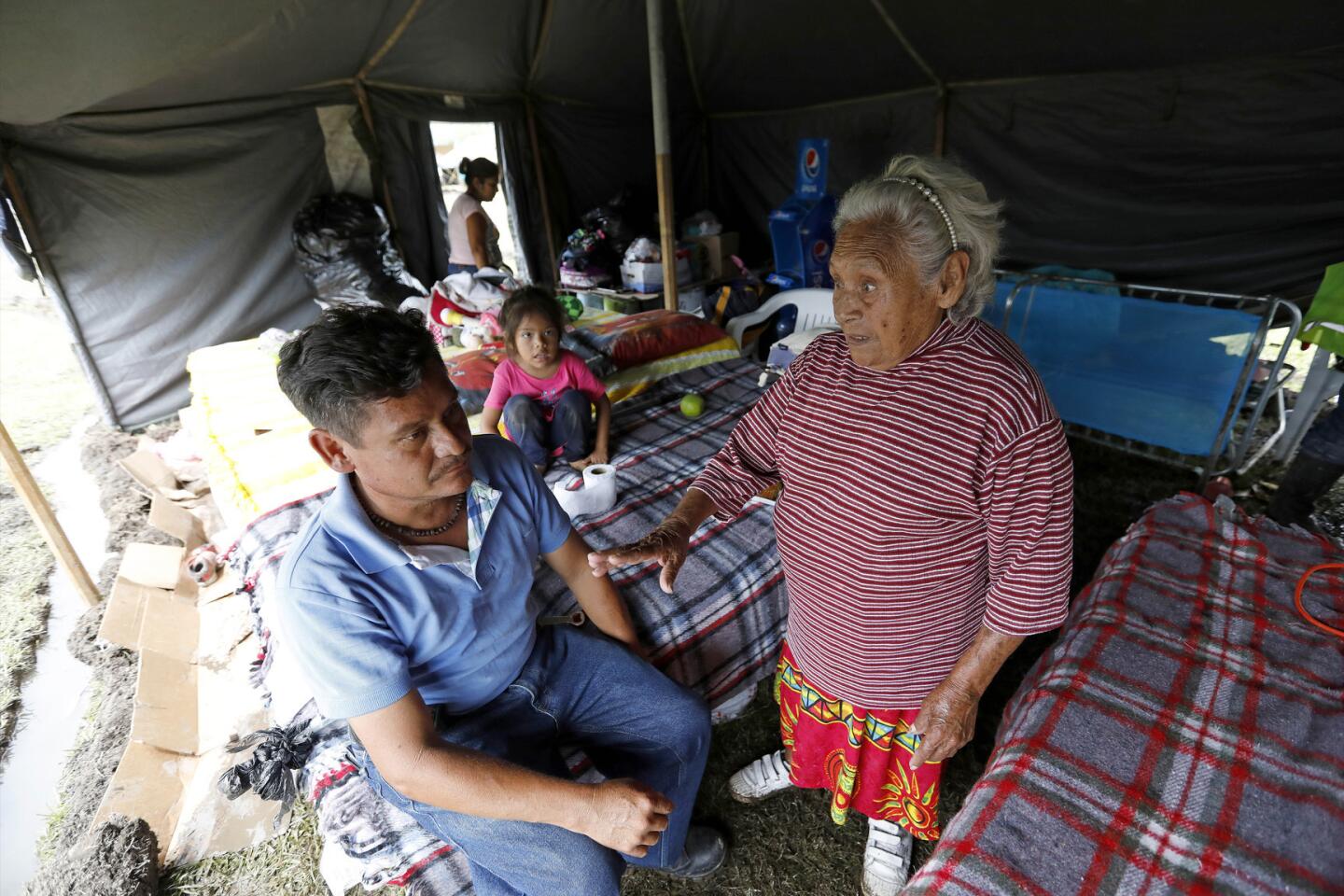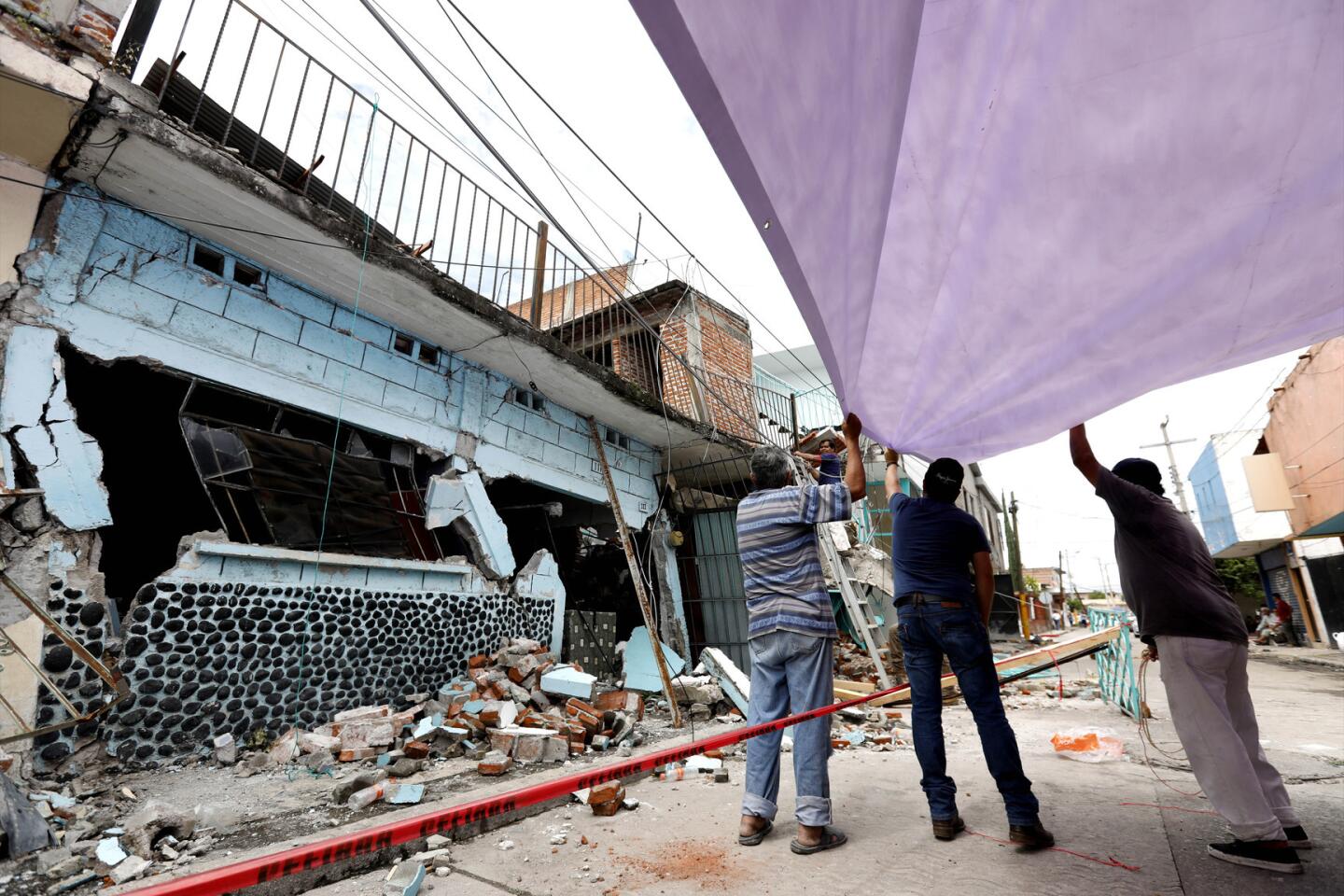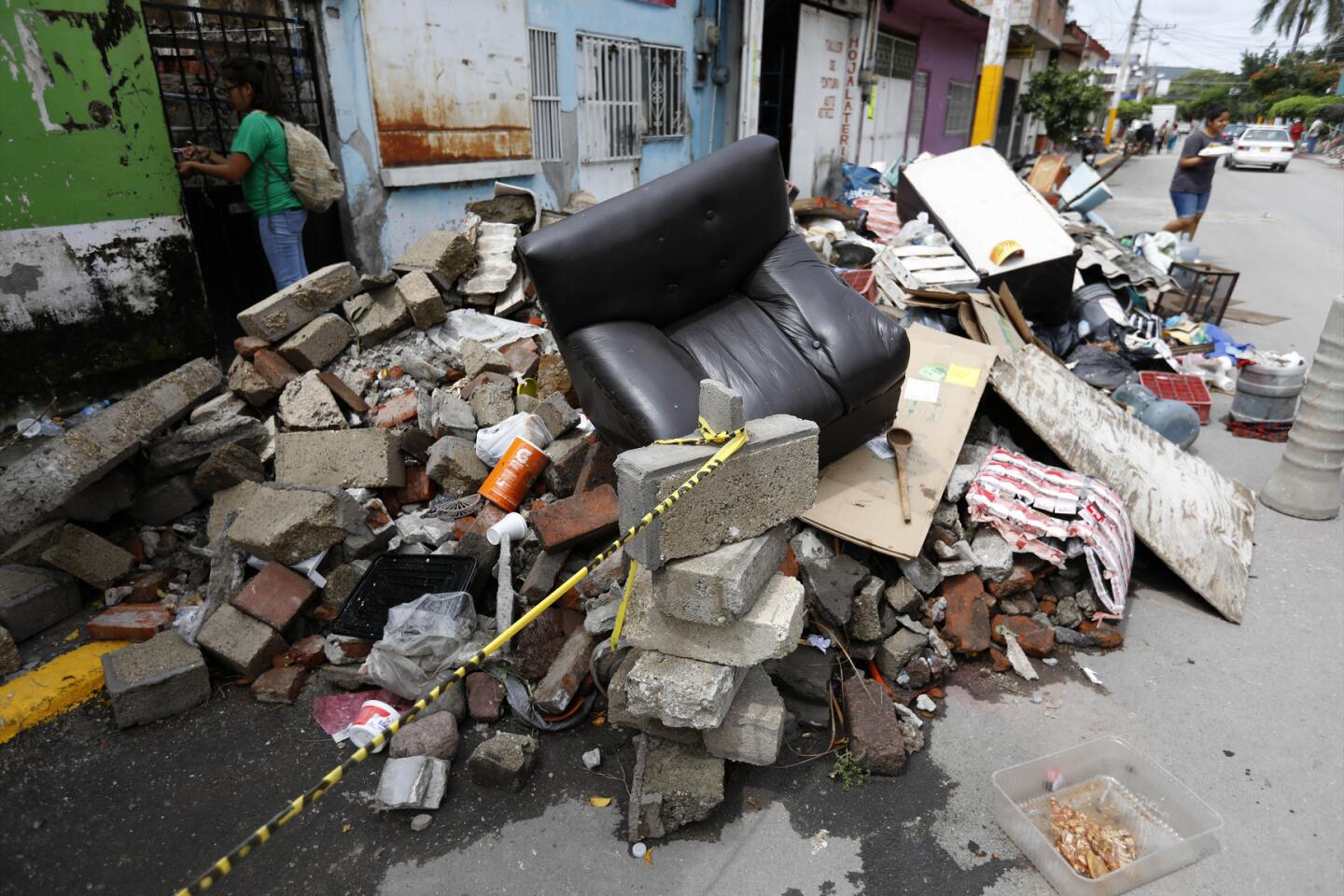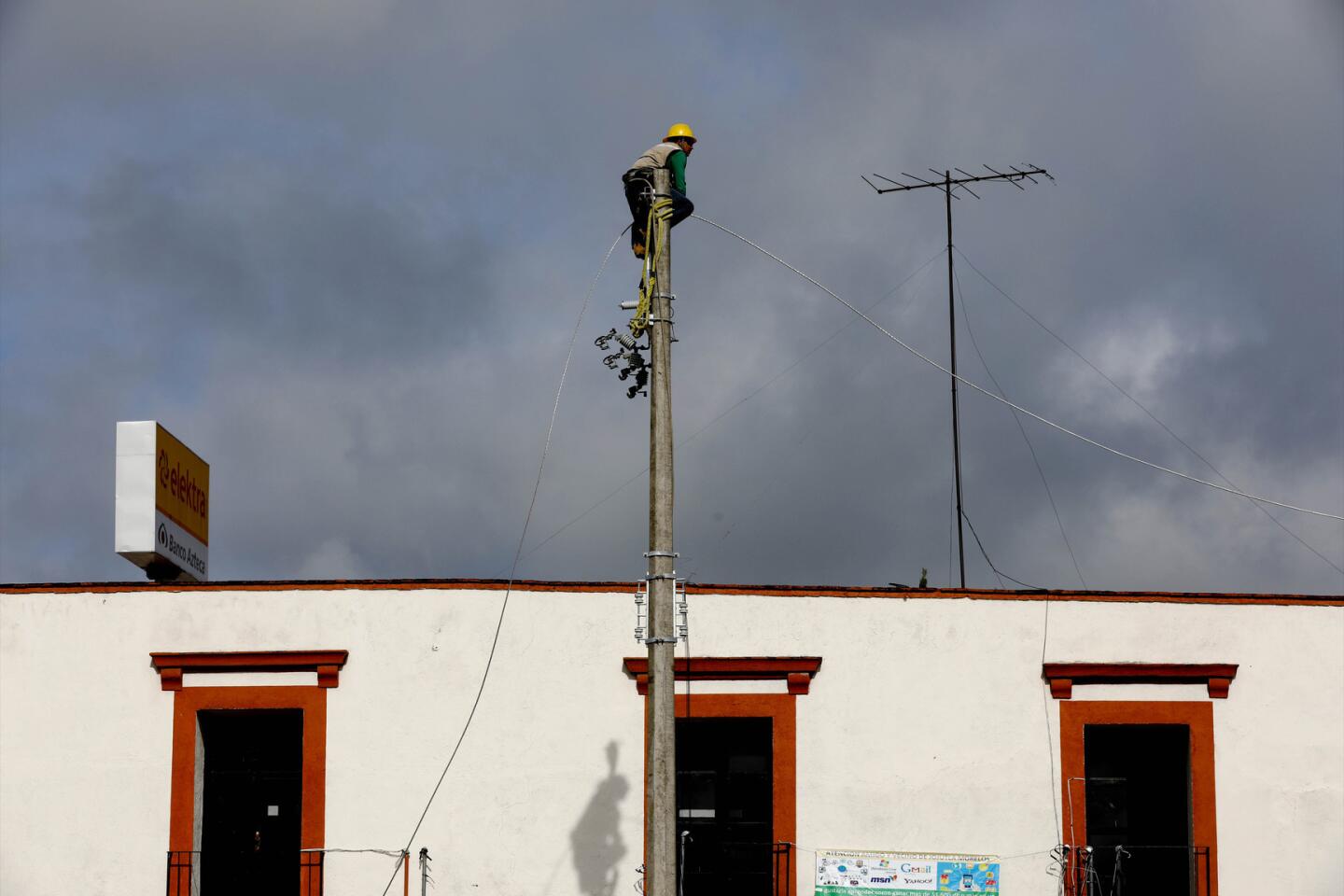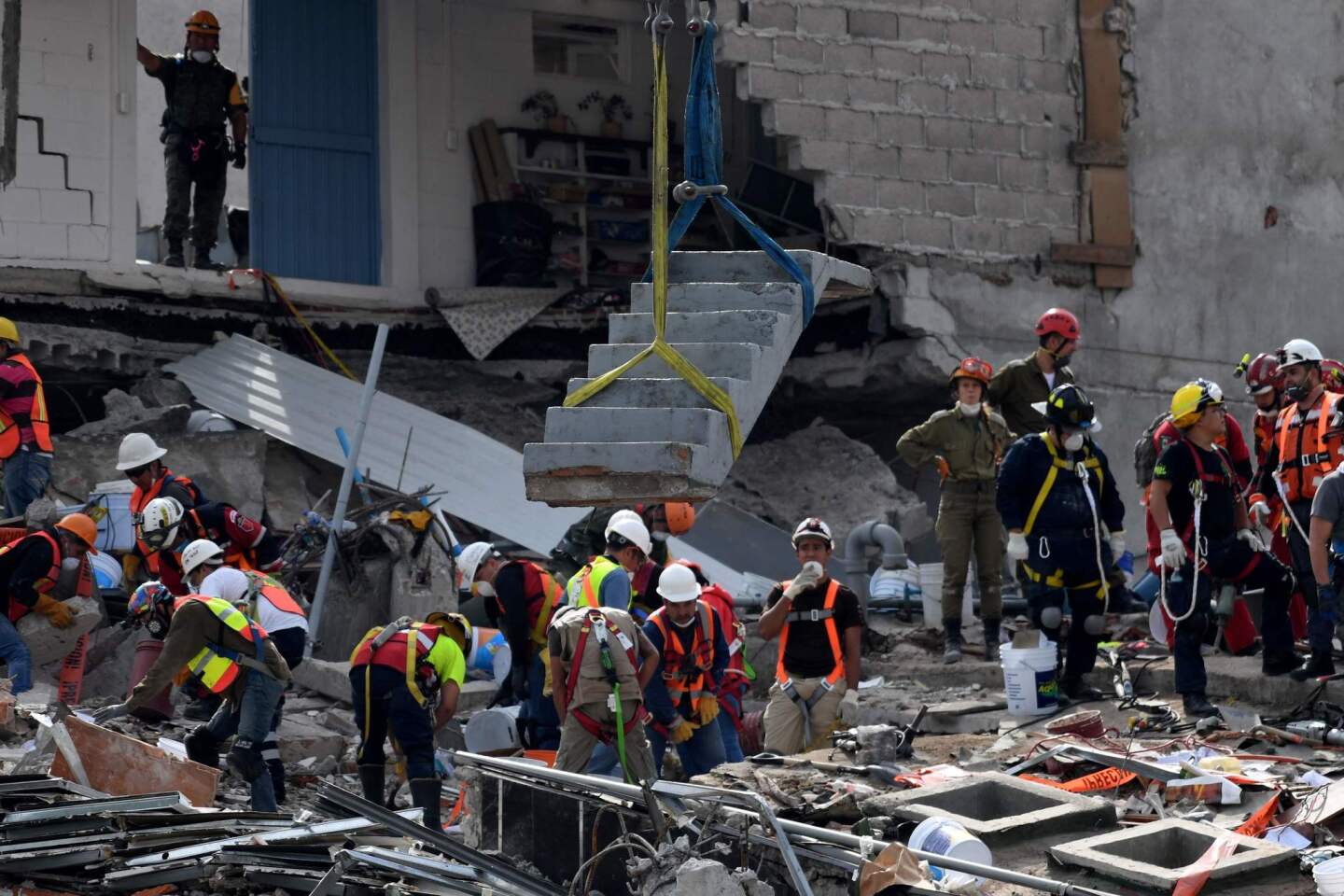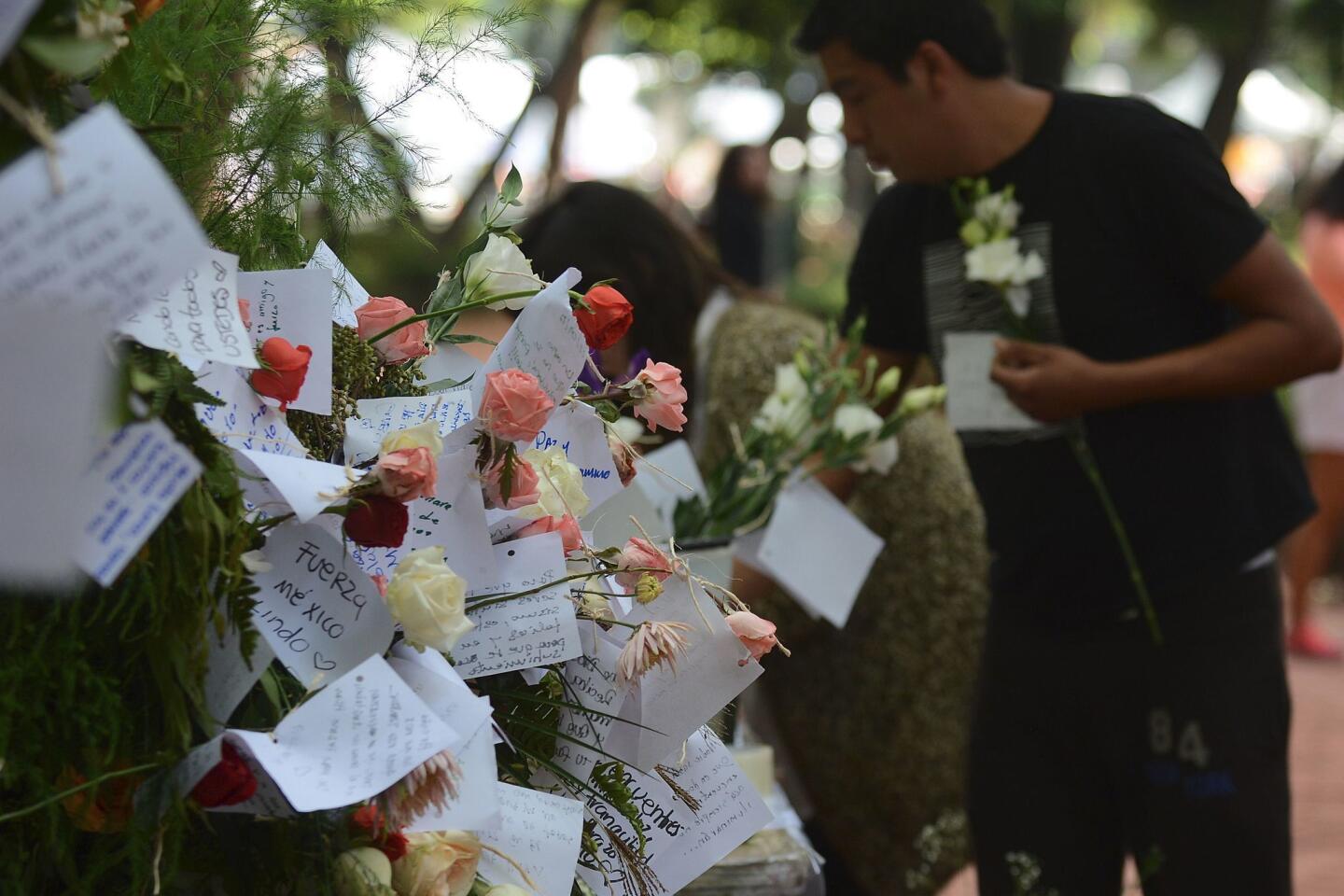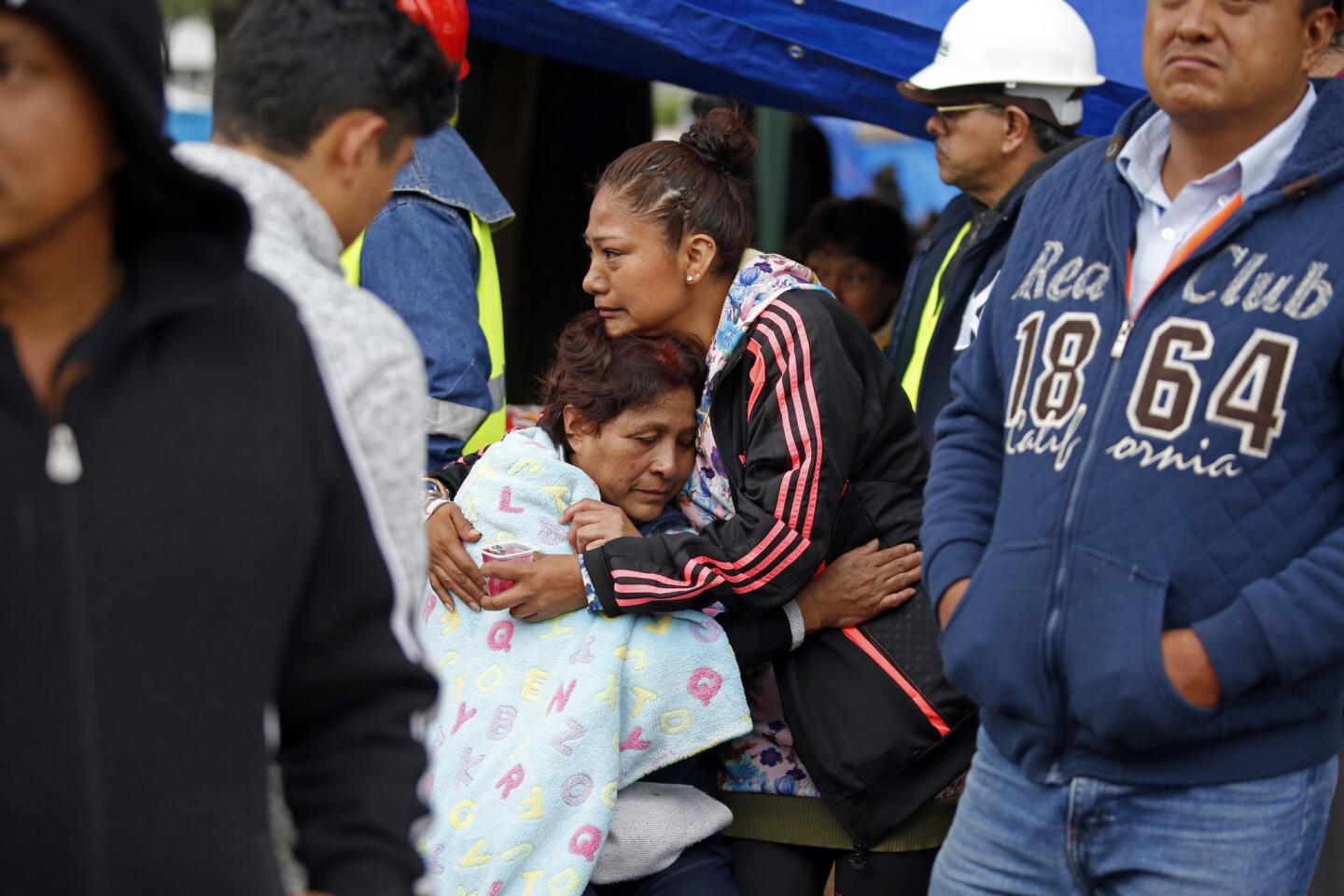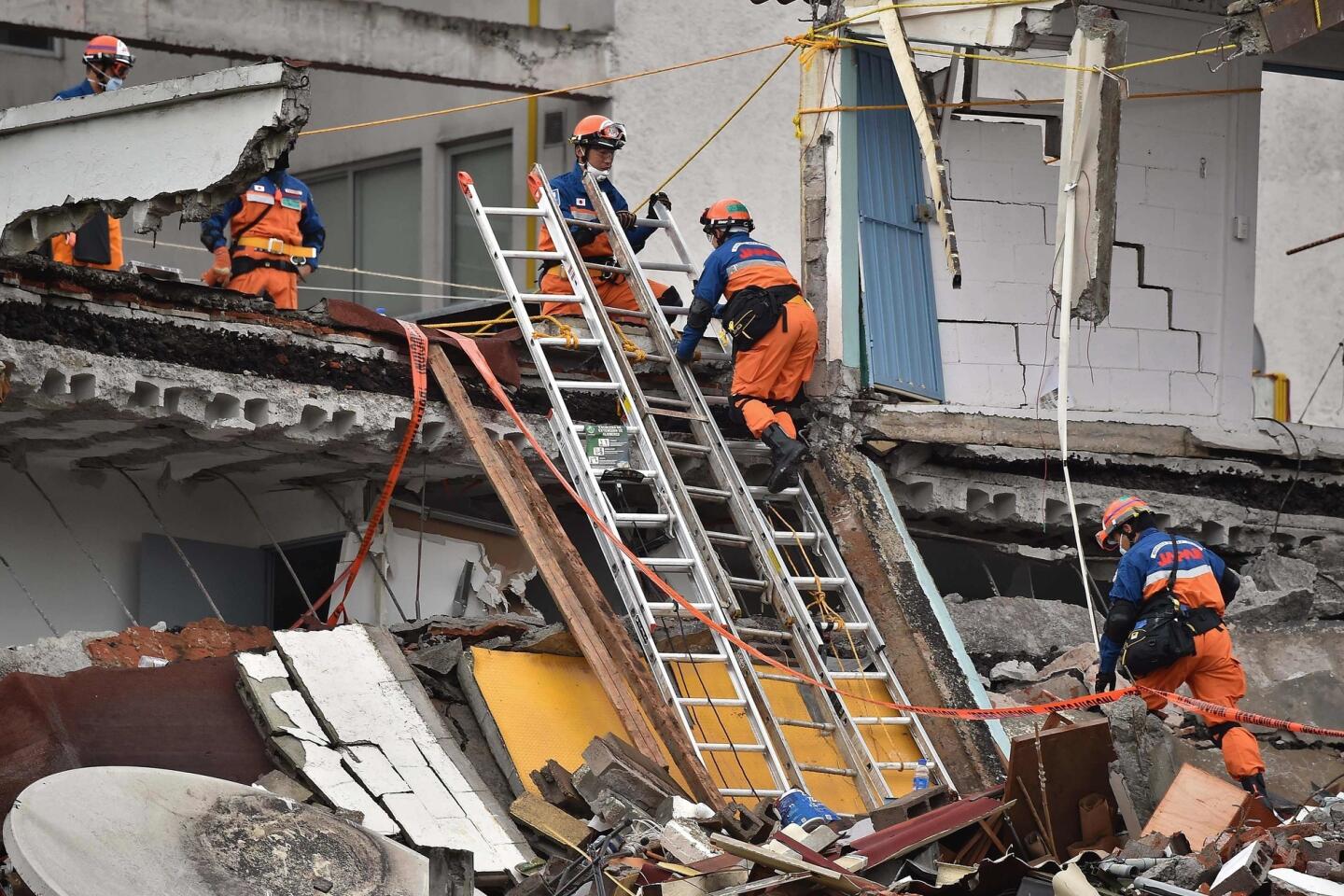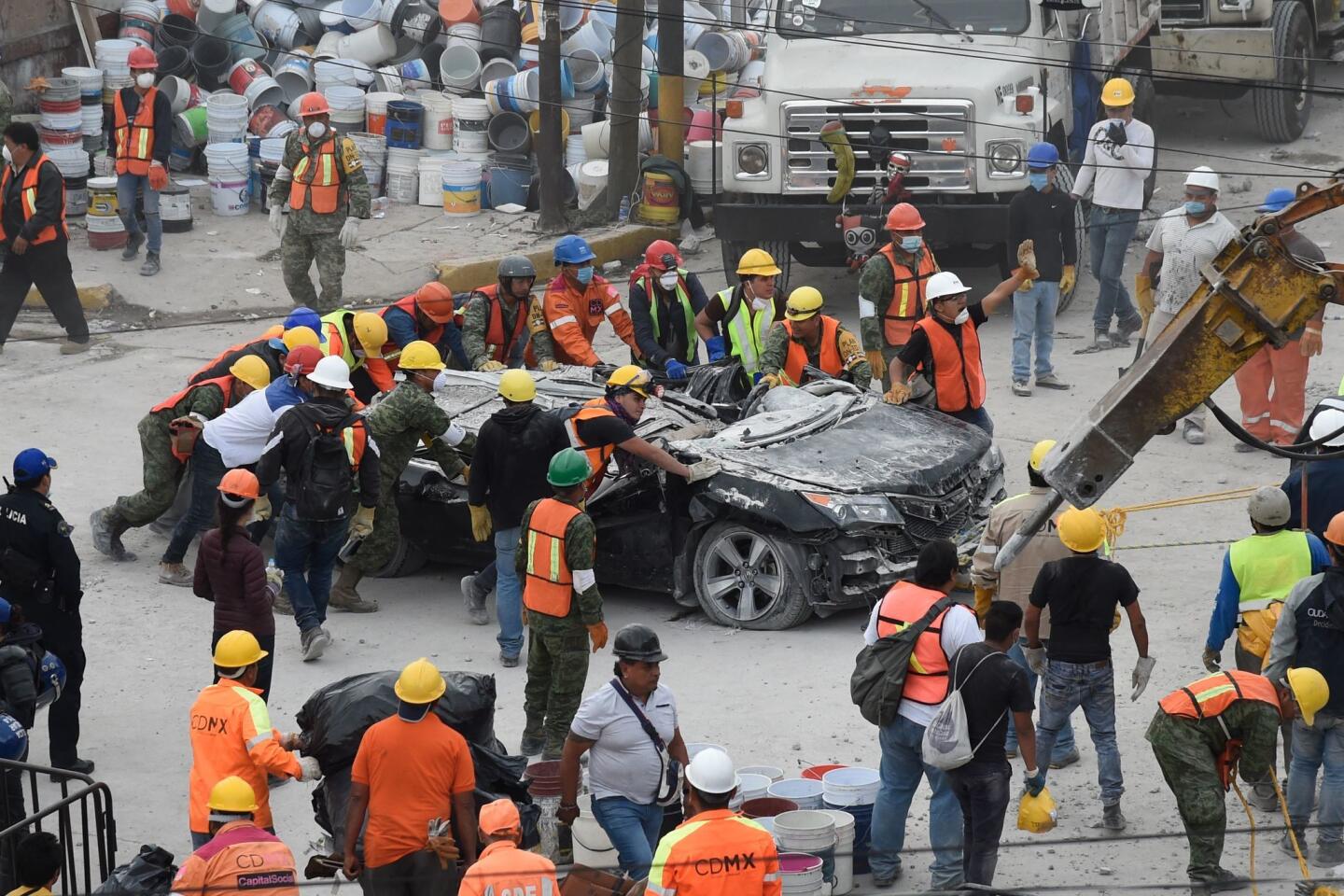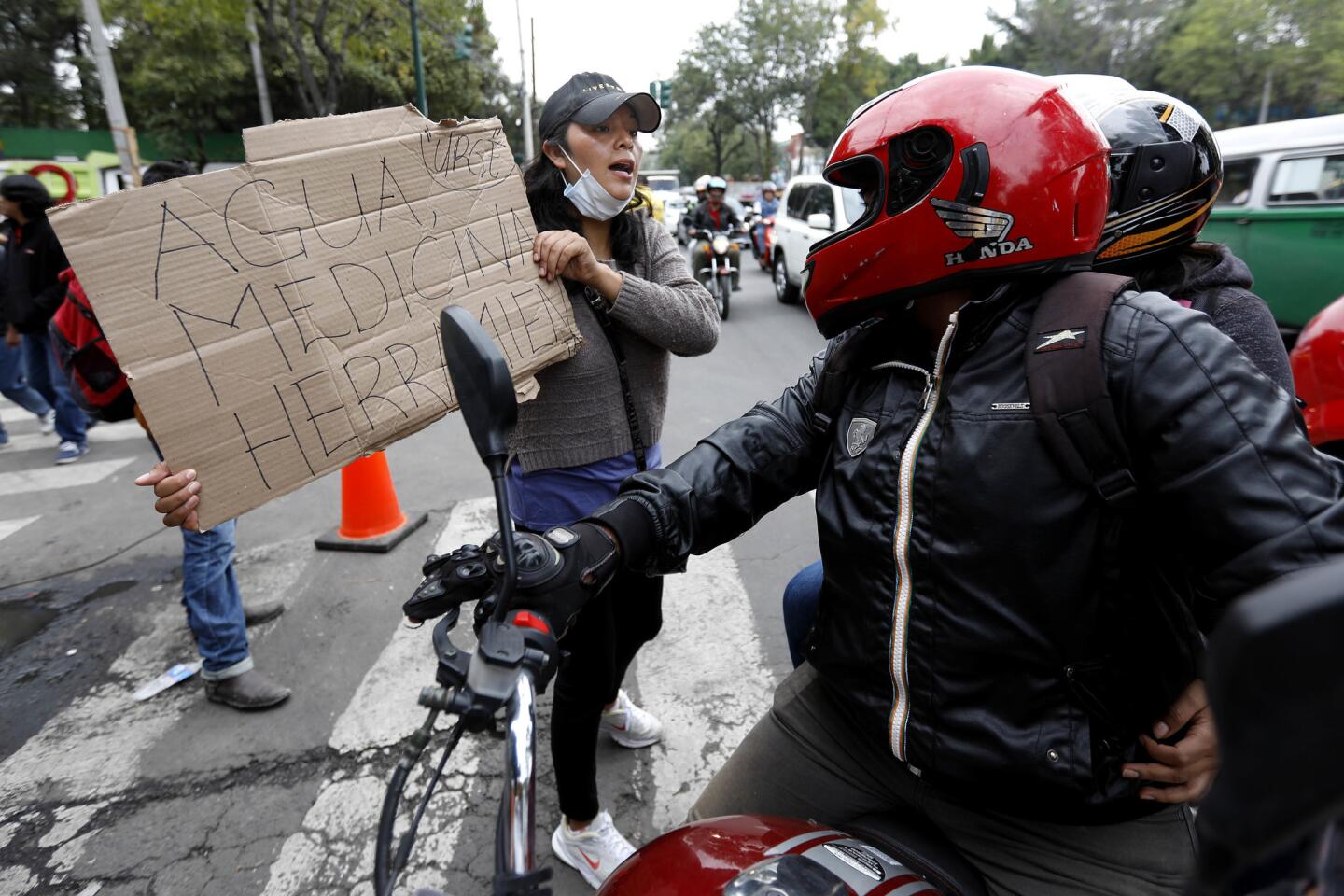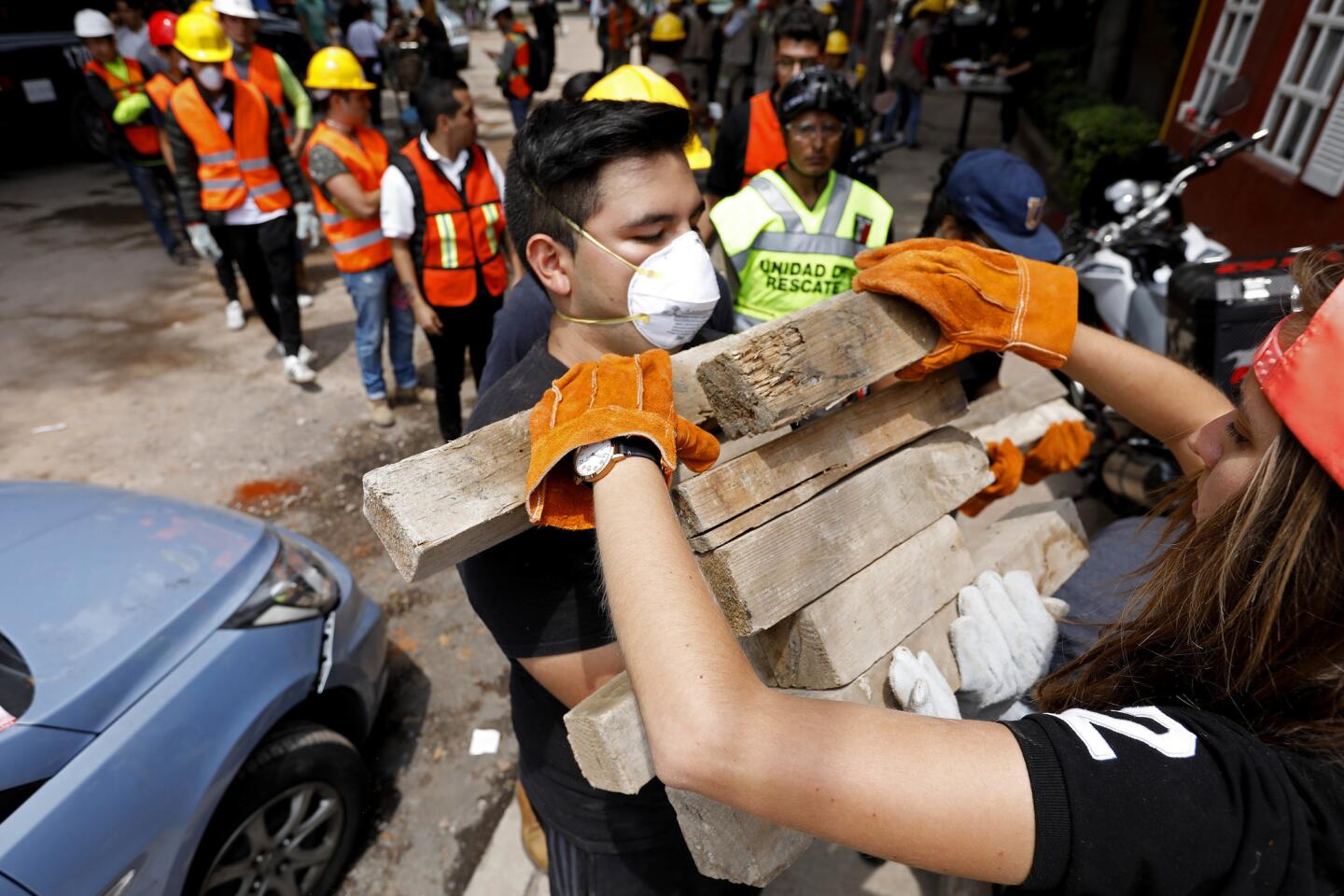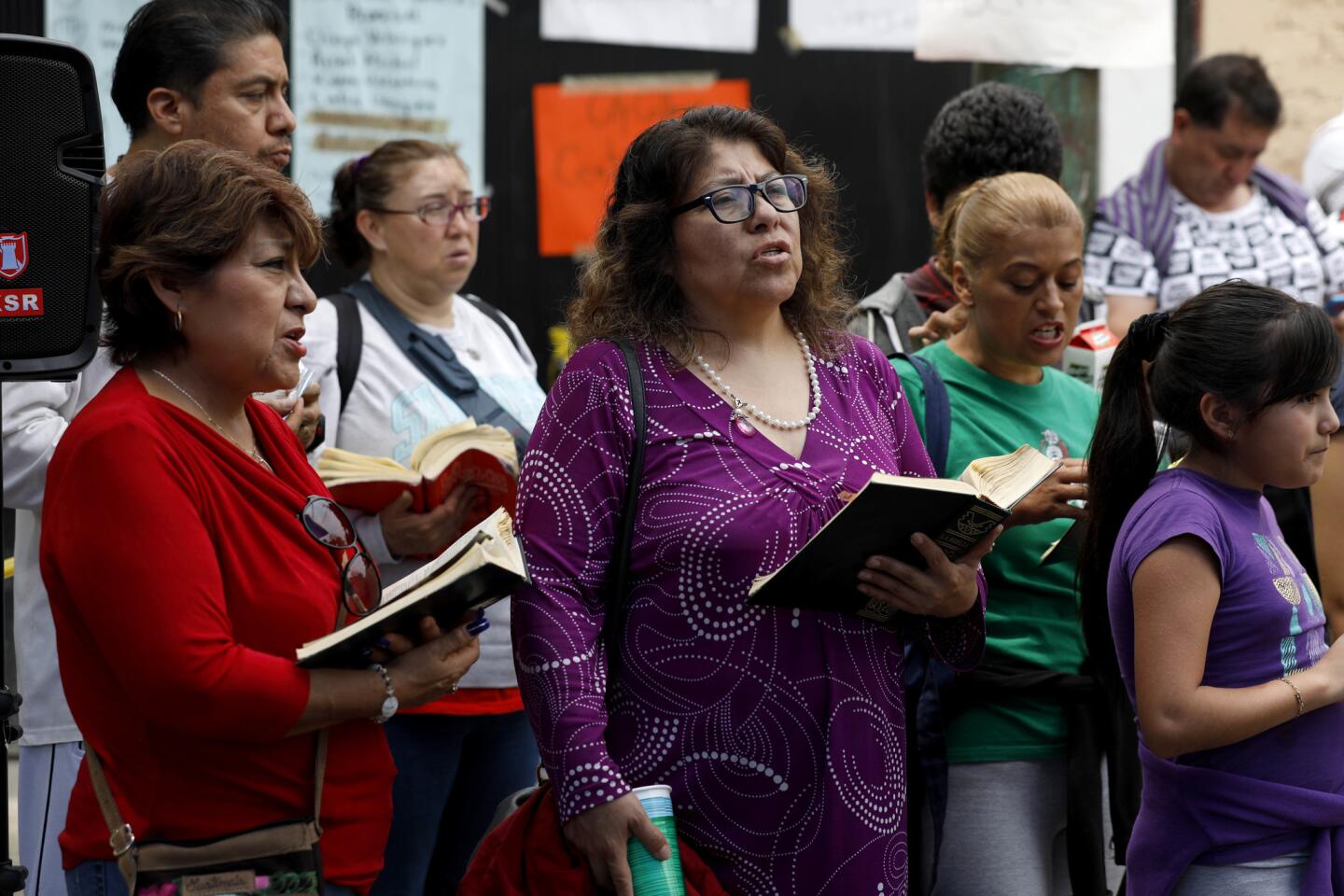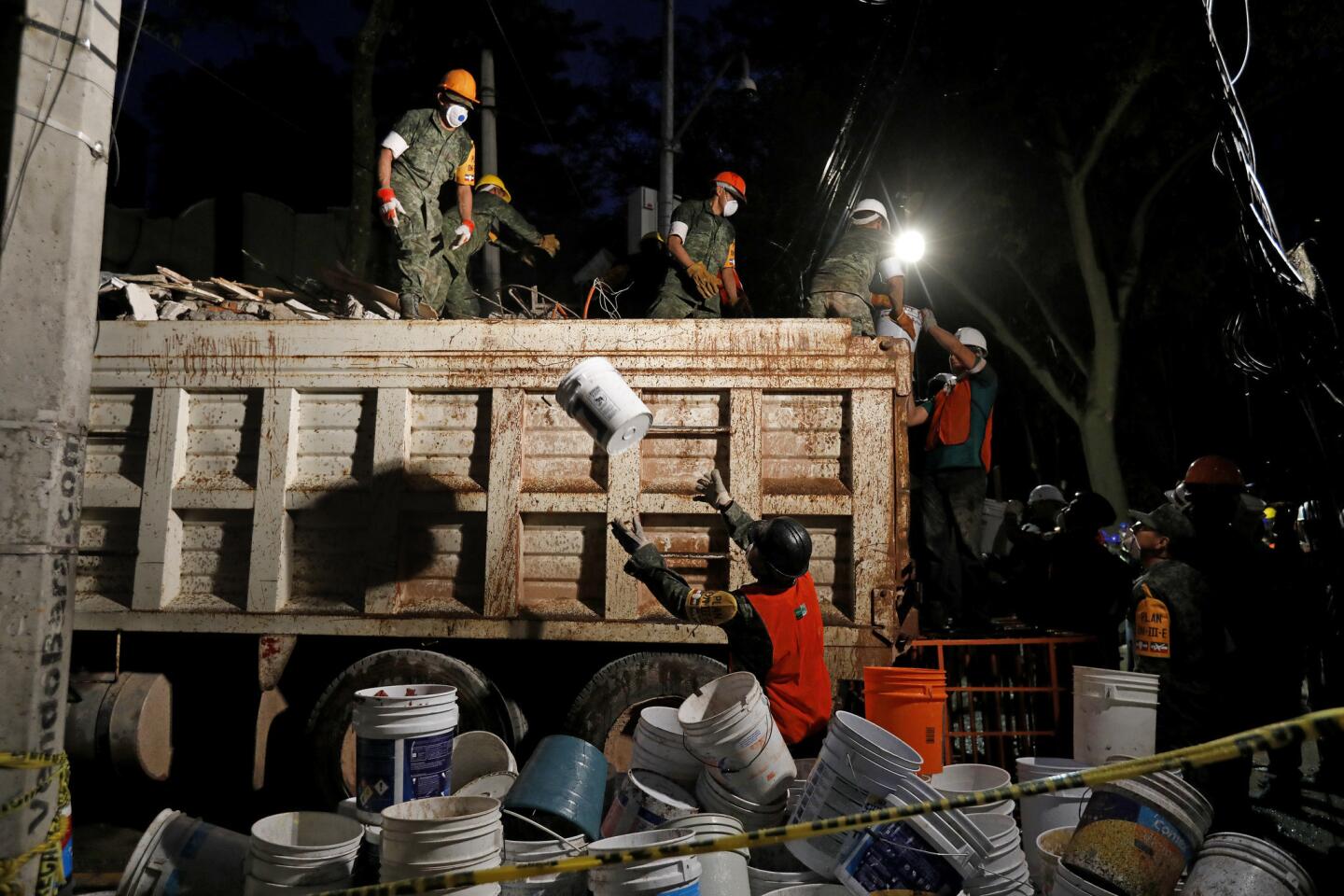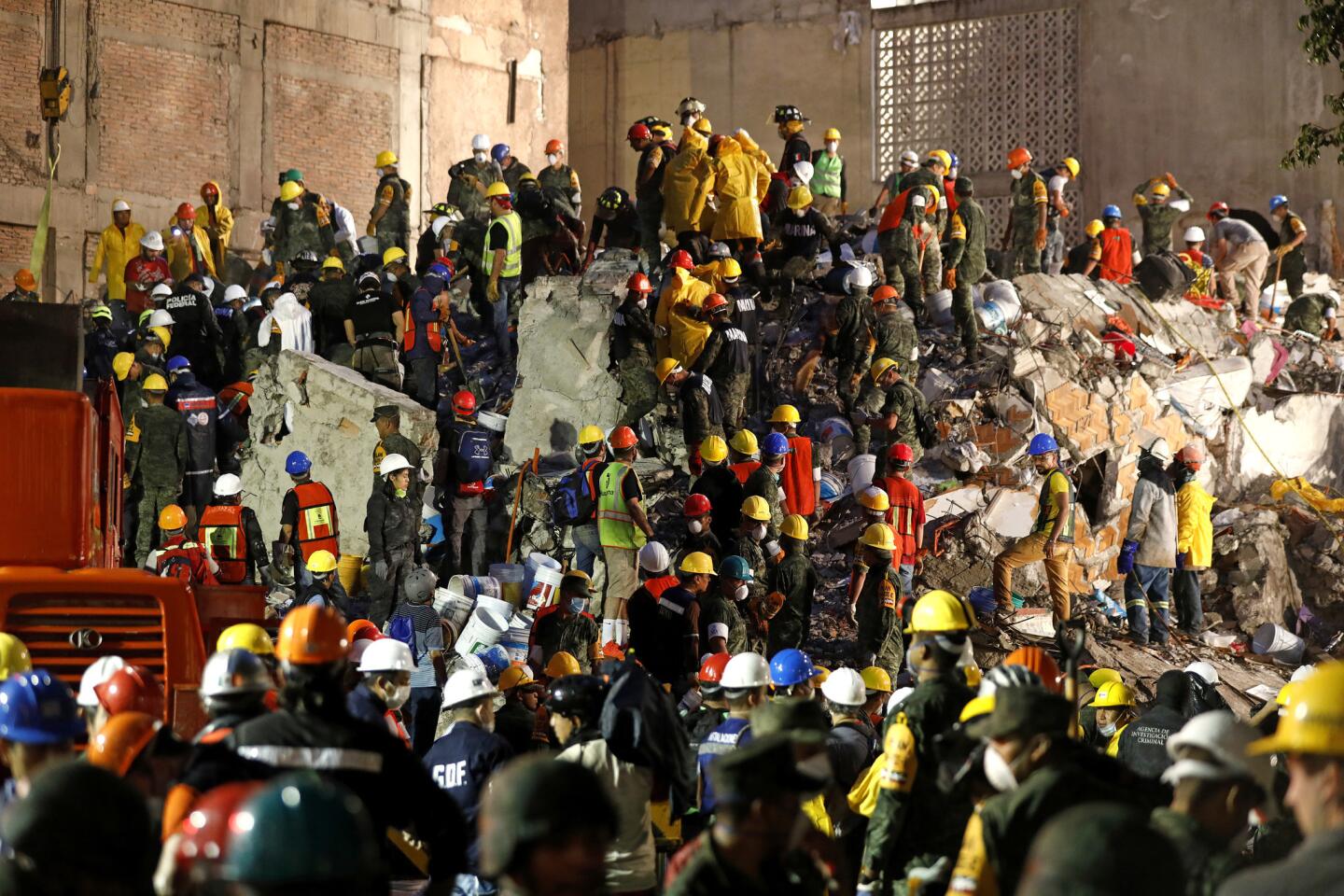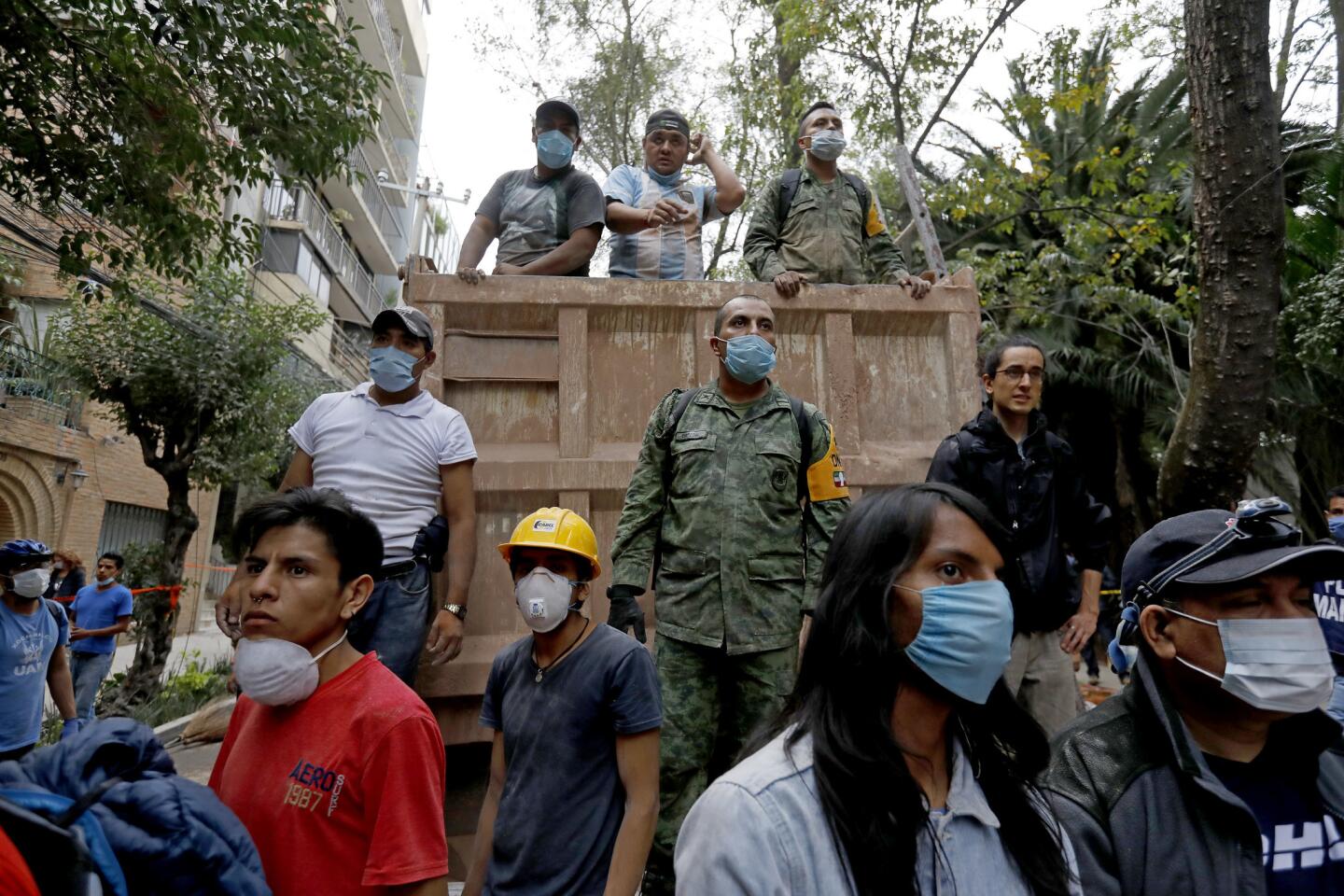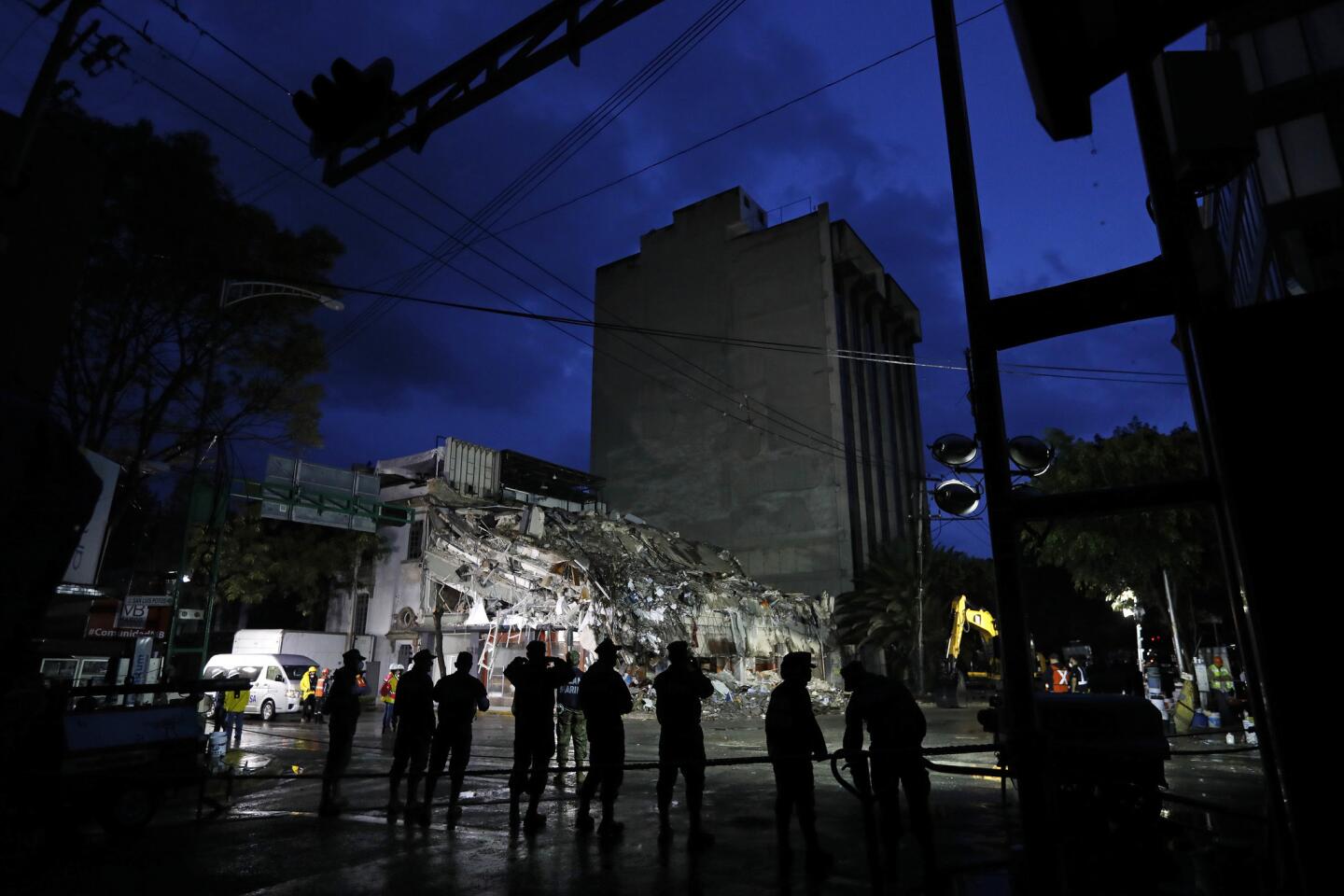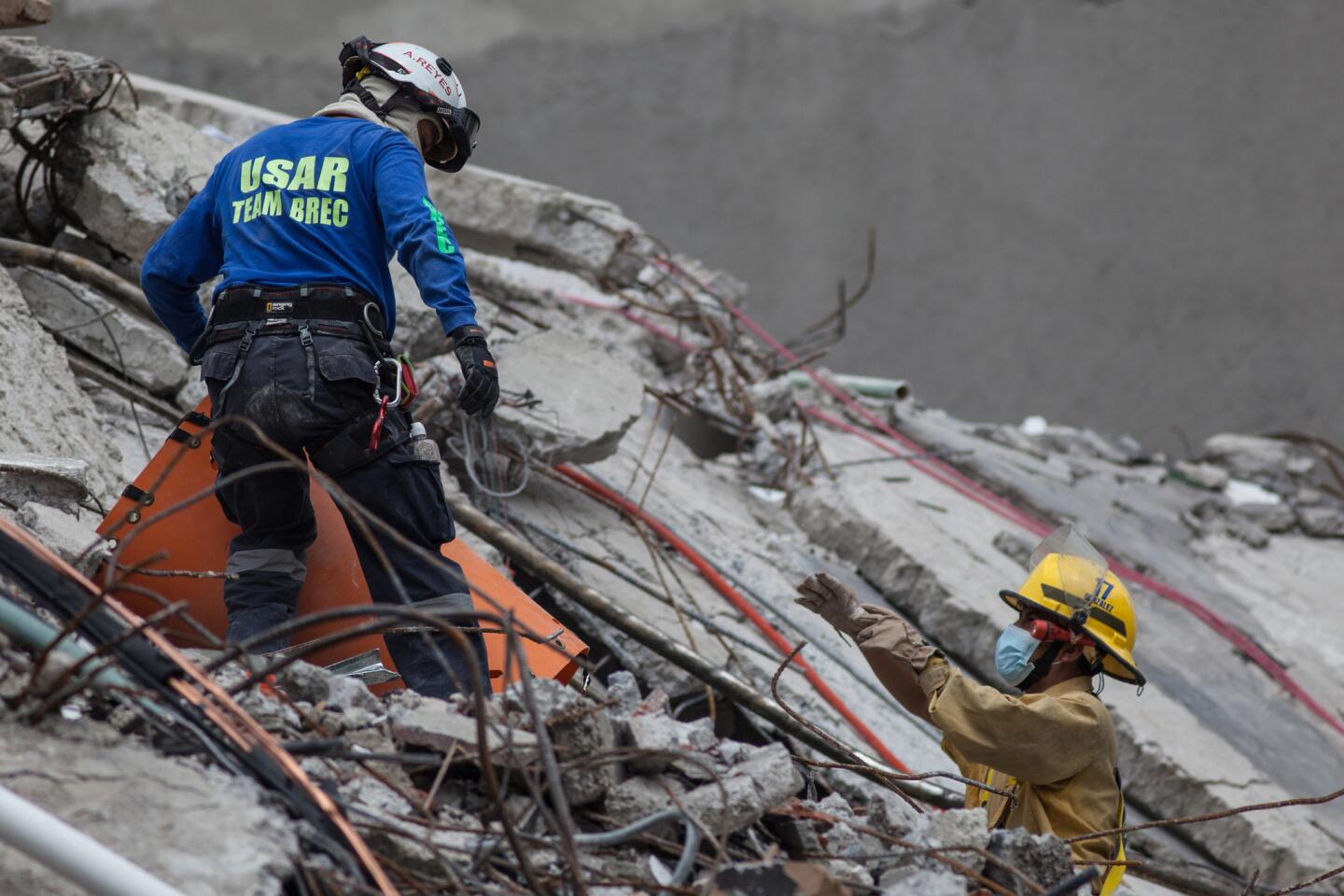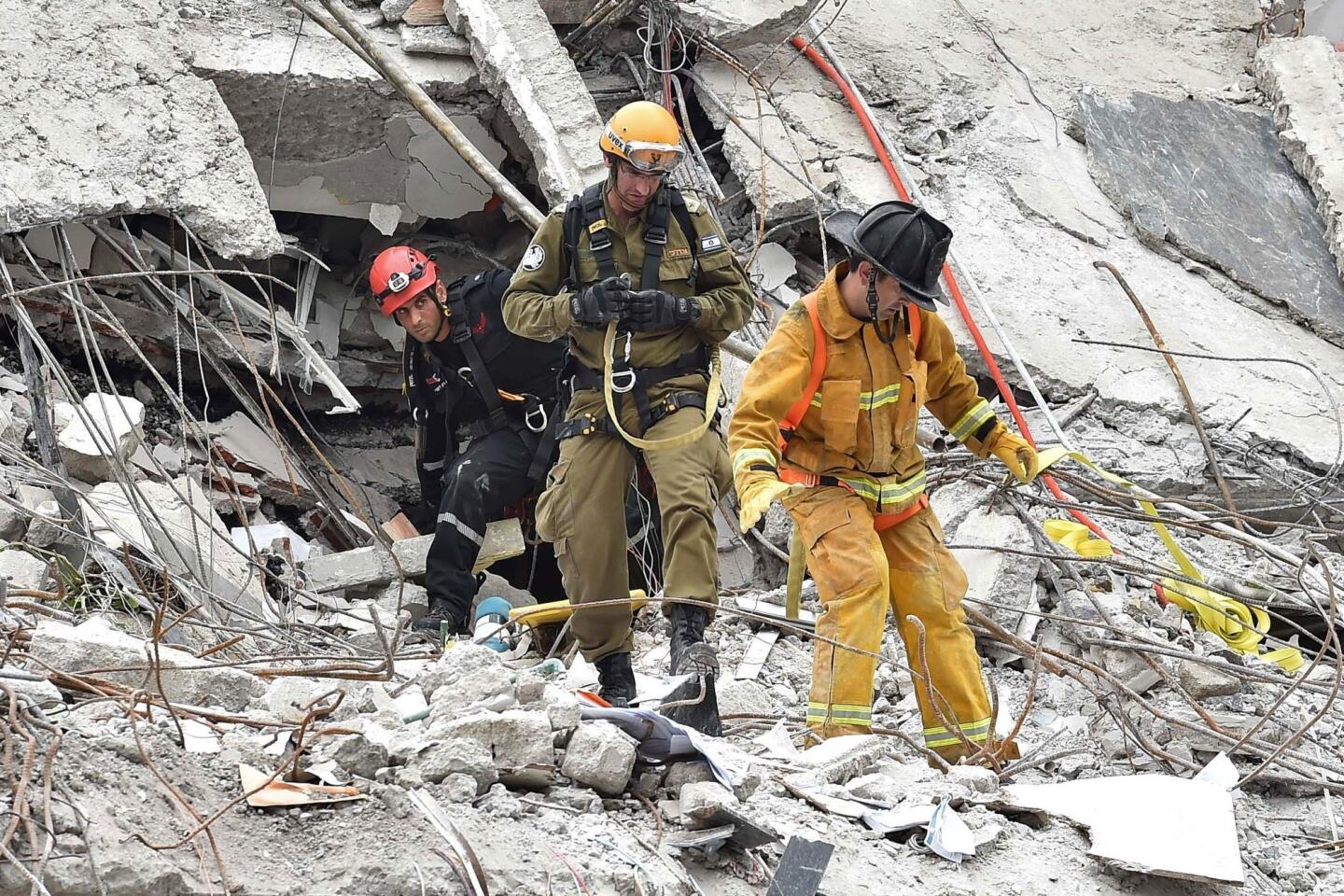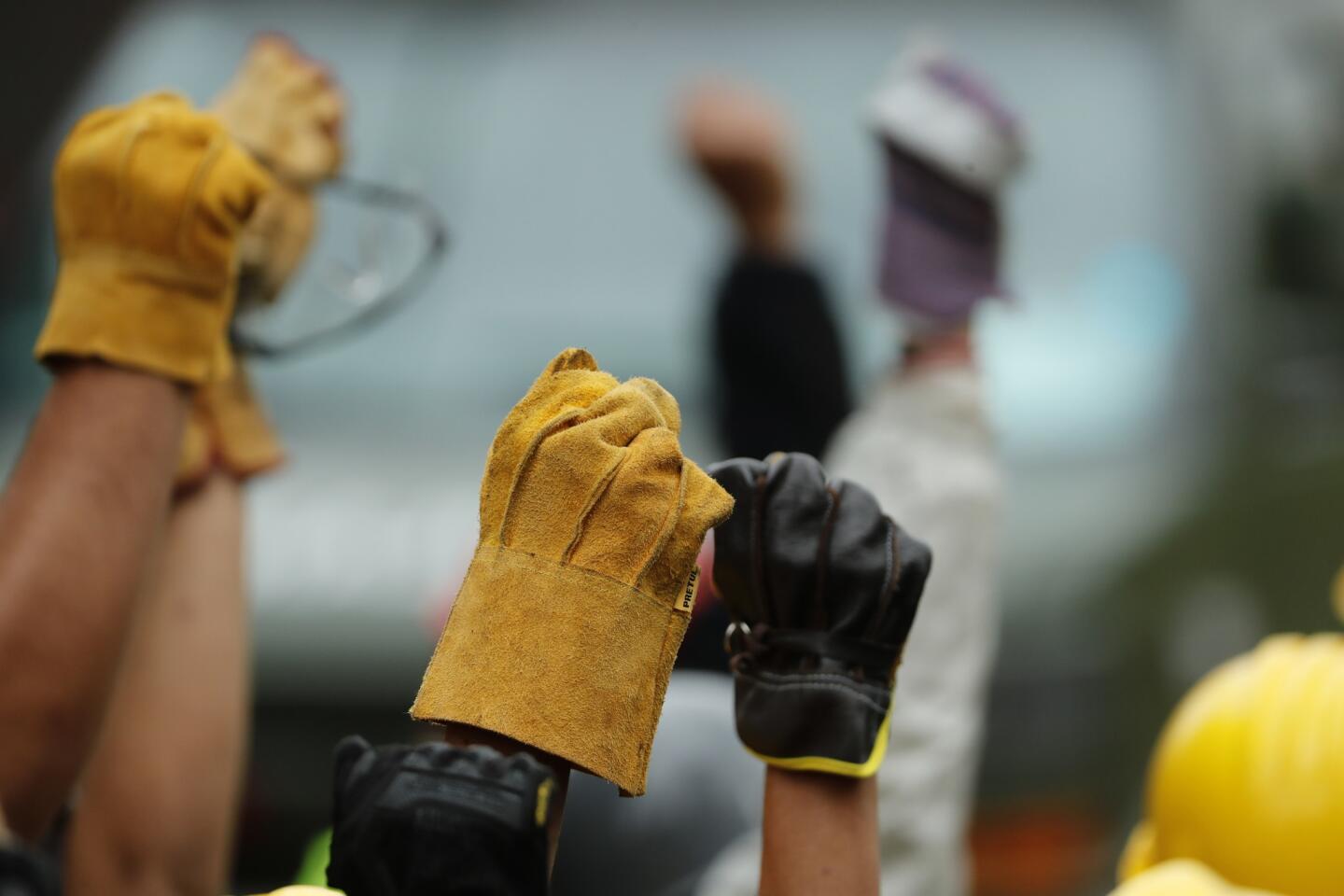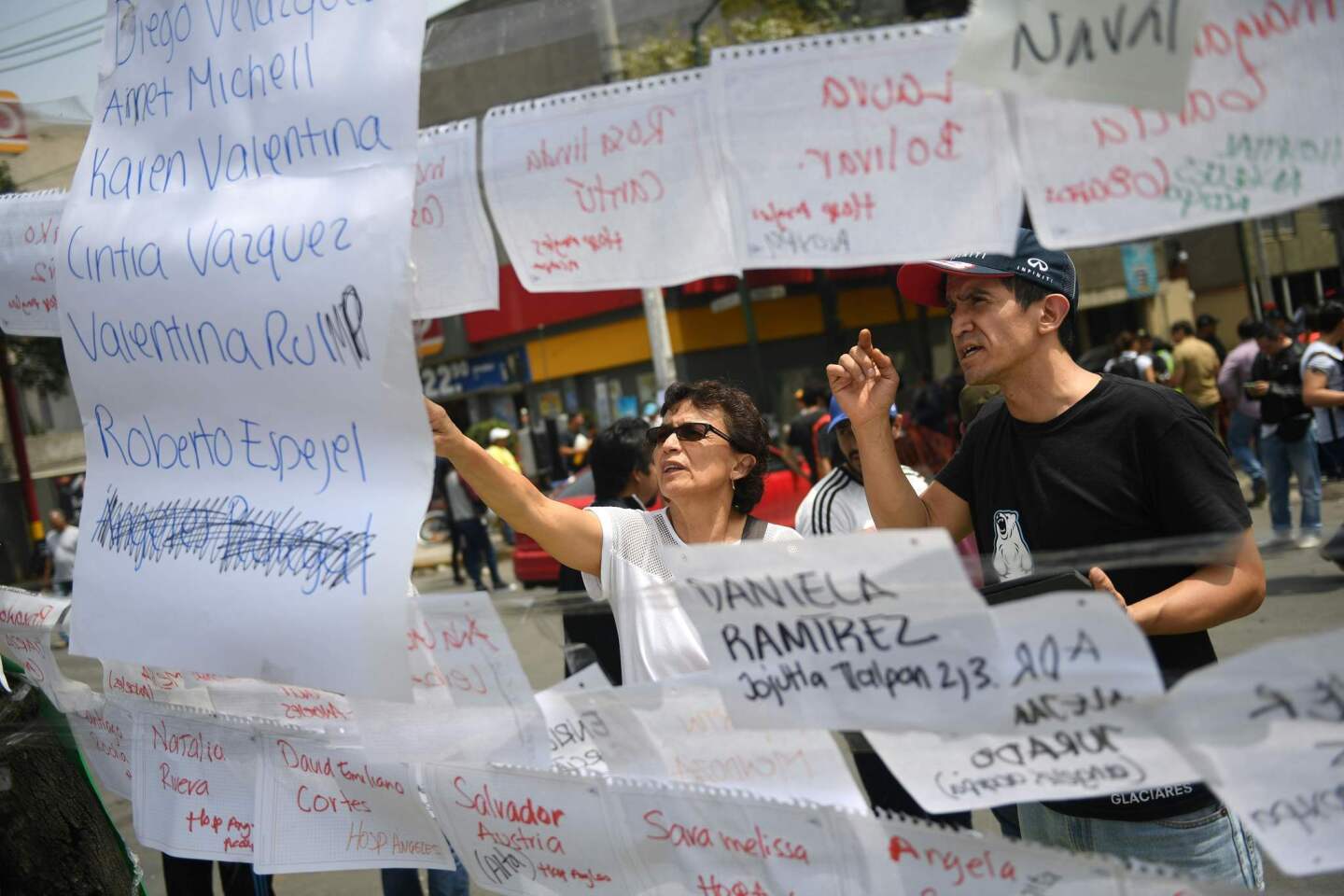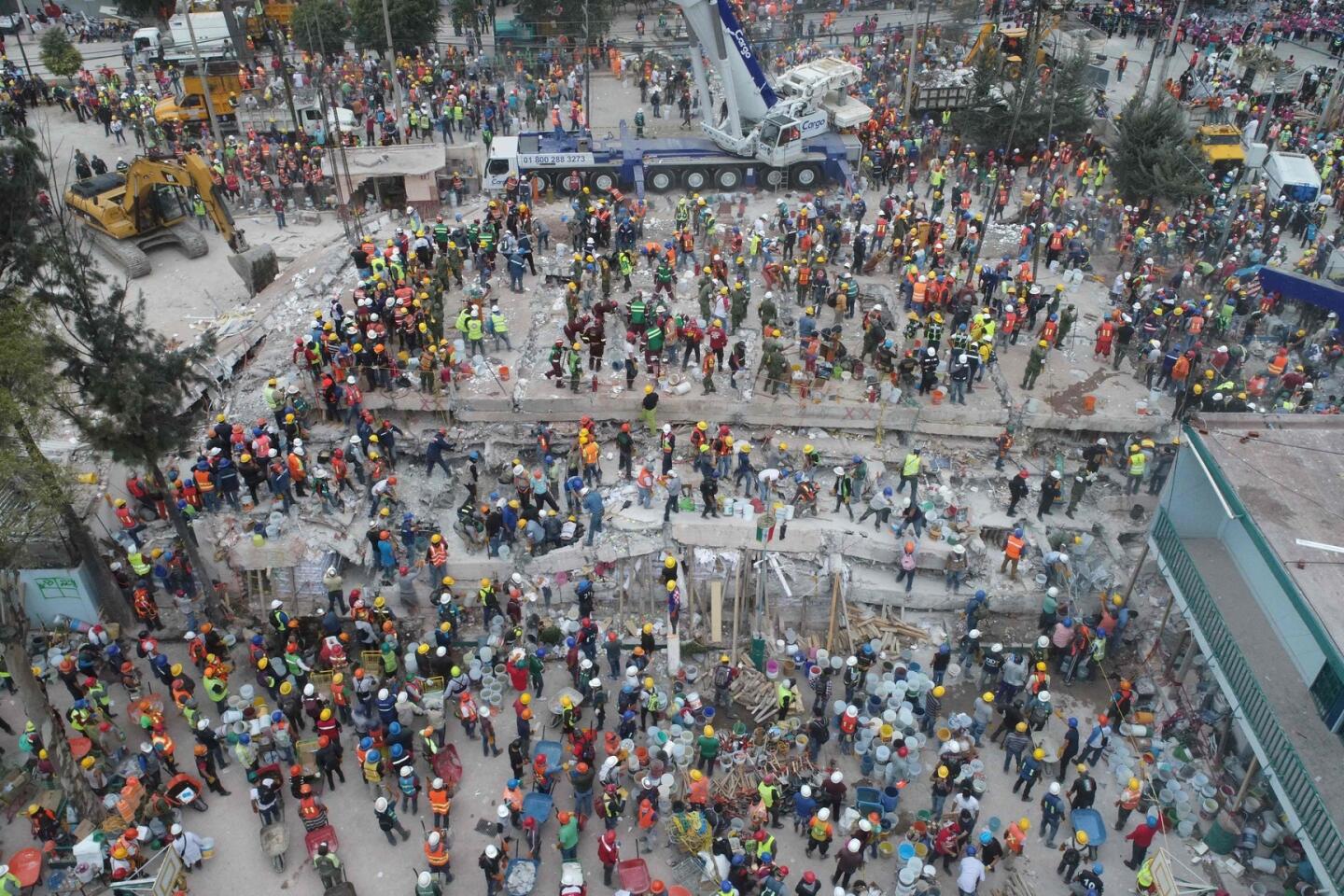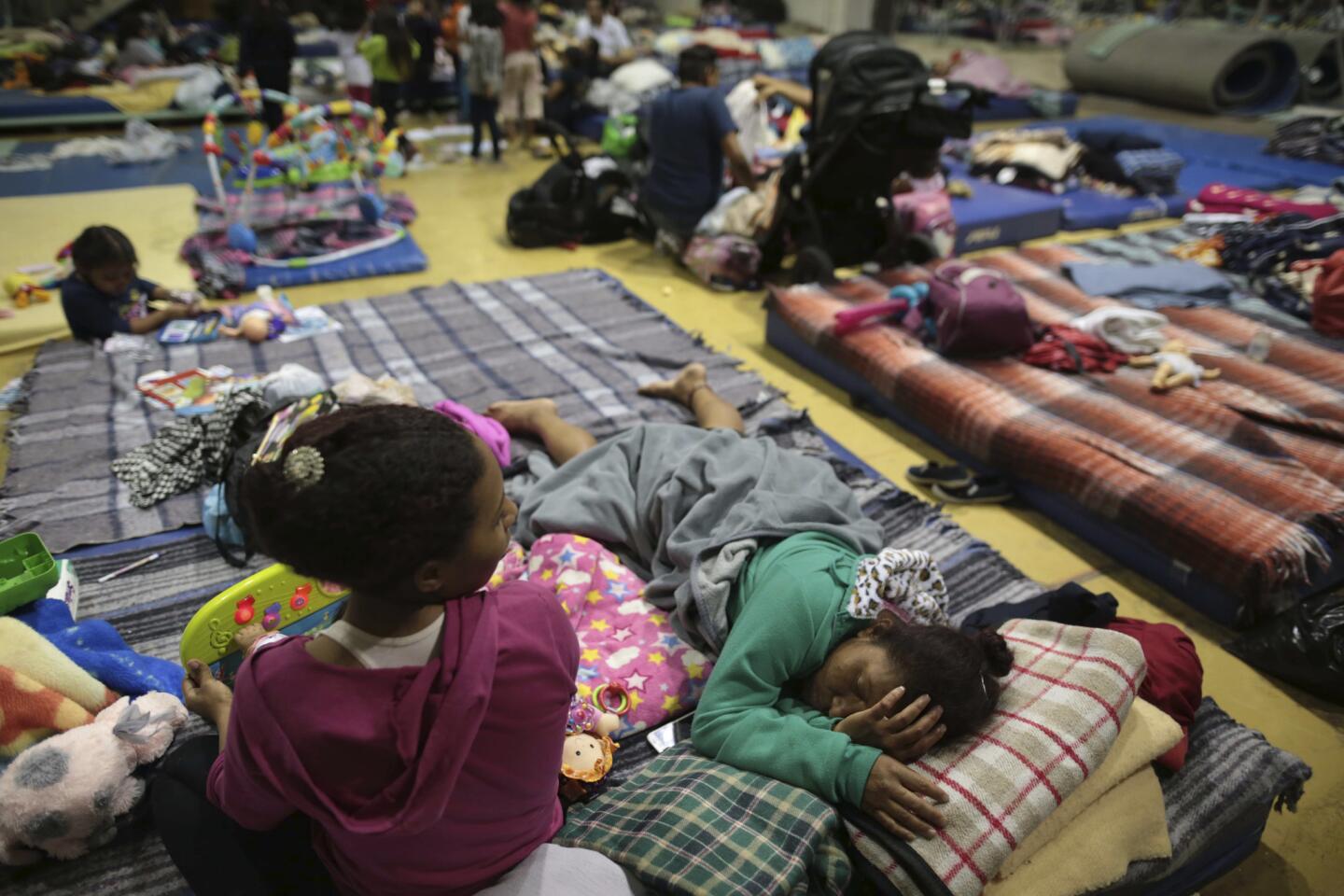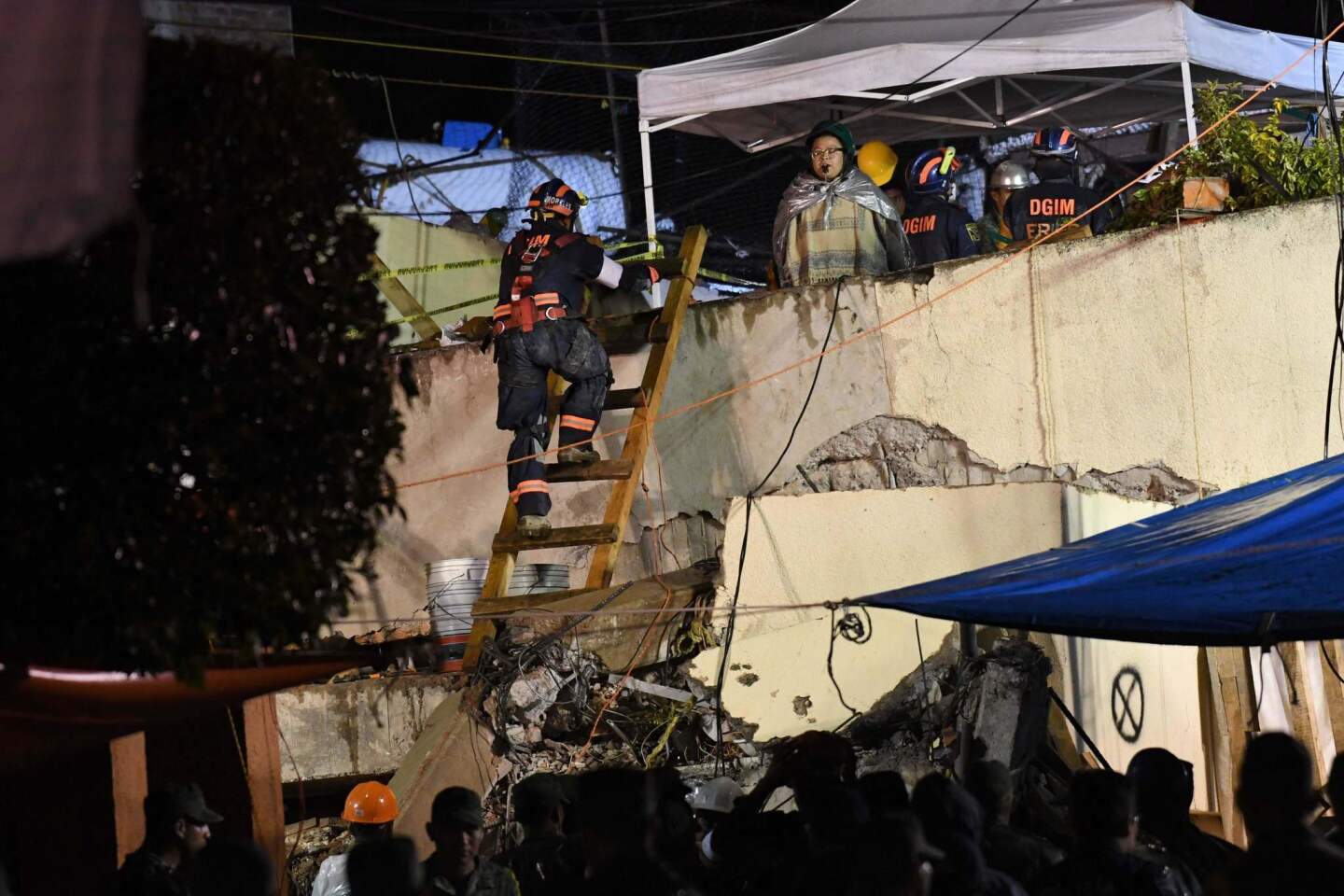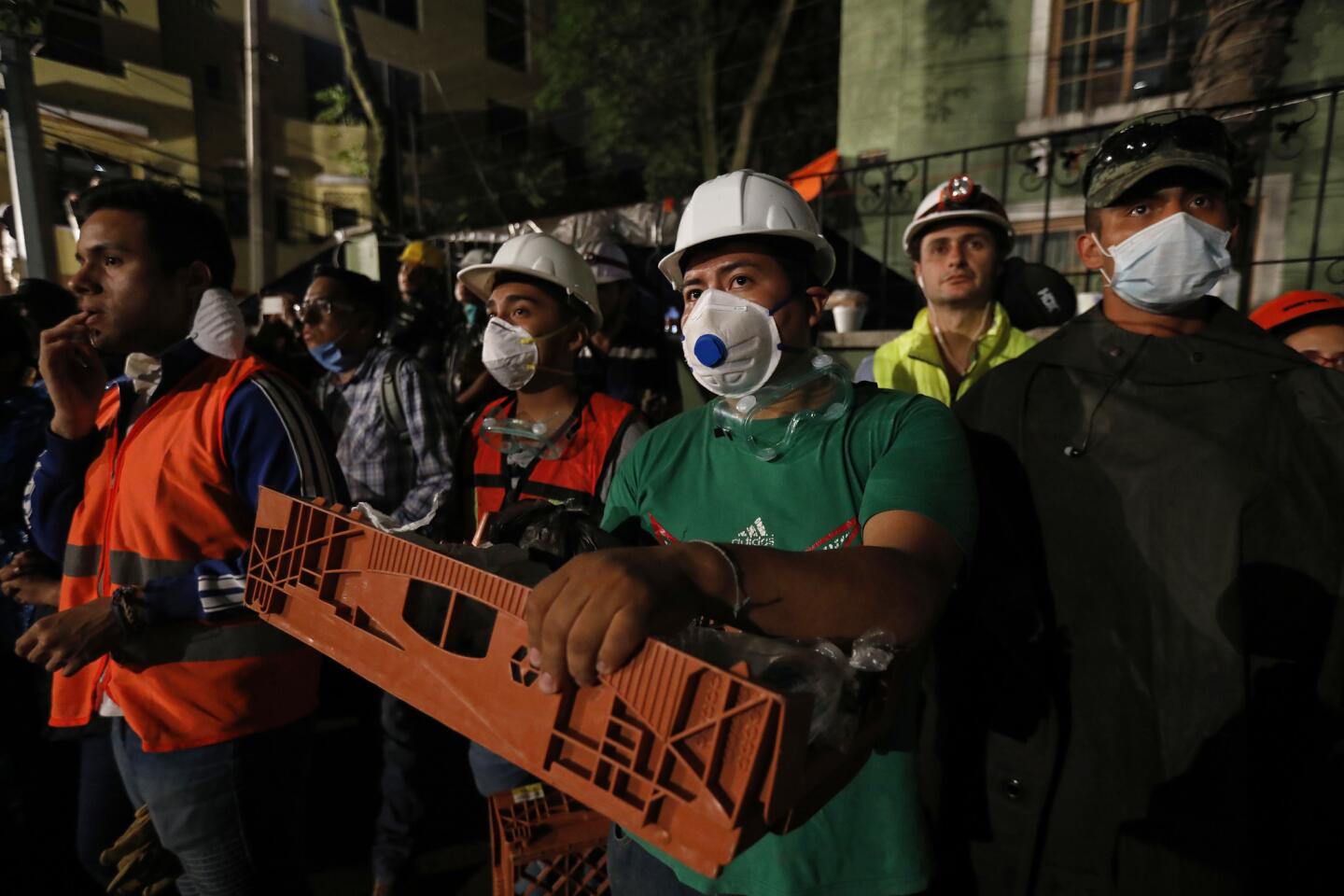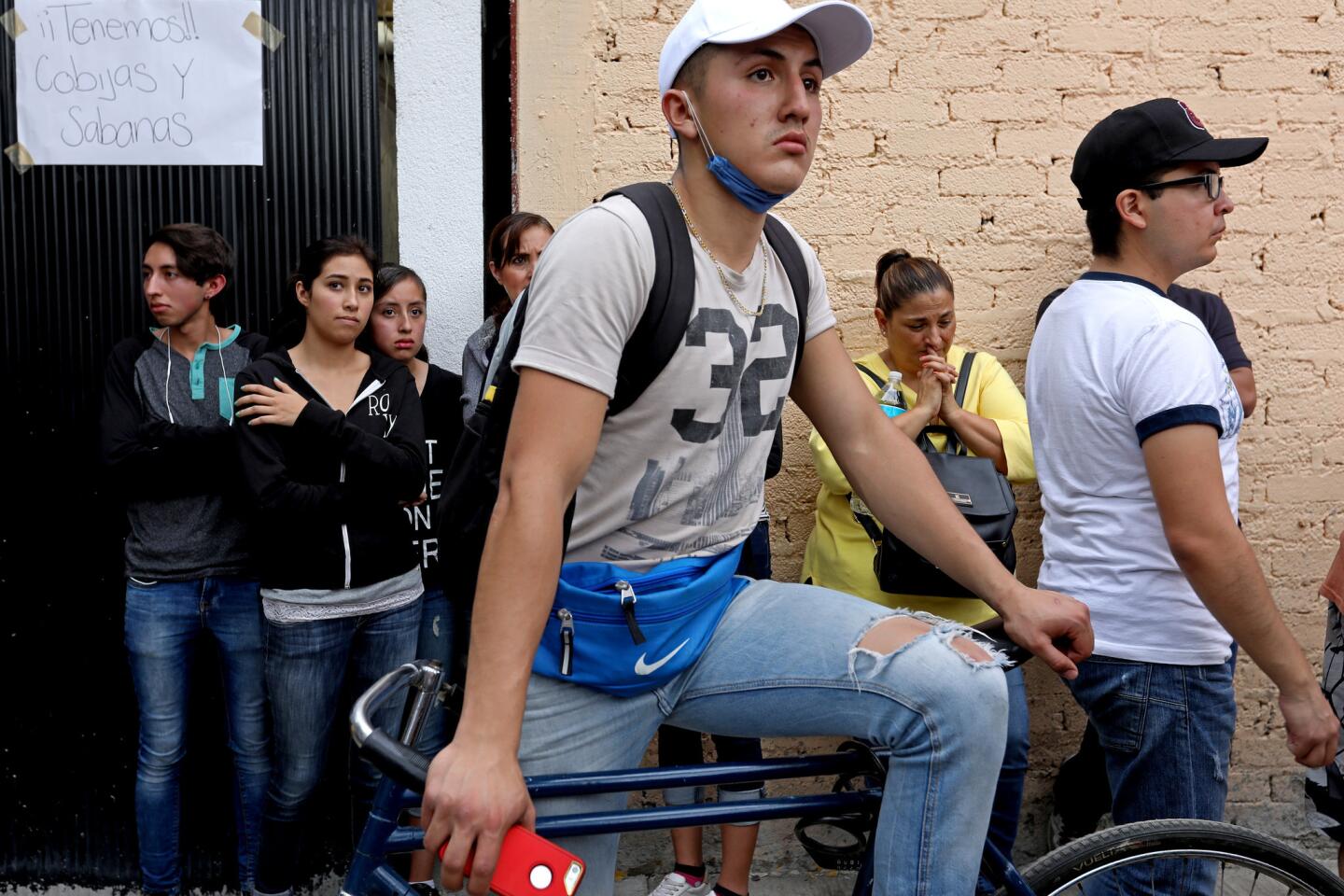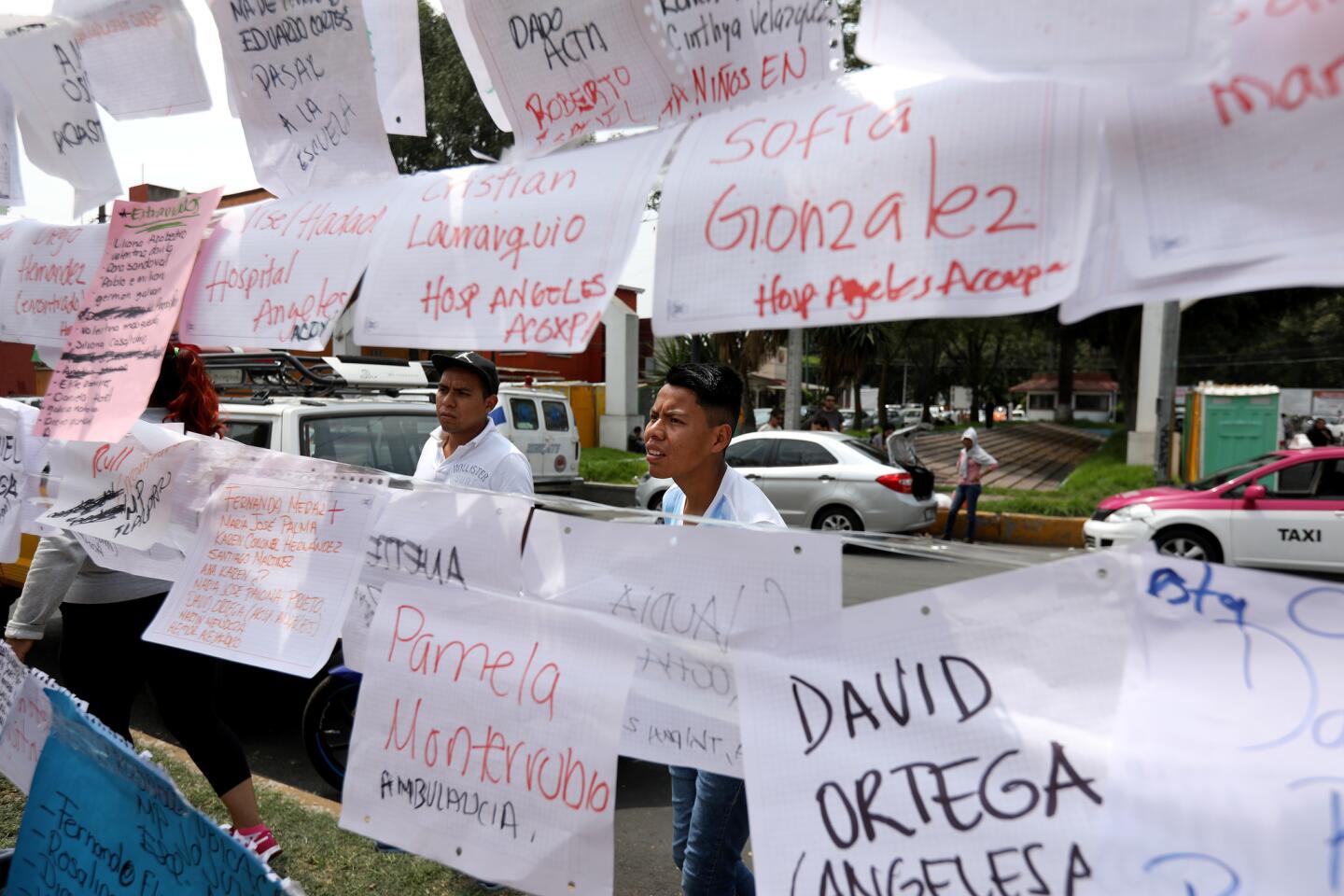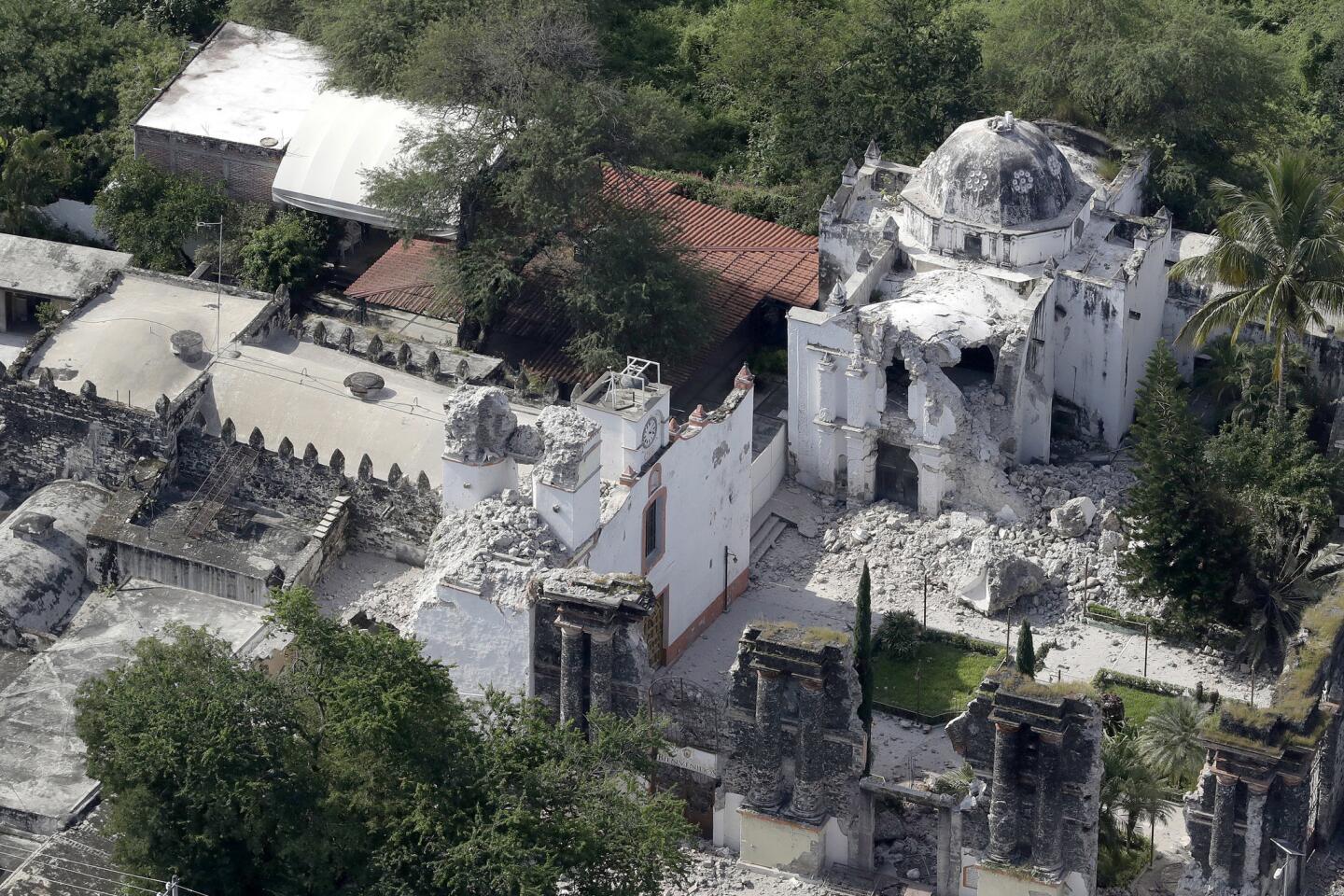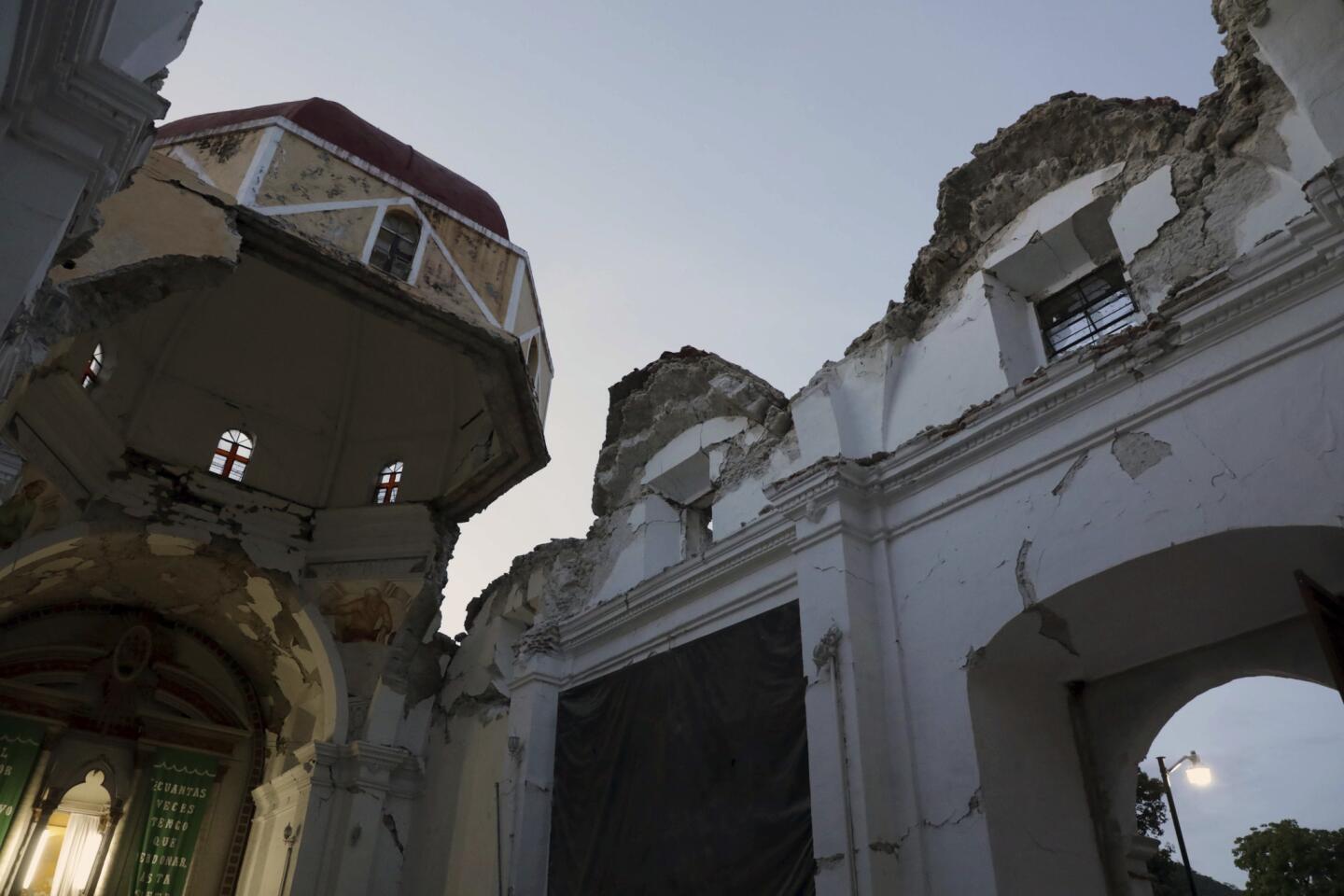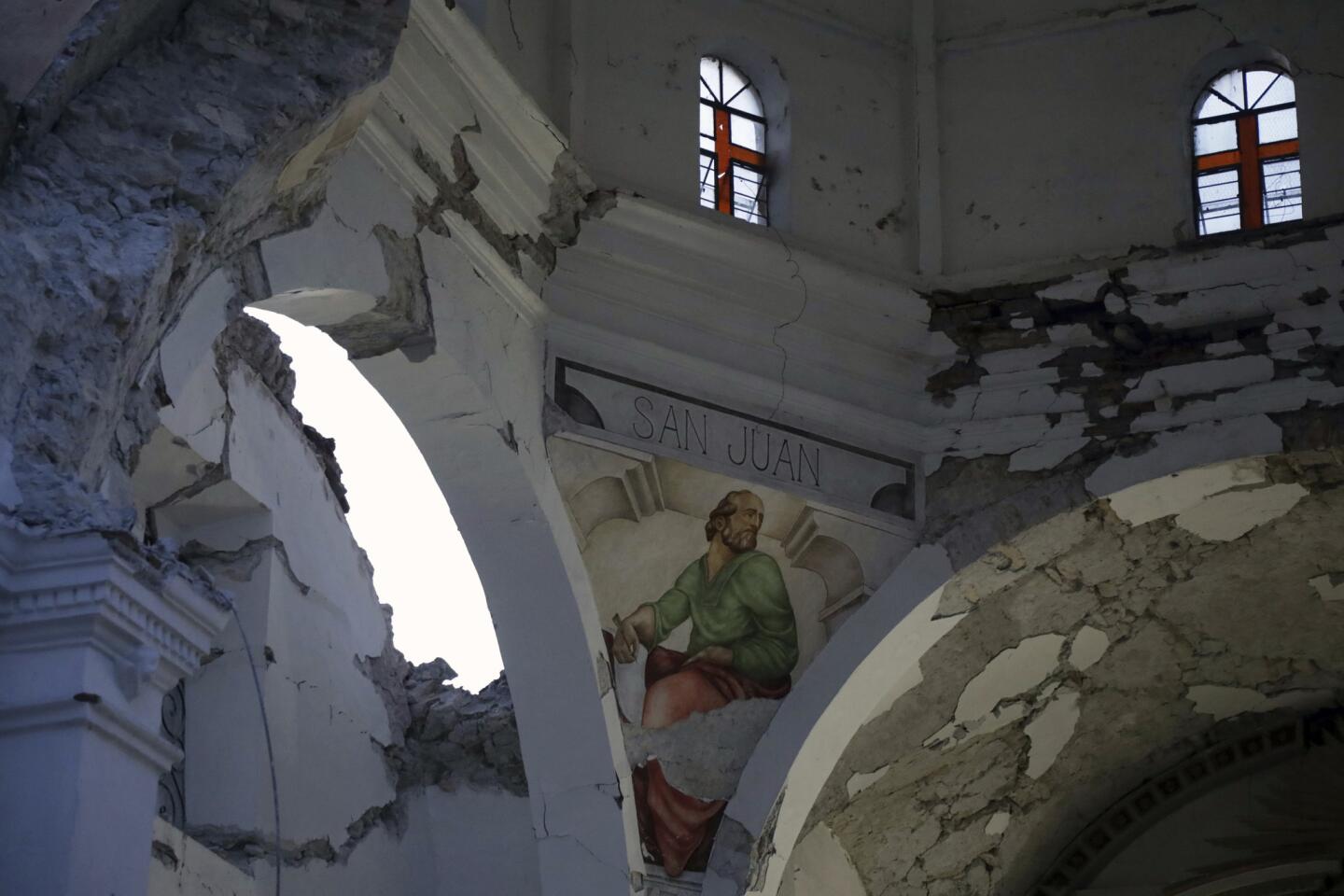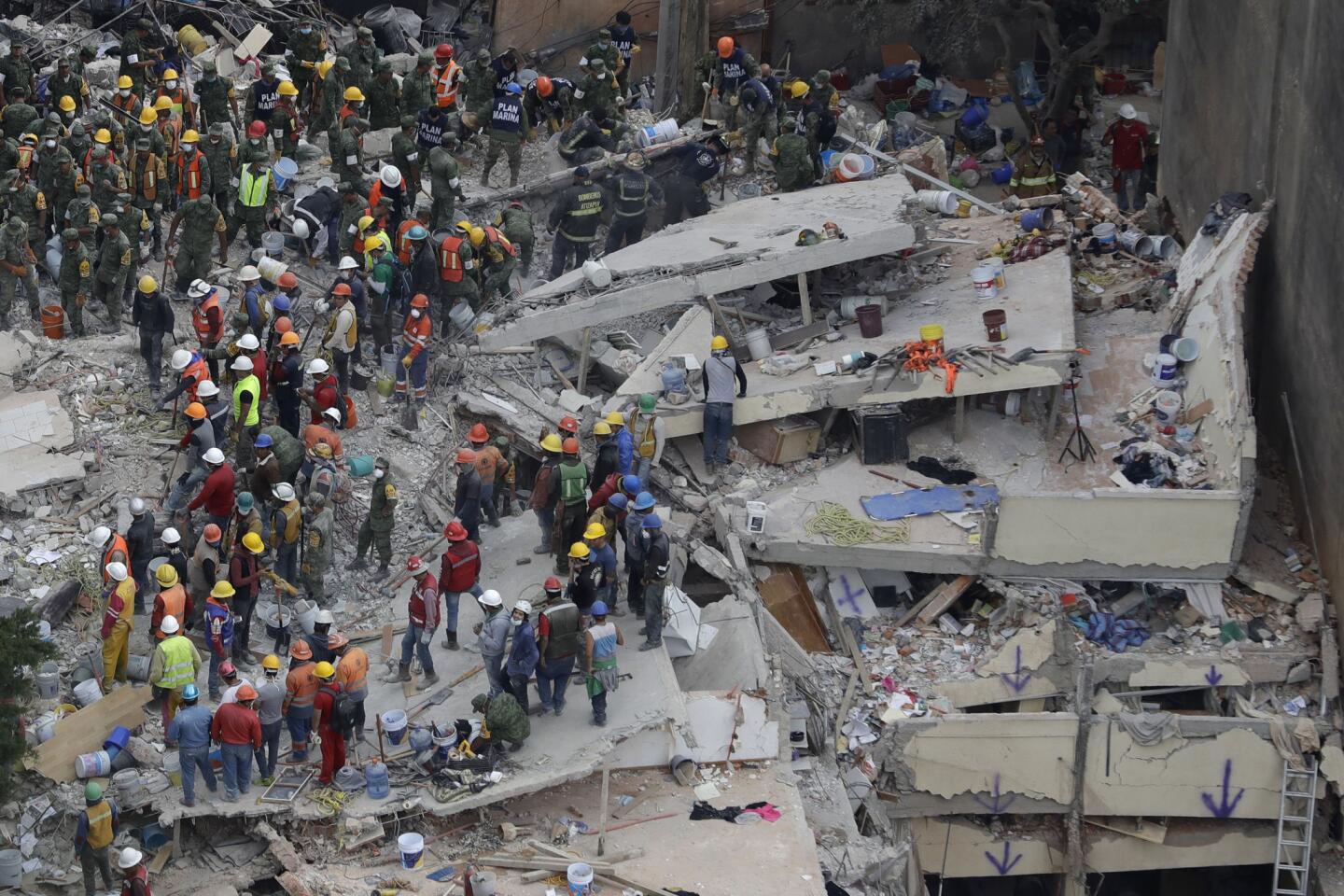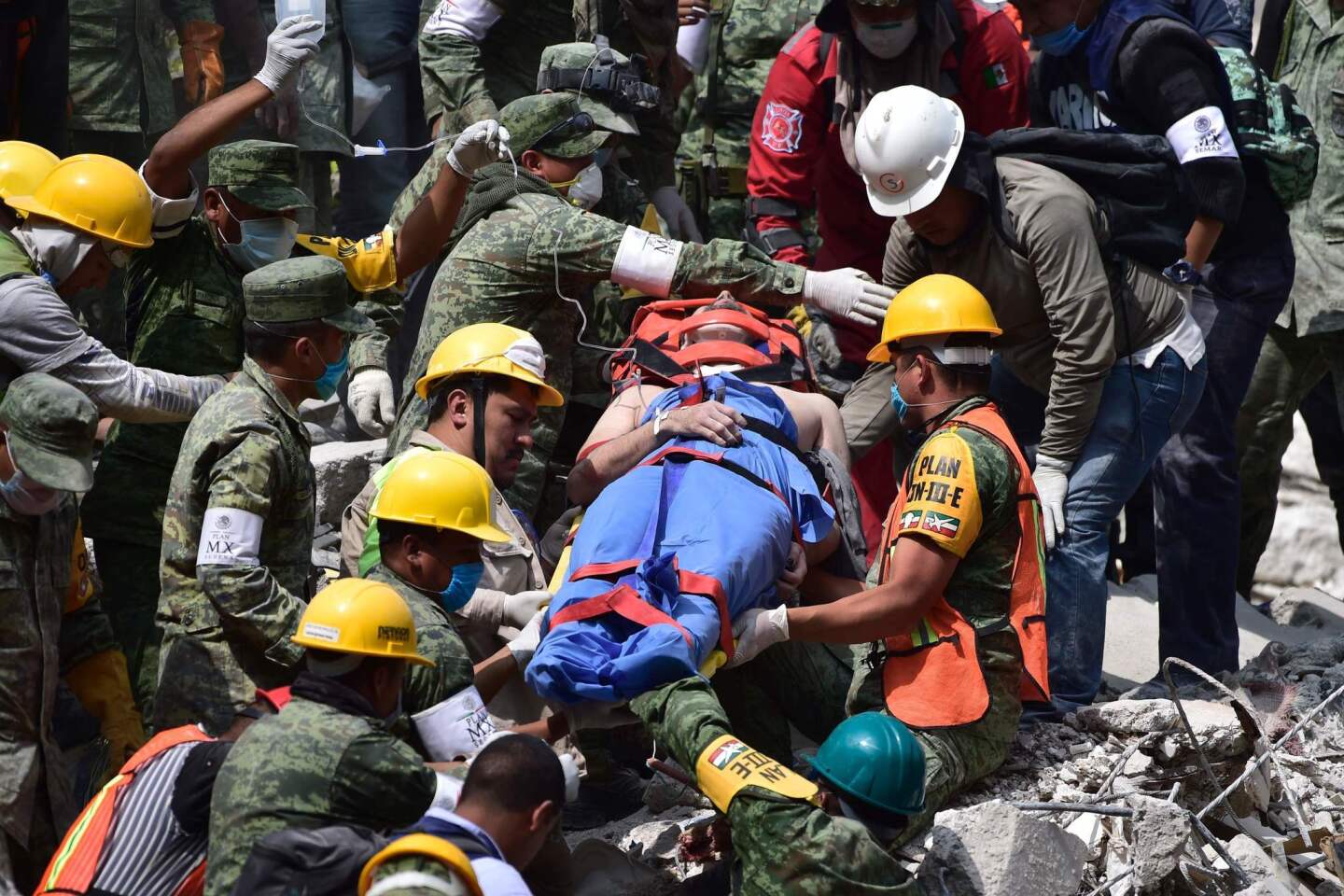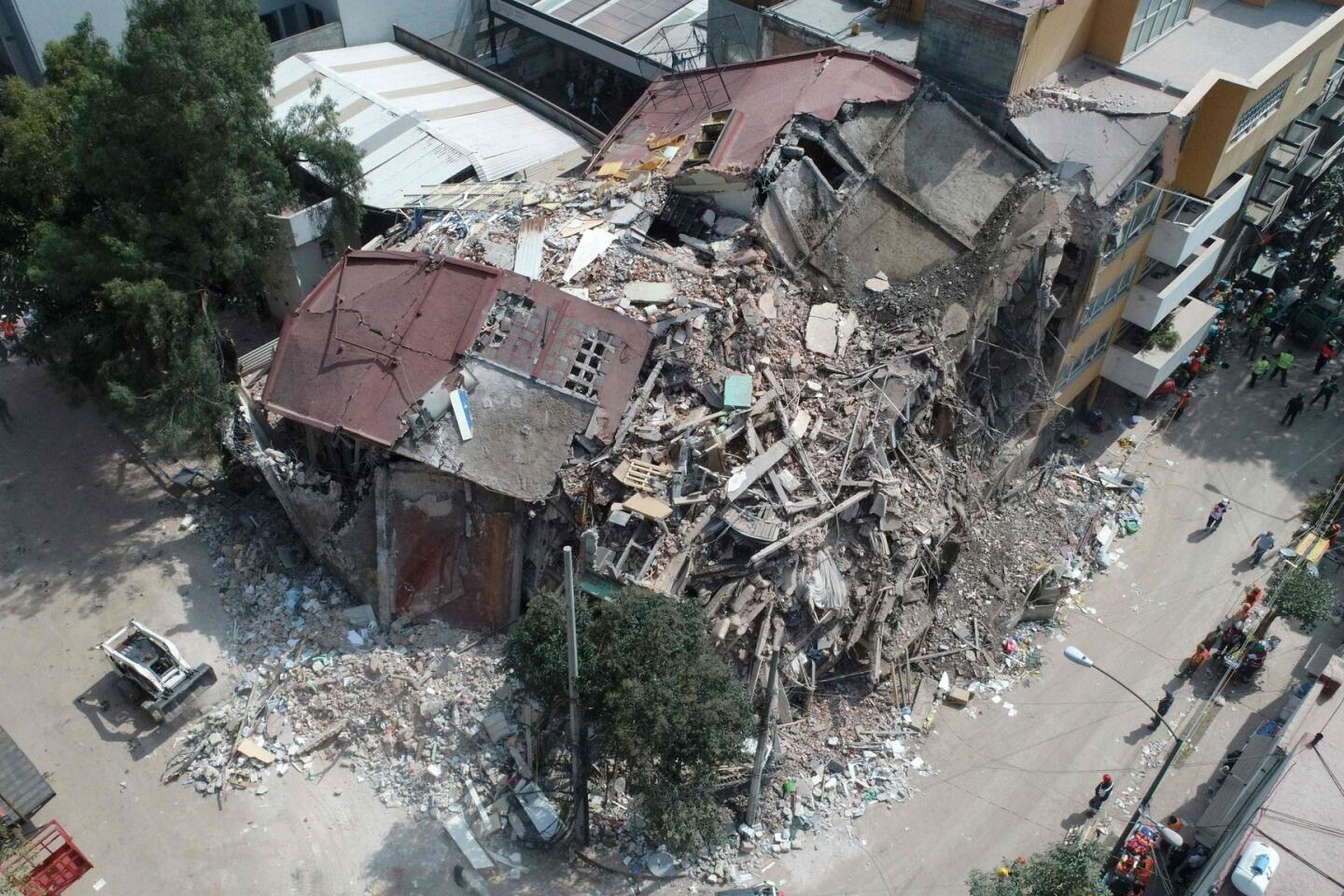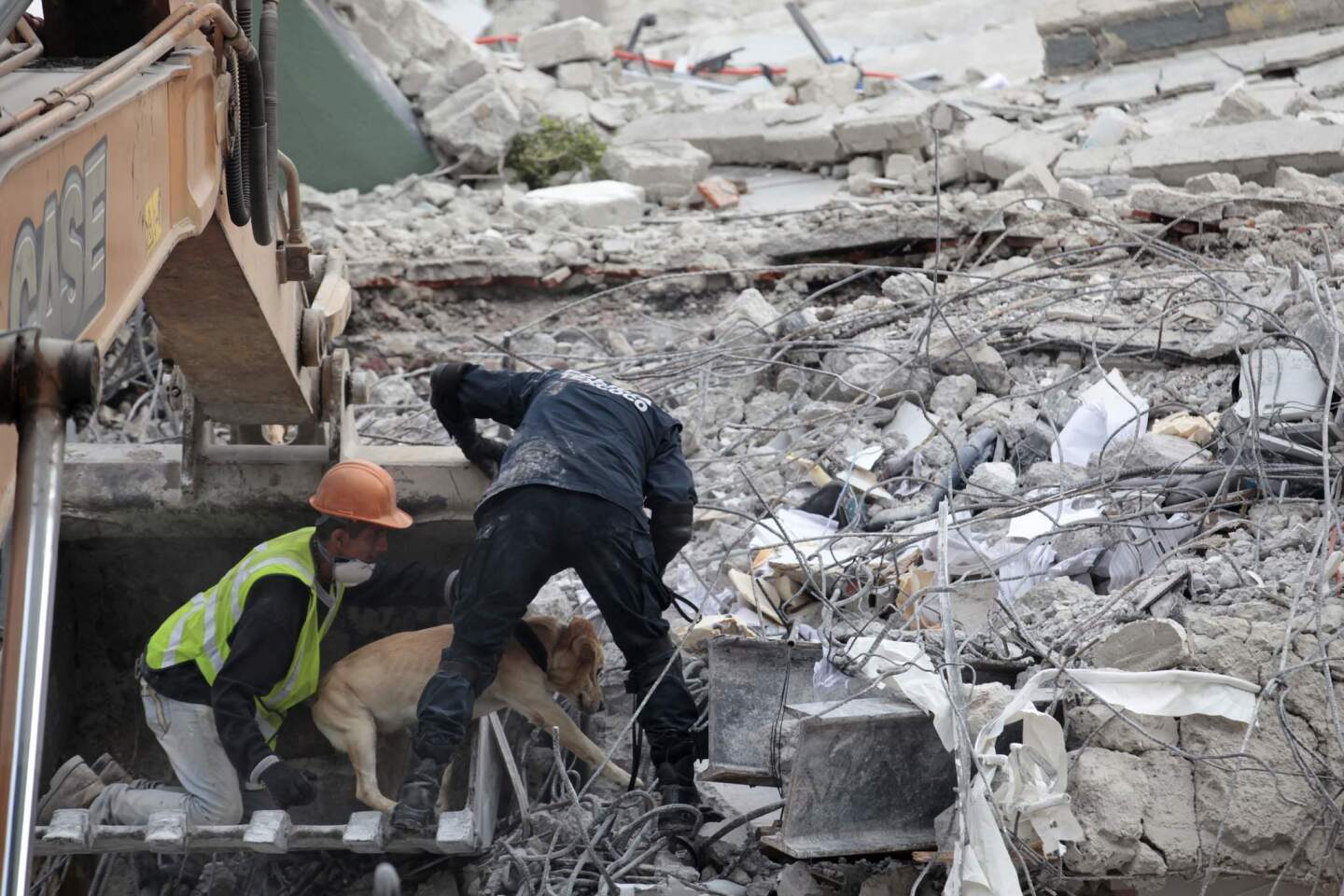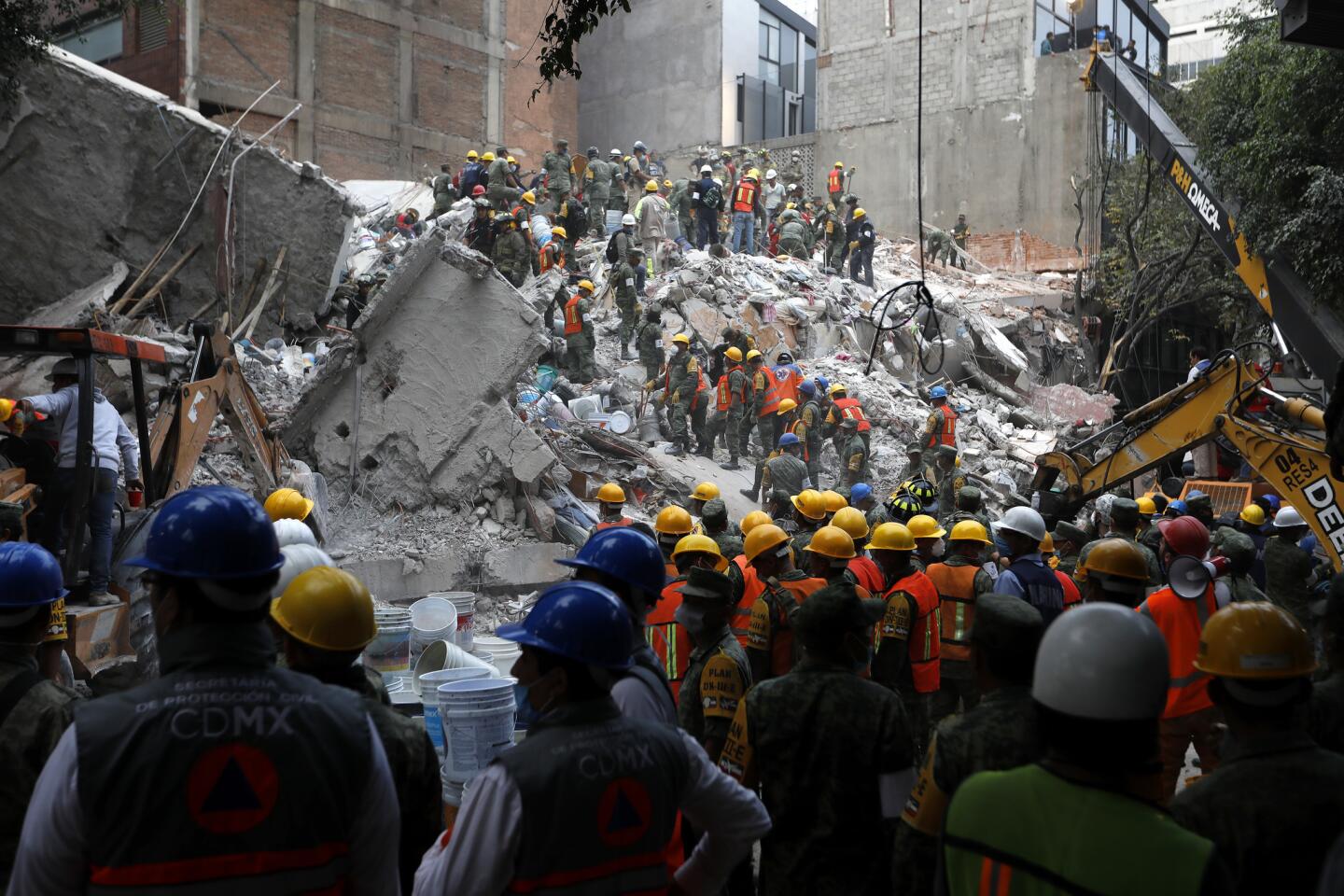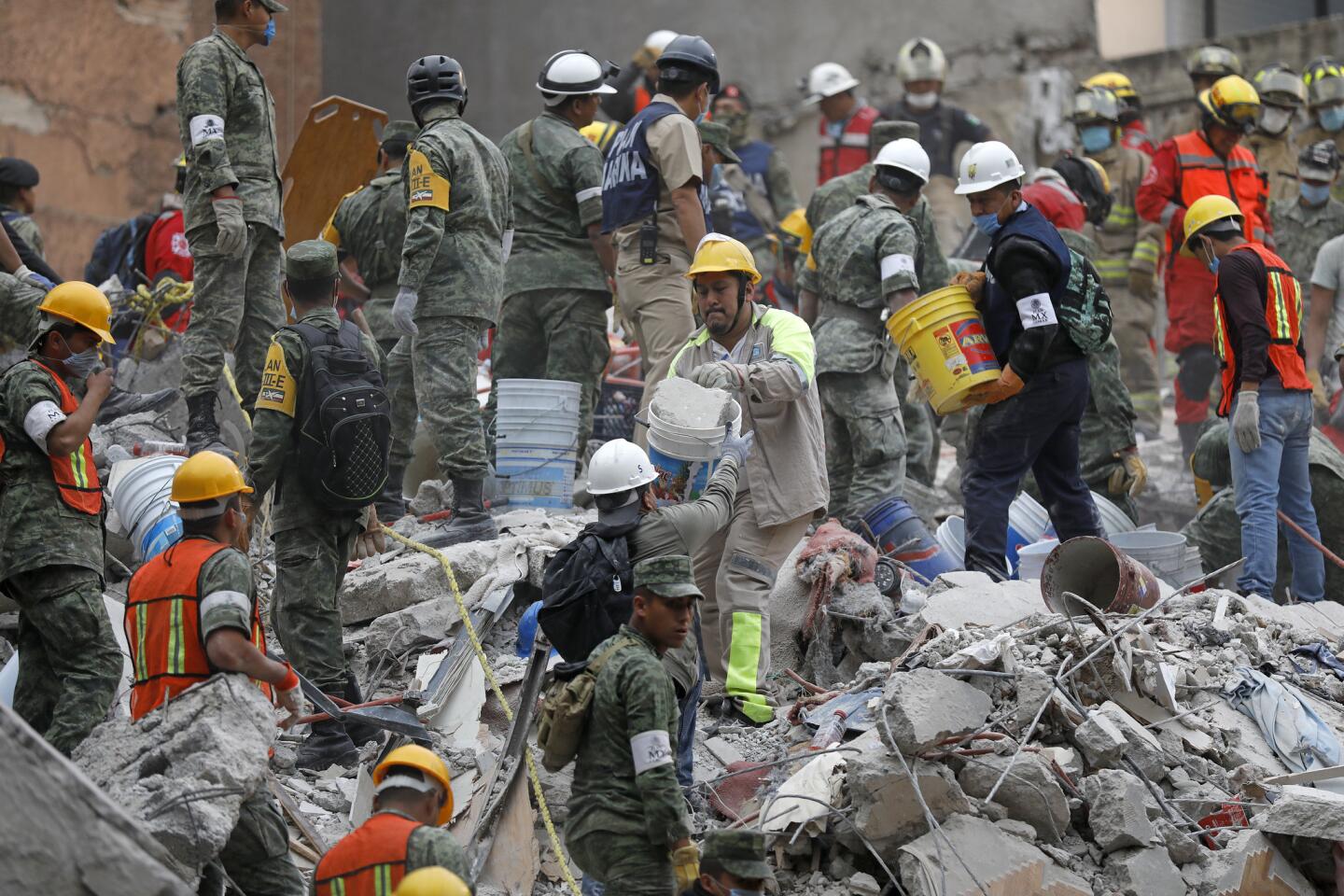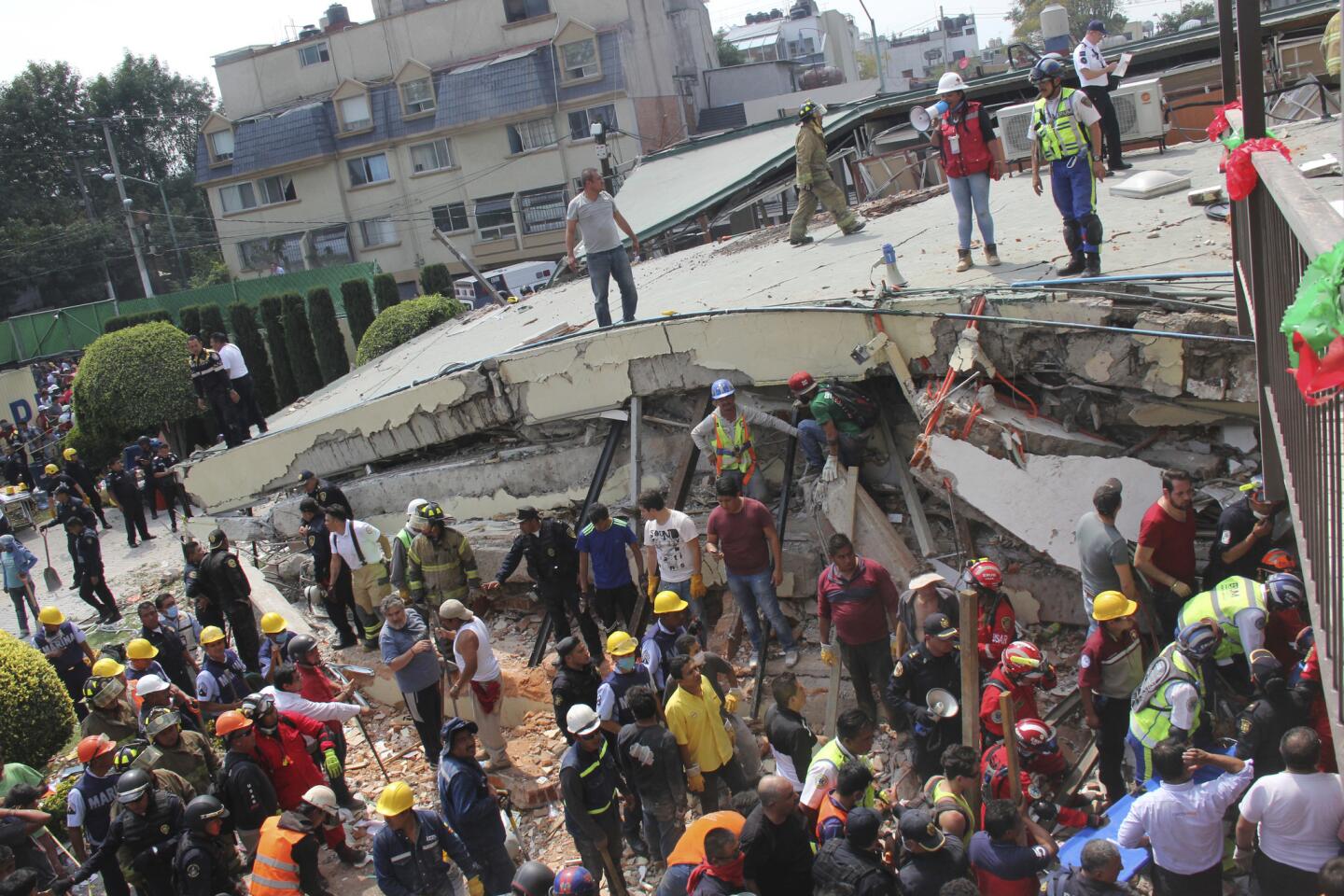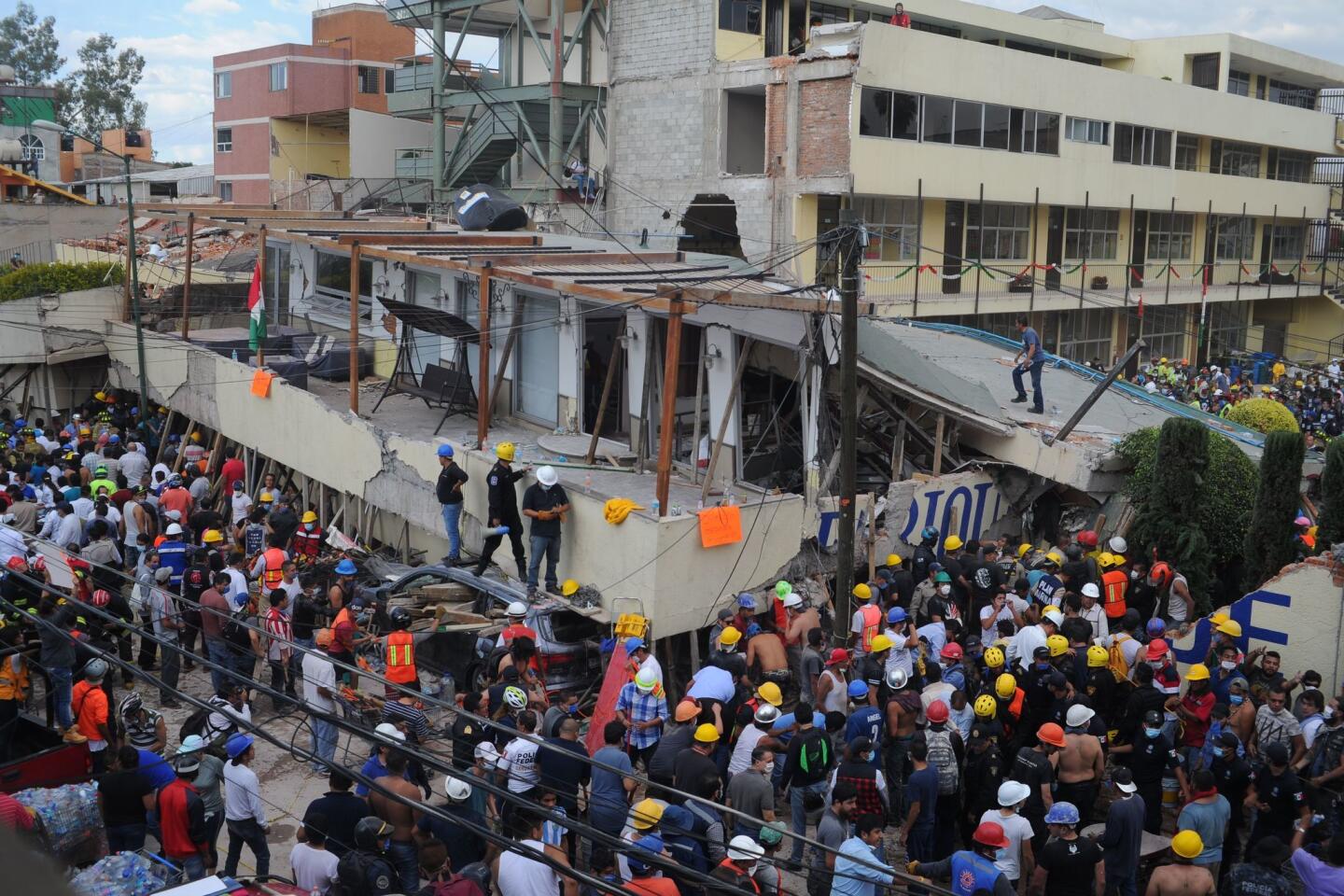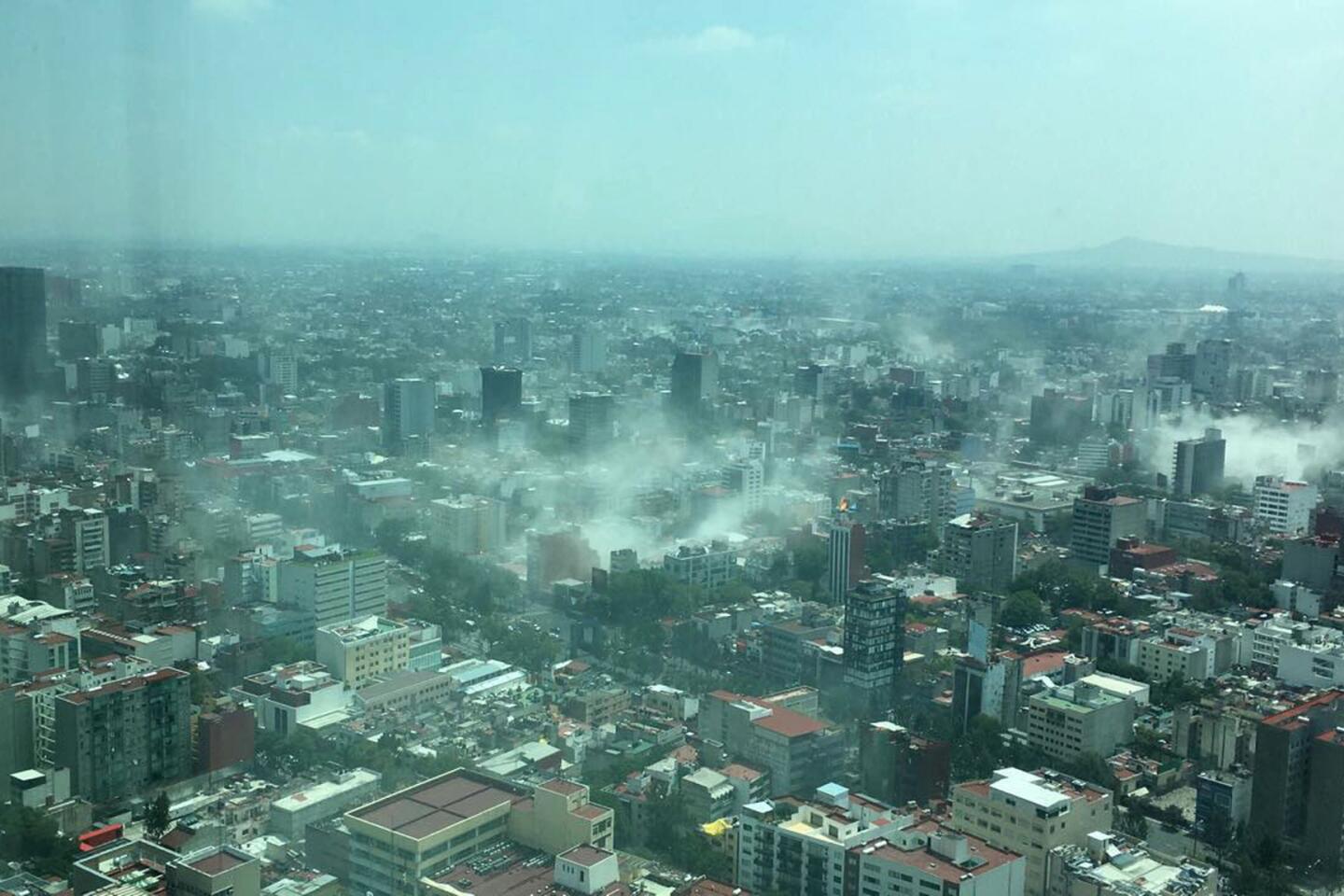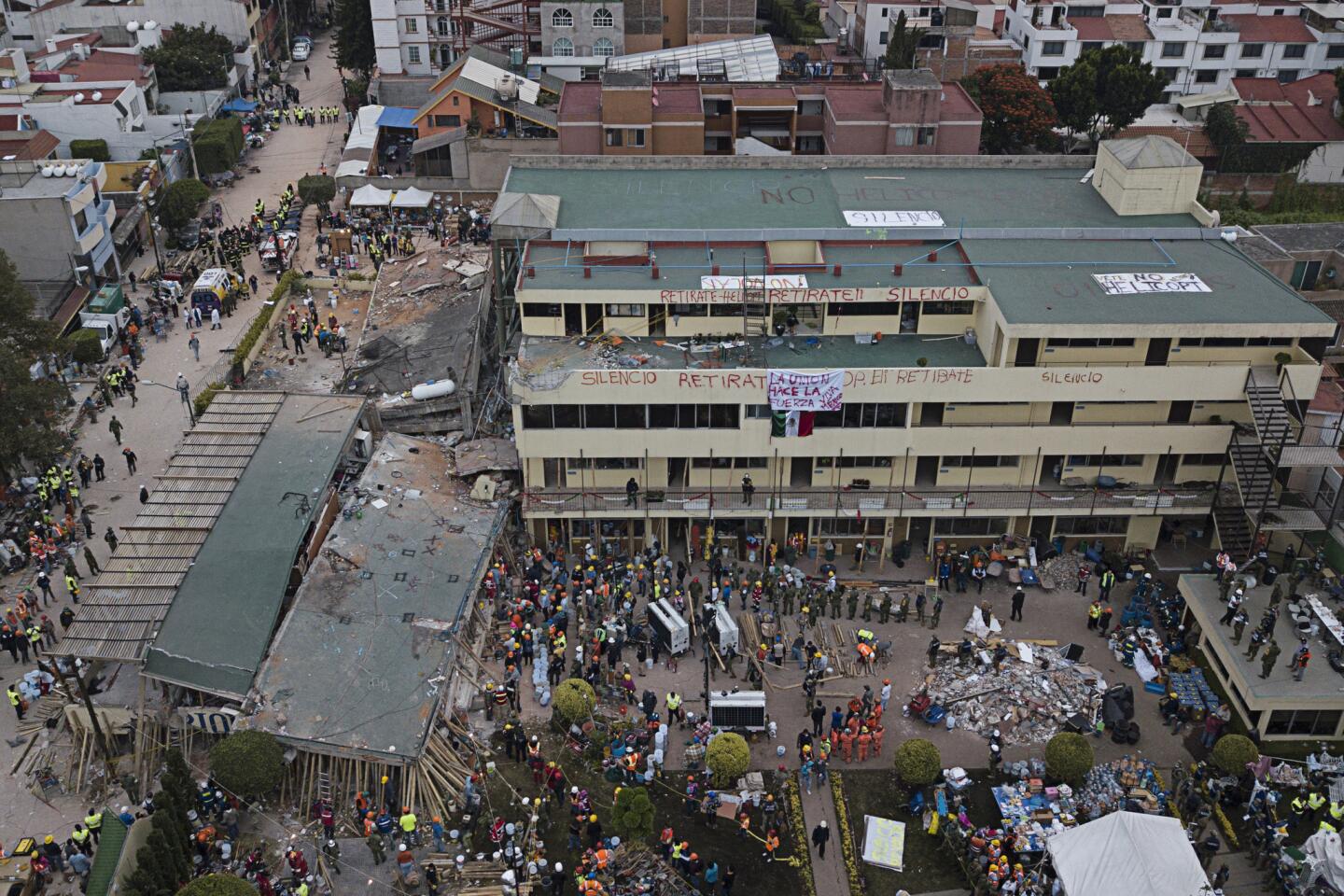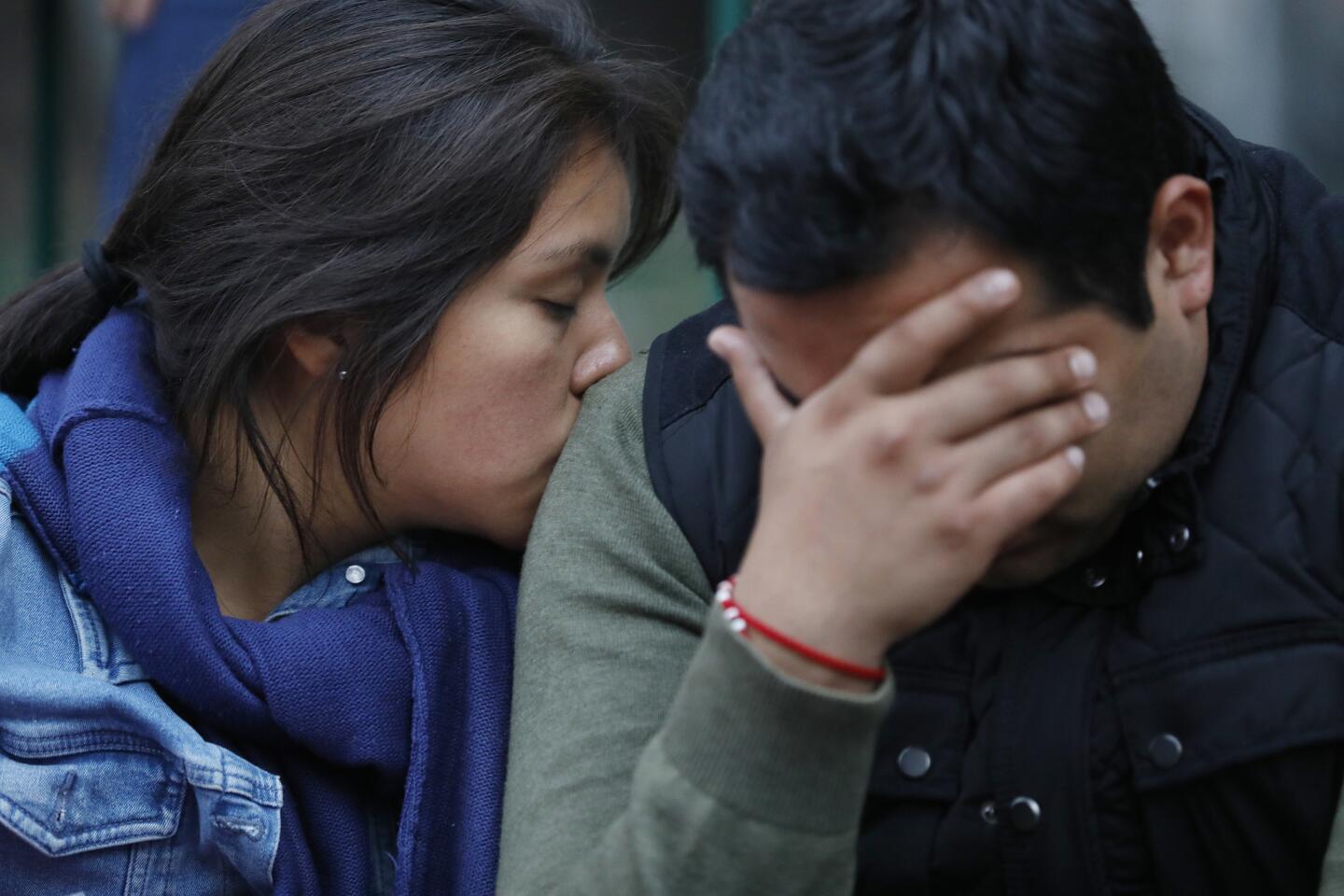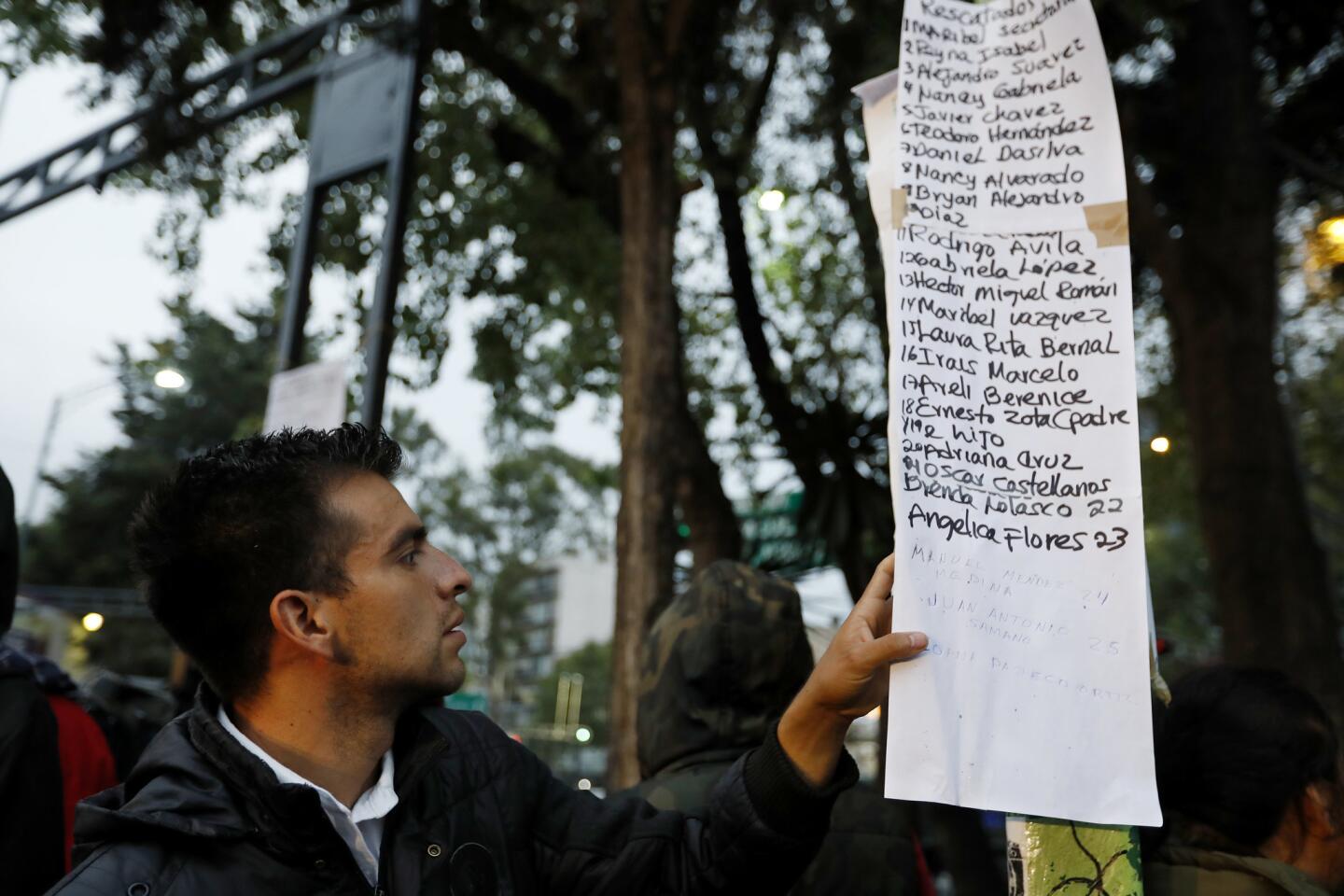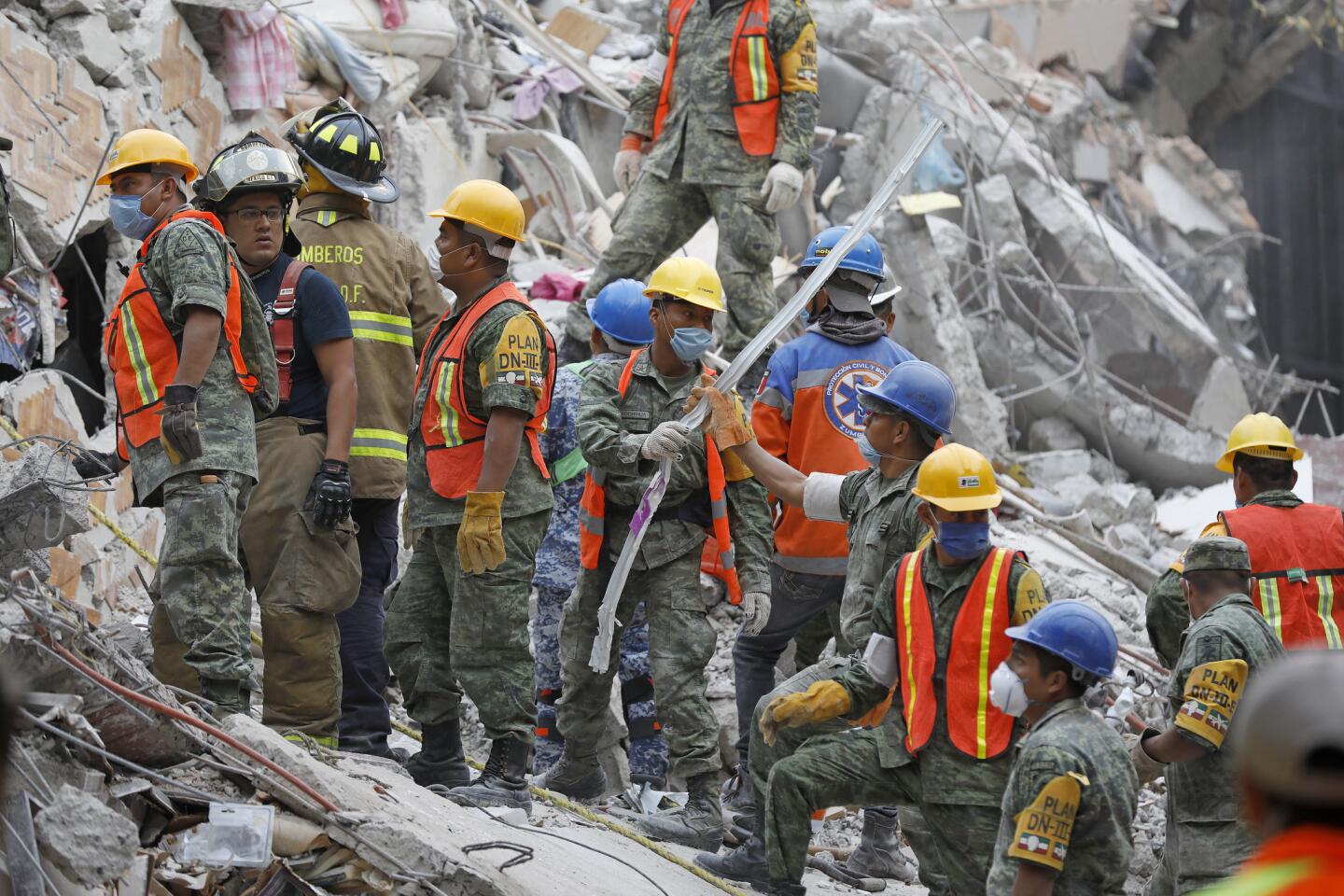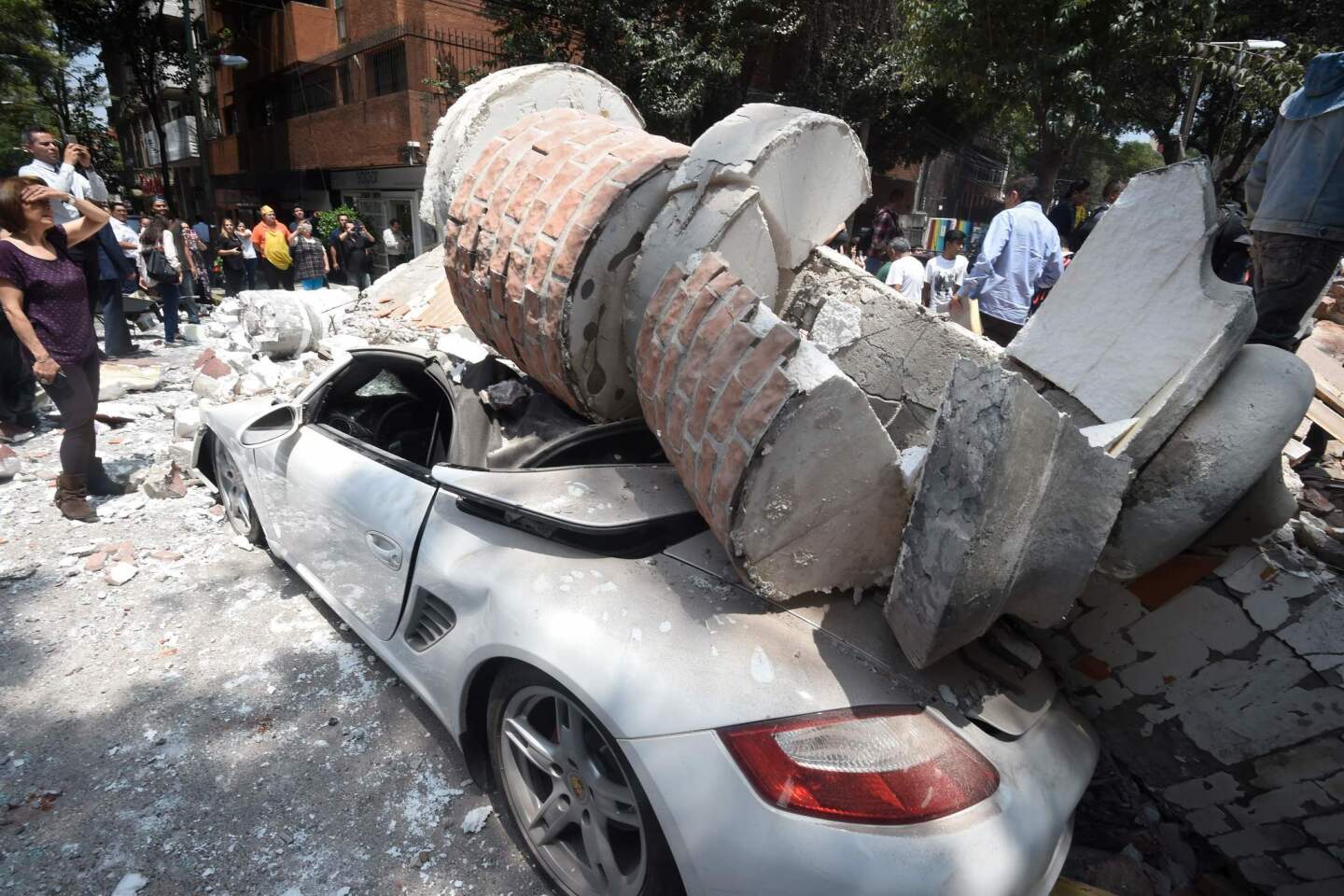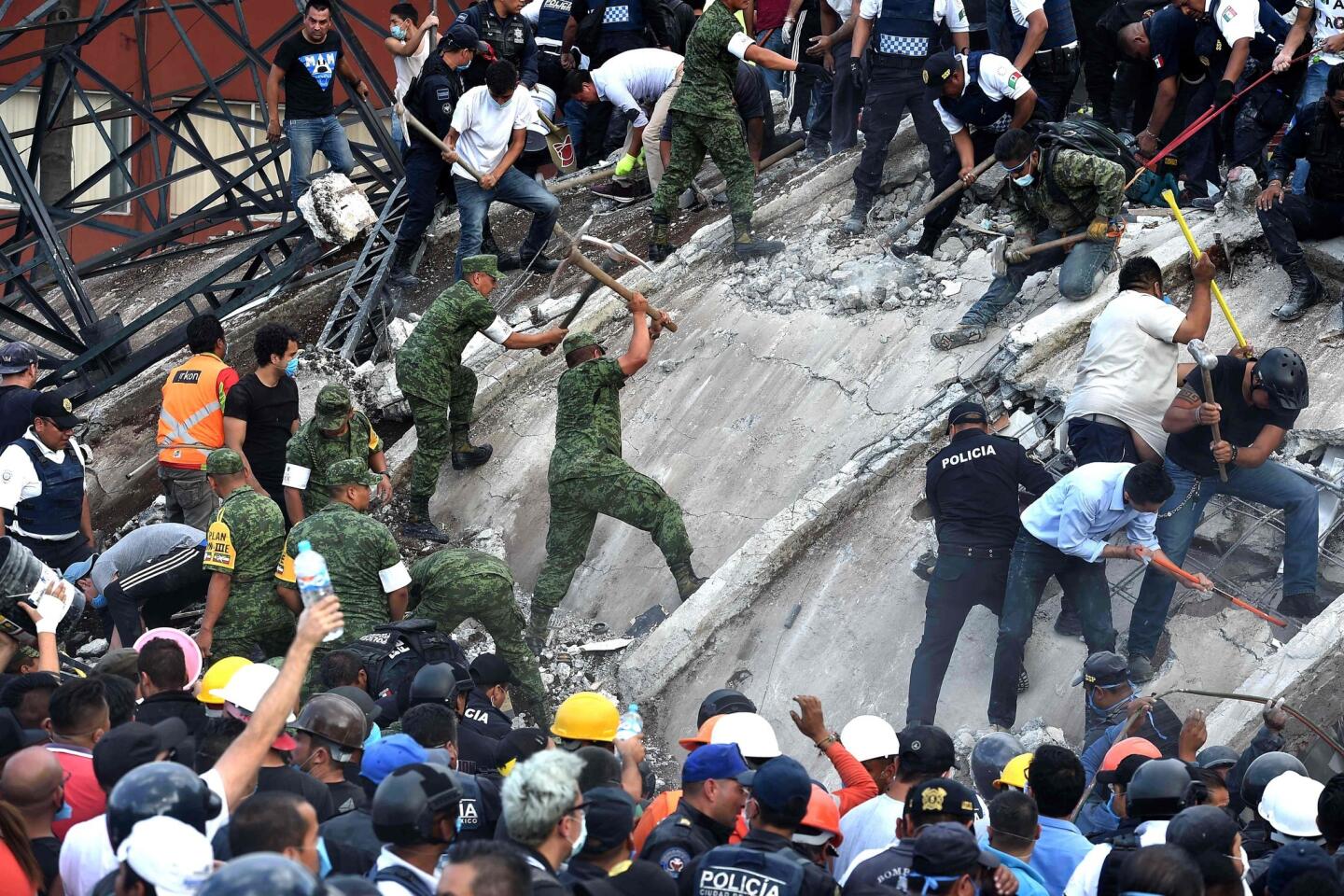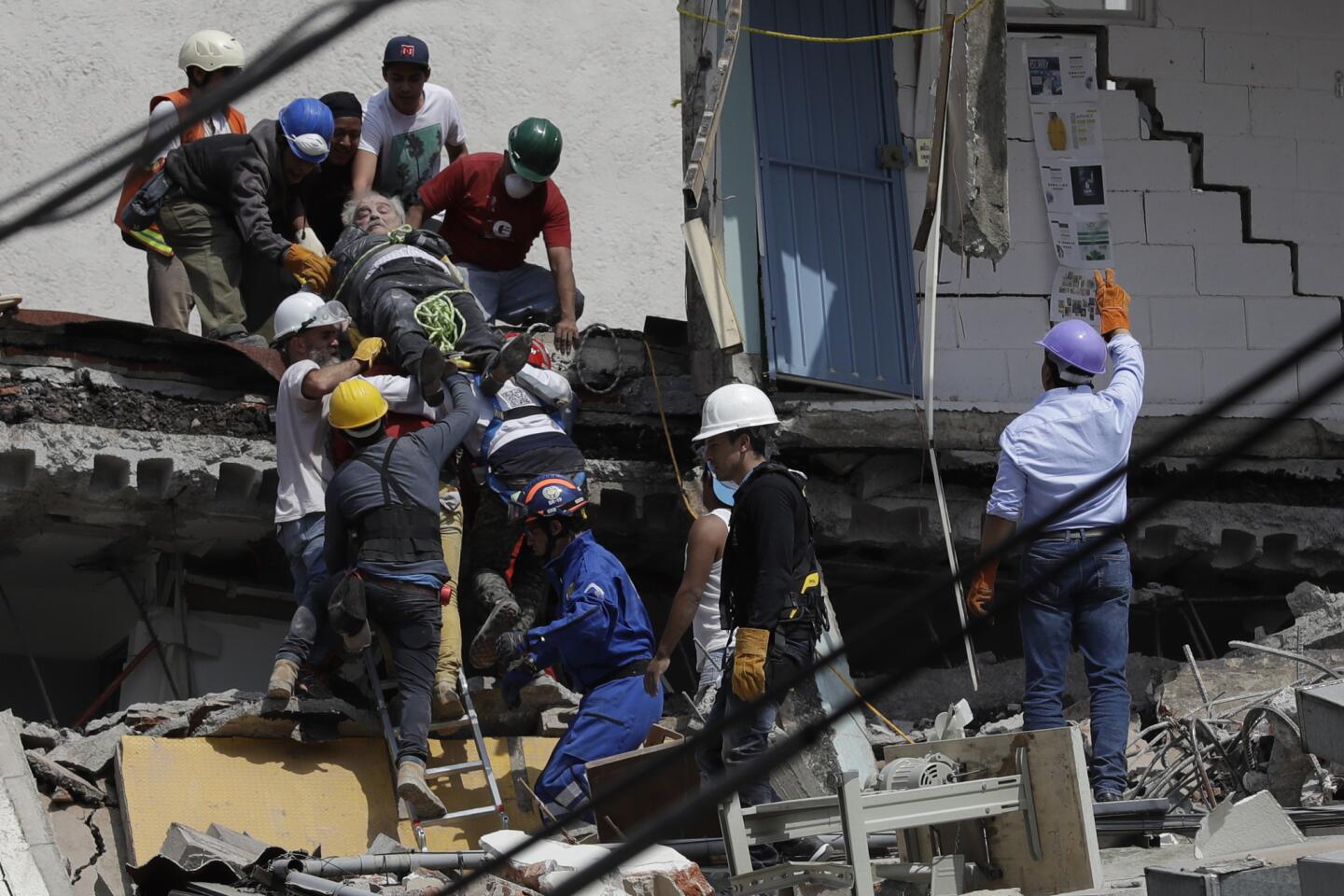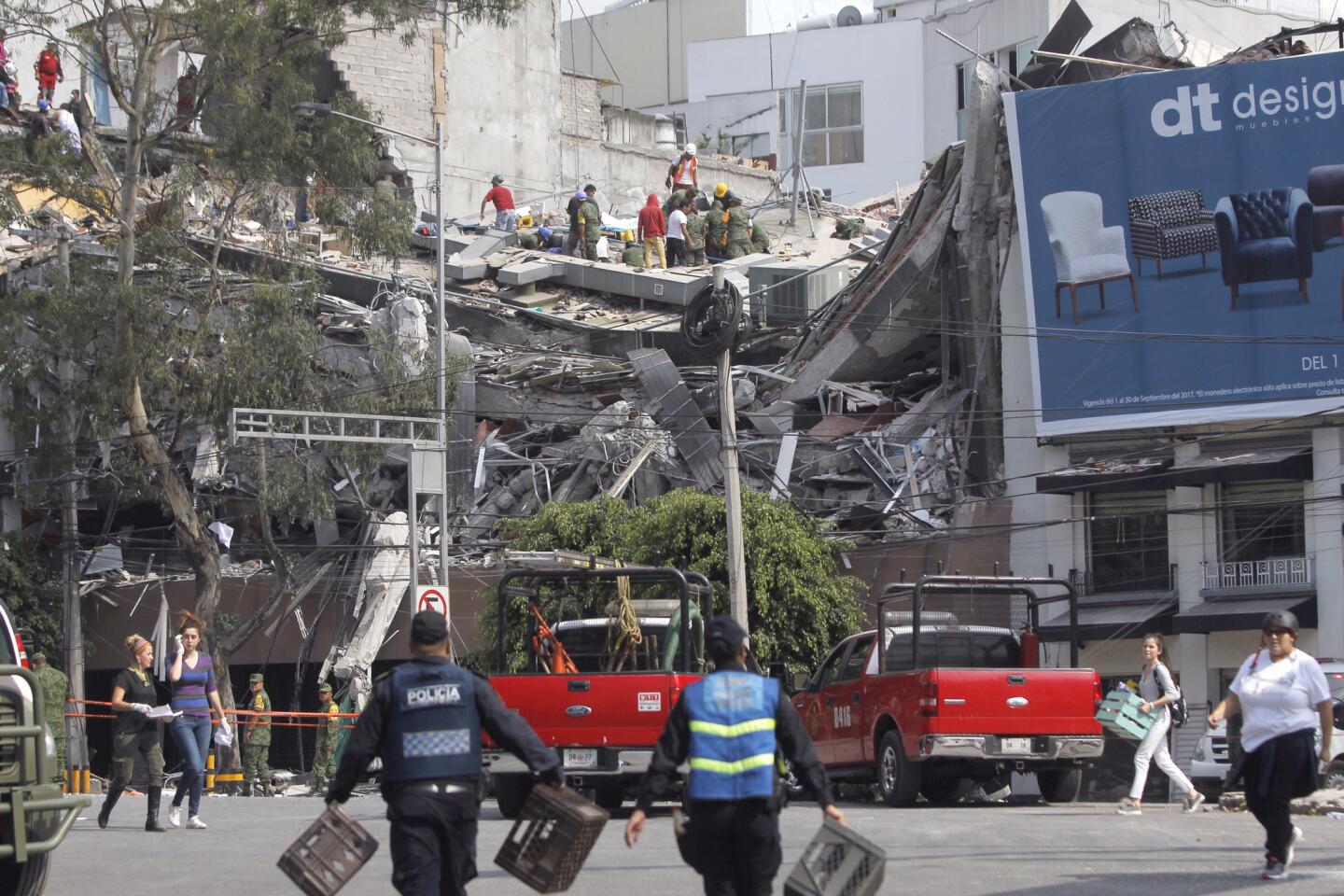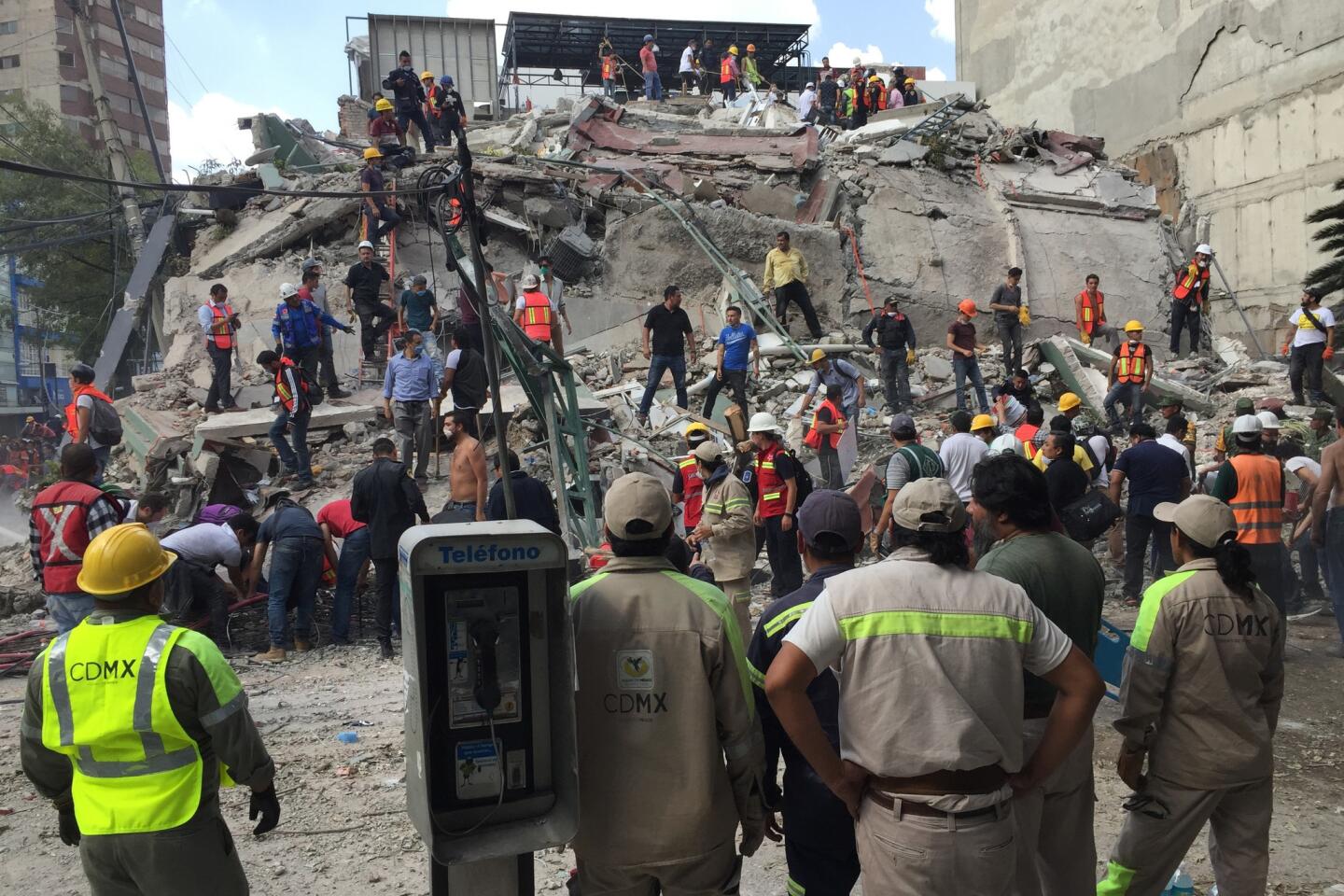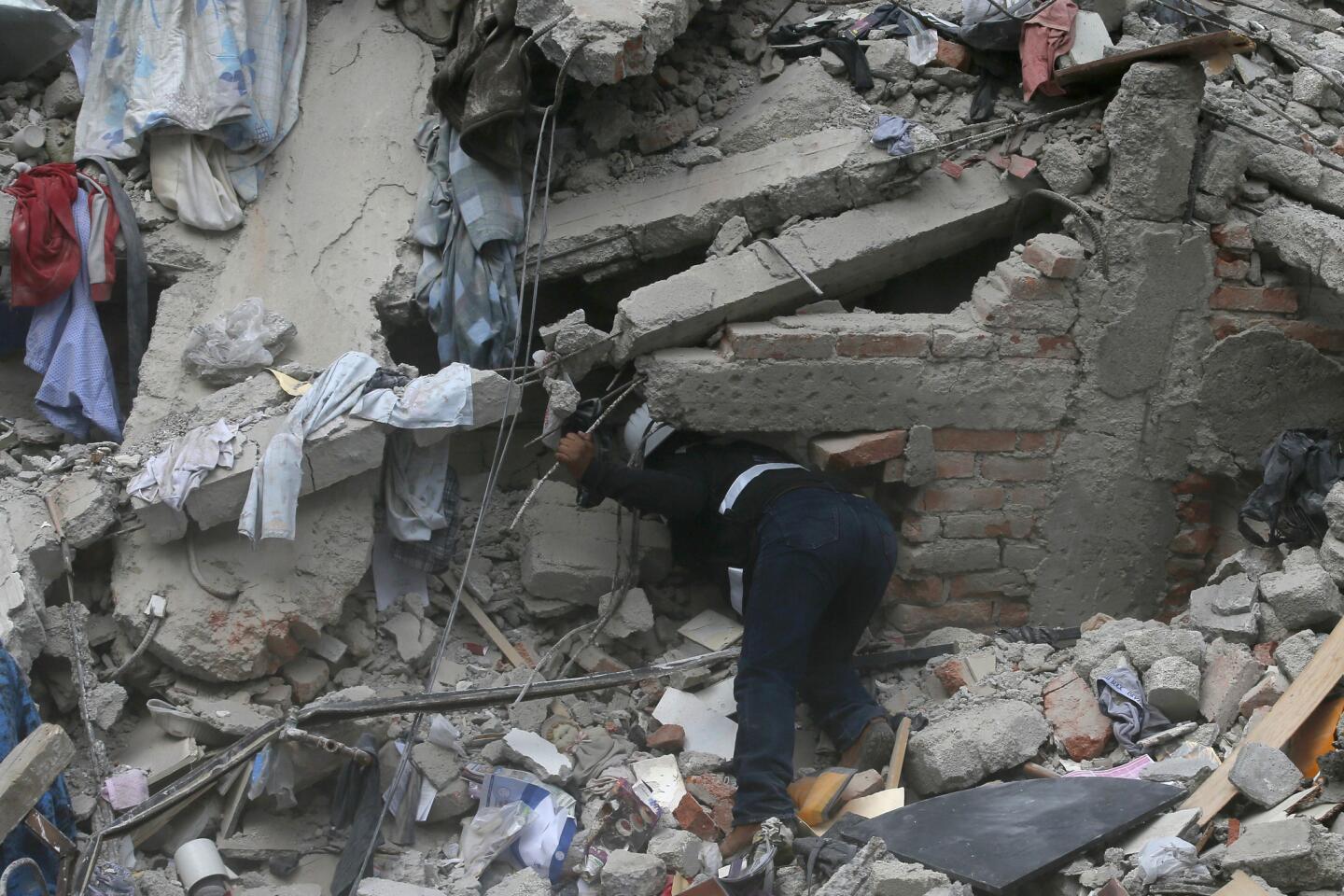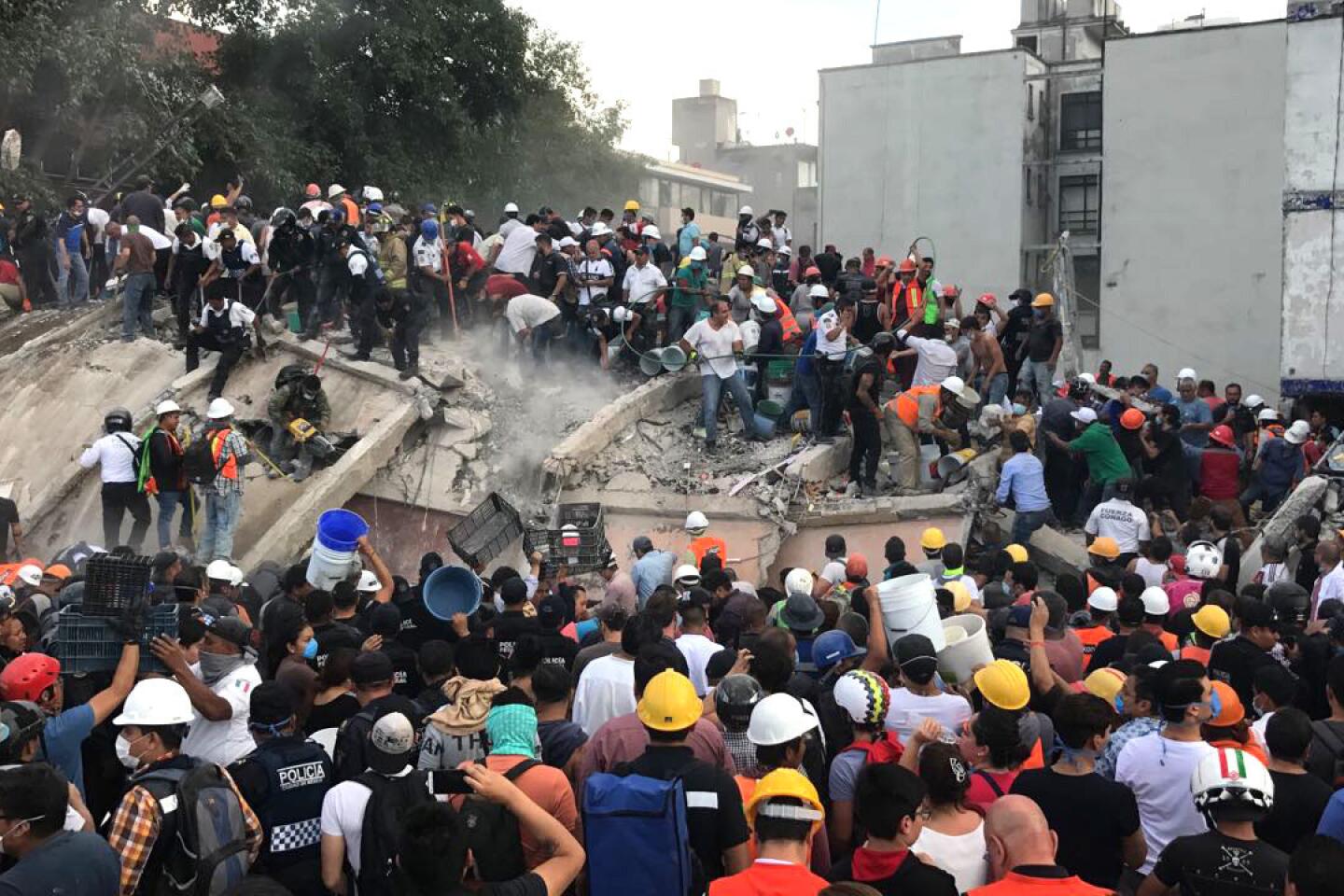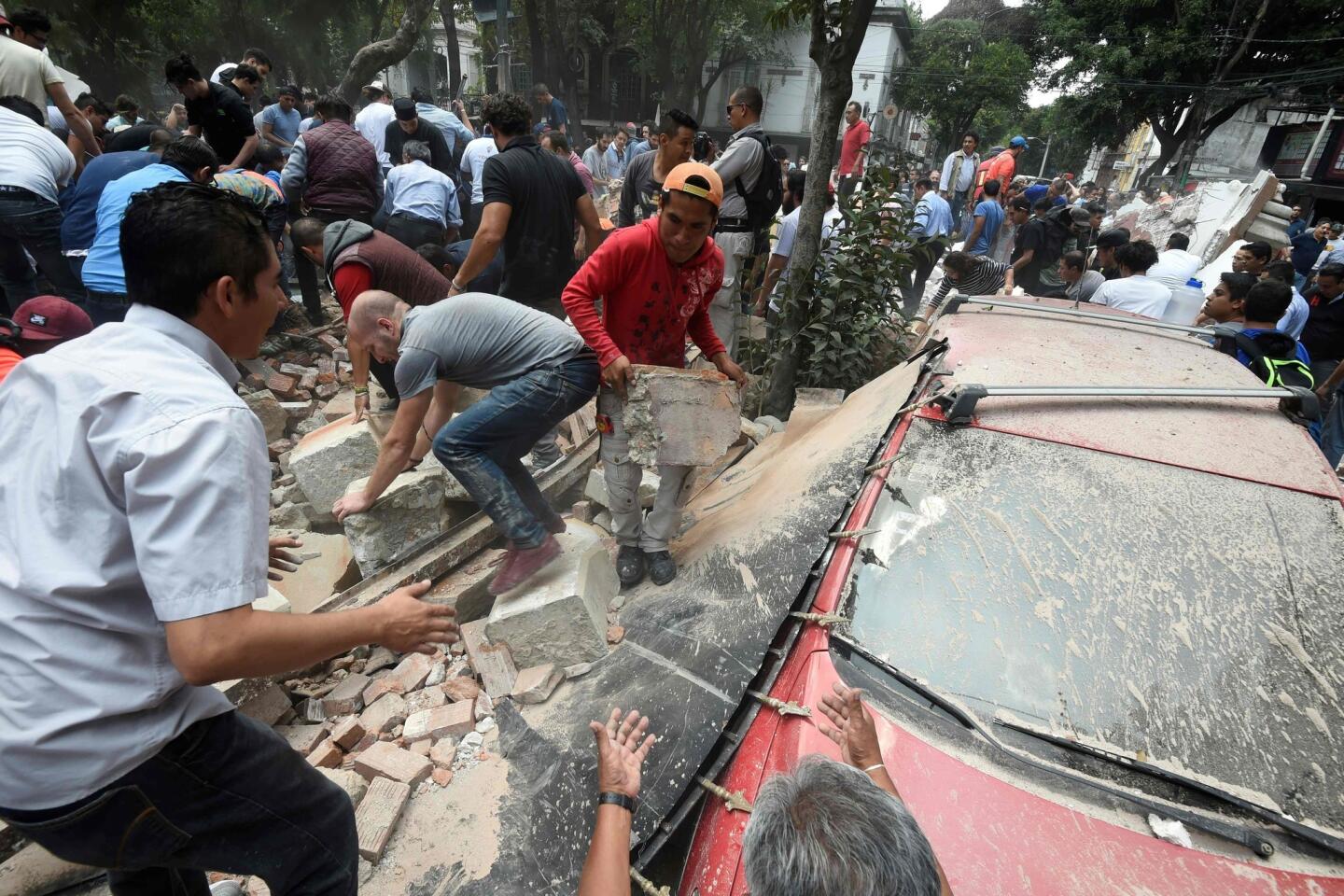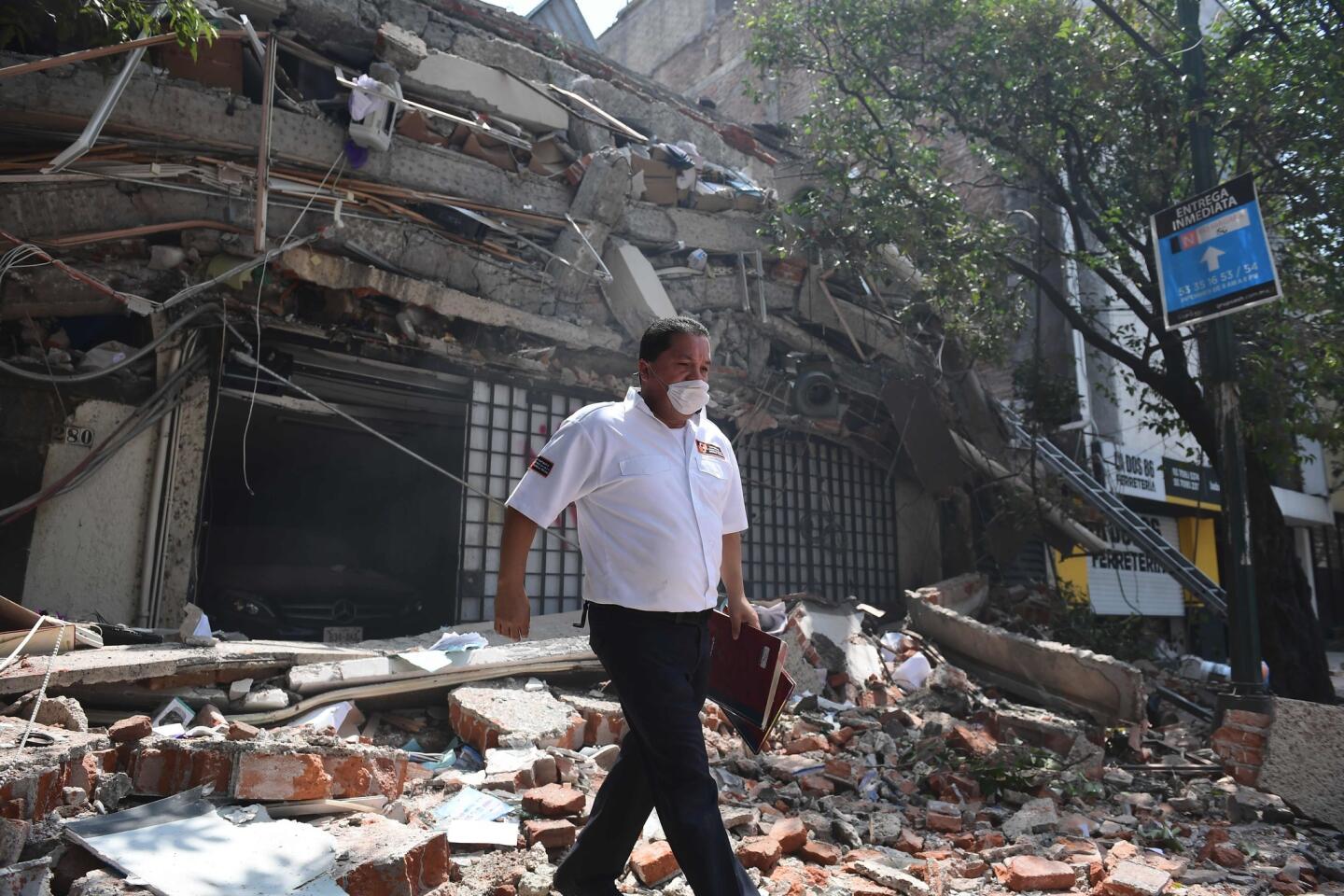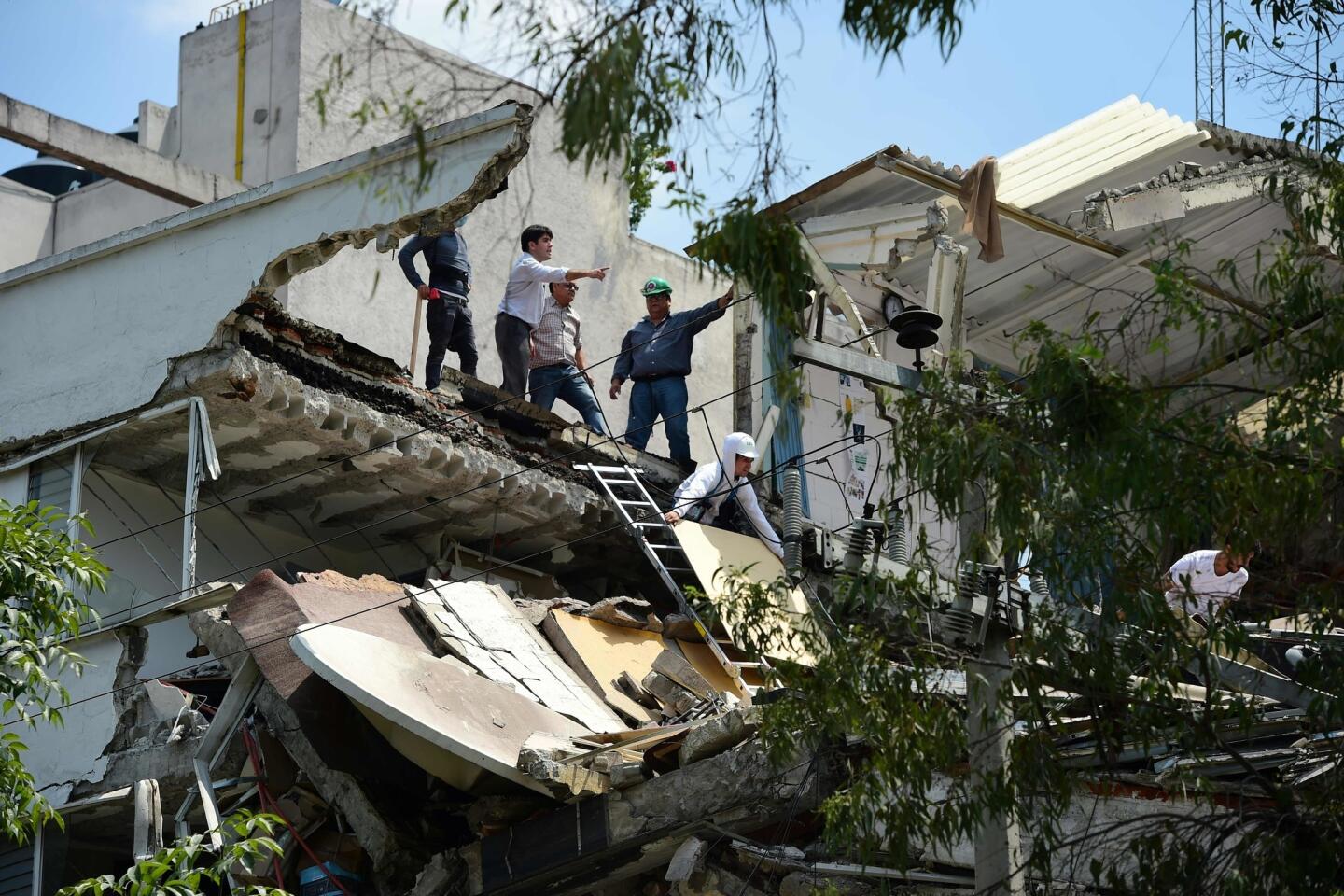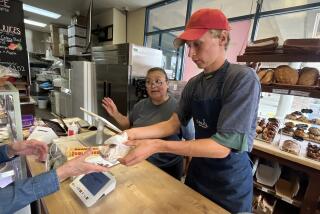Scientists say latest 6.1 aftershock in Mexico is ‘not surprising’
- Share via
Mexico City — A new earthquake sent residents streaming into the streets of Mexico City early Saturday, creating a fresh wave of alarm in a country still reeling from two powerful earthquakes over the last three weeks.
The U.S. Geological Survey said the new temblor, which hit just before 8 a.m. local time with a magnitude of 6.1, was centered about 325 miles southeast of Mexico City in the state of Oaxaca, the region that took the brunt of the magnitude 8.1 quake on Sept. 7.
Saturday’s quake came as rescue crews continued to search for survivors in the ruins of flattened buildings in Mexico City from Tuesday’s magnitude 7.1 earthquake.
Carlos Valdes, director of the National Center for Disaster Prevention, said rescue efforts were briefly paused because of the new earthquake alert. “But immediately seeing that there was no major earthquake and no affected structures, the work continued immediately,” he said. “The search and rescue of living people — that is what is important.”
Mexico City Mayor Miguel Angel Mancera told Mexican television that rescue attempts will continue, with crews concentrating on eight collapsed buildings around the capital in search of an estimated 30 people who could still be alive amid the rubble. Tens of thousands of workers are involved in the effort, including more than 10,500 army and navy personnel, plus 50,000 city employees, Mancera said.
Workers are also inspecting 3,500 buildings reported around the city for structural damage.
Though Saturday morning’s quake did not cause major new structural damage in Mexico City, it claimed at least two lives in the capital. Mancera said two women, ages 52 and 83, apparently died of heart attacks after having nervous breakdowns during the earthquake.
Authorities in the state of Oaxaca said Saturday’s earthquake resulted in two deaths there as well — a woman who was killed when a wall tumbled on top of her, and a man who was attacked by a swarm of bees apparently disturbed by the seismic movement. Both deaths occurred in the town of Asunción Ixtaltepec, said Heliodoro Diaz Escárraga, head of civil protection in the state, speaking to a local radio station.
Mancera said the latest deaths brought this week’s total number of fatalities in the country to 307, including 169 from the capital. Twenty-seven of those killed were children. Eleven people hospitalized remain in serious condition.
Authorities in Oaxaca said the strong Saturday quake caused new damage to homes and other structures already weakened by the Sept. 7 temblor.
That earlier quake, centered off the shore of southern Mexico, killed nearly 100, mostly in Oaxaca and neighboring Chiapas state.
Saturday’s temblor was likely an aftershock of the Sept. 7 quake, officials said.
“We’re calling it an aftershock of the 8.1,” U.S. Geological Survey geophysicist John Bellini said. “An 8.1 is expected to have several aftershocks in the 6 range…. The 6 is not surprising.”
Authorities had registered more than 4,000 aftershocks from the Sept. 7 quake, but Saturday’s appeared to be the strongest. By Saturday evening, authorities had recorded 10 more aftershocks.
Quake alarms sounded throughout Mexico City on Saturday, and spooked residents dashed from homes and hotels. Electrical cables shook, and some buildings swayed.
But most of the damage appeared to be centered closer to the quake, in the state of Oaxaca.
Homes tottering from the Sept. 7 earthquake showed new cracks and in some cases collapsed in the city of Juchitan, the principal municipality on the Isthmus of Tehuantepec. Thousands of people who had to evacuate their homes there on Sept. 7 have been living under plastic tarps.
Outside Juchitan, in the hard-hit town of Asunción Ixtaltepec, where 80% of residences were rendered uninhabitable on Sept. 7, some homes fell or showed new fissures.
A bridge that had been damaged by the earlier quake was split in half and teetering on the verge of collapse following Saturday’s aftershock.
Damage also was reported at a nearby military air base that has been a central point for deliveries of food and other aid to Oaxaca. A hospital was evacuated in the port city of Salina Cruz in Oaxaca state.
Many in the capital remained on edge after Tuesday’s devastating quake.
“People are paranoid, nervous. They don’t know if they can stay at home in any moment or have to run out,” said Mayela Ruiz, 31, one of a number of volunteers handing out food, clothing and other basics in the trendy Condesa district in Mexico City, which suffered extensive damage in Tuesday’s quake. “One’s feelings go from panic to nervousness in a moment.”
Saturday’s quake was felt lightly in the Condesa neighborhood, parts of which have a near-abandoned feel since thousands have evacuated from shaky homes. Some cafes and restaurants reopened Saturday, only to have panicked diners rush out the doors during the aftershock.
Guadalupe Guarrdarama found herself reliving Tuesday’s nightmare. She went out in the street crying, wondering whether a building near her home that has been on the verge of collapse would finally fall.
Guarrdarama works in a restaurant in the Medellin market in the Roma neighborhood, selling hearty fare. After the initial quake Tuesday, she had found herself struggling to breathe as others tried to calm her. She has felt a heavy weight on her chest since and has begun to wonder whether she needs to speak to a psychologist.
“I feel anxious. I don’t feel safe,” she said.
“I feel anguished, afraid,” said Angelica Salas, who was at home in Roma when the aftershock occurred. “I thought the house would fall last time, so you think the same thing.”
Bellini, the USGS scientist, said Saturday’s aftershock occurred at the northern edge of a field of aftershocks that have occurred since the Sept. 7 quake.
“This one is shallower, in the upper part of the crust, but in the northern edge of the aftershock field after the 8,” Bellini said.
The Sept. 7 earthquake was so large that the area of rock underneath the earth that moved was about 2,400 square miles, or roughly half the size of Los Angeles County. There have been more than 100 aftershocks greater than magnitude 4.5.
Tillman is a special correspondent. Sanchez is a member of The Times’ Mexico City bureau. Times staff writers Rong-Gong Lin II in Los Angeles and Andrea Castillo in Mexico City contributed to this report.
ALSO
Despite tense relations, U.S. and Mexico come together for earthquake recovery
The fate of earthquake victim ‘Frida Sofia’ captivated Mexico. But it seems she never existed
Mexico earthquake crumbles concrete buildings, sending deadly warning to California
UPDATES:
7:30 p.m.: This article was updated with a revised death toll.
2:10 p.m.: This article was updated with new casualty figures and comments from Carlos Valdes, director of the National Center for Disaster Prevention.
12:45 p.m.: This article was updated with additional information from the U.S. Geological Survey.
10:30 a.m.: This article was updated with details of damage in Oaxaca state and comments from Mexico City residents.
8:35 a.m.: This article was updated throughout with staff reporting.
This article was originally published at 6:35 a.m.
More to Read
Sign up for Essential California
The most important California stories and recommendations in your inbox every morning.
You may occasionally receive promotional content from the Los Angeles Times.
